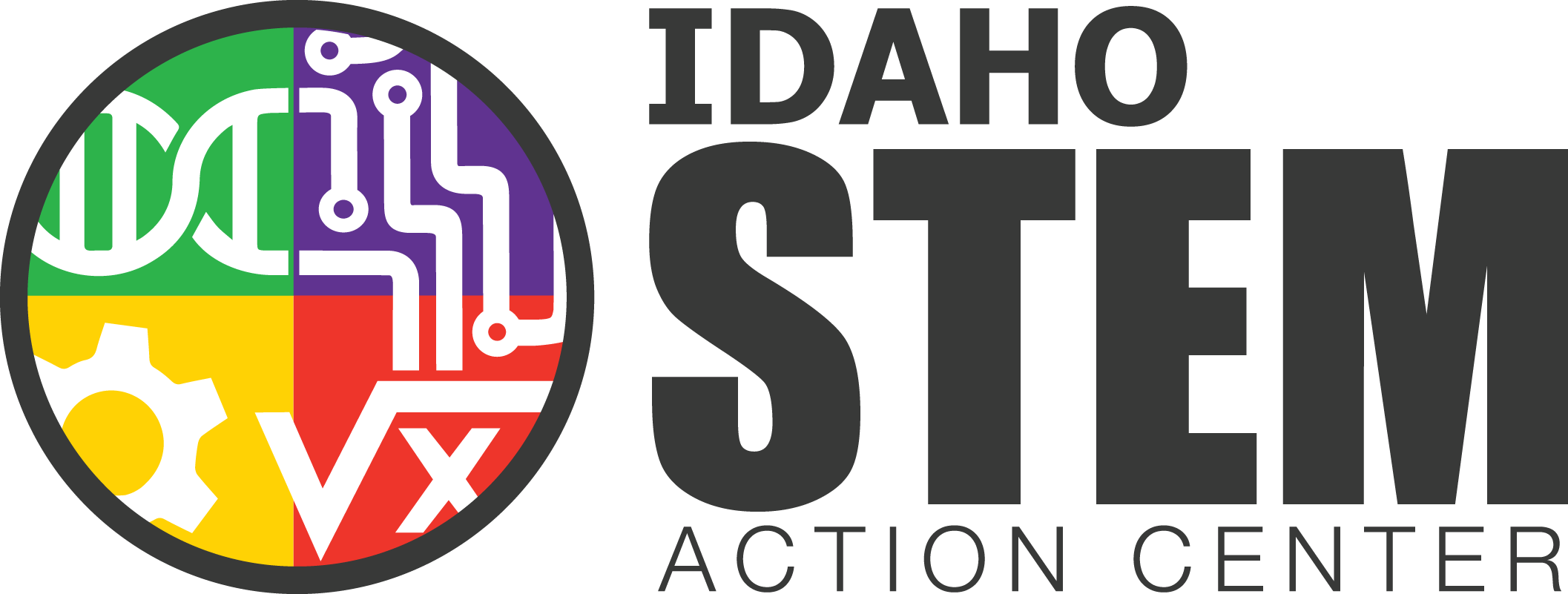Author: its_admin
Bret Kindall at Idaho Career Technical Education & Idaho FFA Association
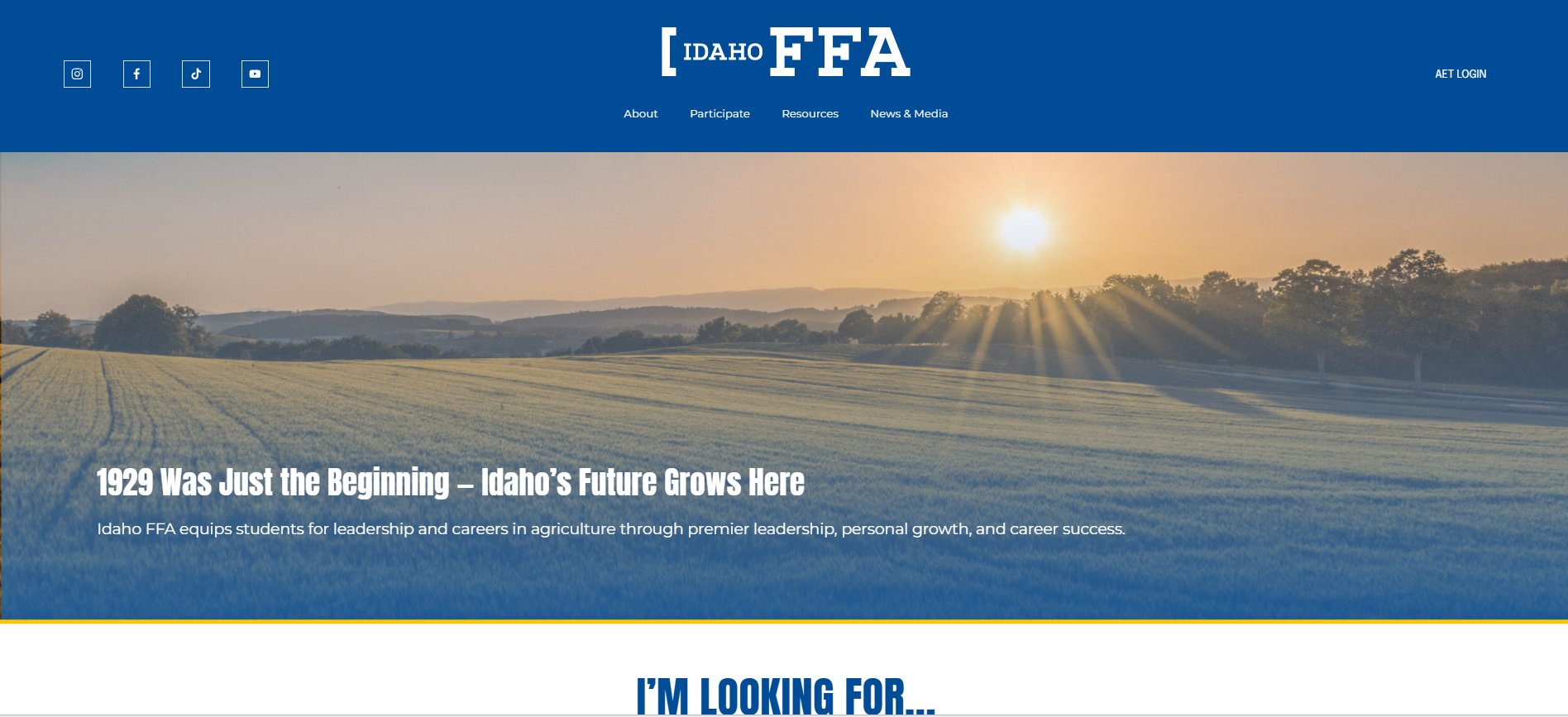 I was tasked with reorganizing the resources available to the agricultural educators across the state, as well as the way the Idaho FFA Association and lateral organizations organize and communicate these resources to those agricultural educators. Years of staff changes in numerous capacities has, over time, allowed resources to be placed across the platforms of various organizations, including the University of Idaho, the Idaho Agriculture Teachers Association, the Idaho FFA Association, the Idaho FFA Foundation, and across the Idaho Ag Ed Listserv. There were numerous instances of agricultural educators needing resources for a particular FFA activity or for new educators needing resources for their courses and having to locate these resources across the multiple organizations in which they existed. Very rarely did early-career educators even realize that particular sites housed certain sets of curriculum or program documents.
I was tasked with reorganizing the resources available to the agricultural educators across the state, as well as the way the Idaho FFA Association and lateral organizations organize and communicate these resources to those agricultural educators. Years of staff changes in numerous capacities has, over time, allowed resources to be placed across the platforms of various organizations, including the University of Idaho, the Idaho Agriculture Teachers Association, the Idaho FFA Association, the Idaho FFA Foundation, and across the Idaho Ag Ed Listserv. There were numerous instances of agricultural educators needing resources for a particular FFA activity or for new educators needing resources for their courses and having to locate these resources across the multiple organizations in which they existed. Very rarely did early-career educators even realize that particular sites housed certain sets of curriculum or program documents.
By the end of my experience, I was able to design and publish a new Idaho FFA website (available at idahoffa.org) and create a master Google Drive that houses all of these documents. A lot of time was dedicated to researching which resources needed to be maintained on the other organizations pages, and much time was dedicated to discussing with these organizations to develop clear plans of transition. It was our goal to not disrupt or make resources unavailable to current ag educators, but we wanted these resources to only appear in one place once they were ready to be disseminated to the profession.
My host site was instrumental in helping me make new connections with the other organizations. While I was familiar with the leadership teams of these organizations, I did not have any personal connection which lent itself to being the most difficult part of the externship. My host site had intentional conversations with each of the organizations to help facilitate my discussion with them. Additionally, I was accessing multiple accounts within the framework of the Idaho FFA Association, which required access levels that most agricultural educators do not have. This was facilitated and managed by my host site, which I greatly appreciate the quick responses and support they provided. I met with them frequently to ensure I was carrying out the vision needed for the project.
This project has broadened my understanding of the complex relationships between the organizations that serve the agricultural education profession. Further, I gained a new appreciation for the work that is done by state-level staff to maintain the day-to-day operations of Idaho CTE and the Idaho FFA Association. I learned of countless new resources that I was entirely unaware of previously, which I intend to utilize in my own program to support my students. Additionally, I do not have a background in website design and file management, and while I consider myself fairly well-versed with computer applications and software, I also gained a new skillset in developing websites using HTML code. I had no prior experience with HTML code and am still a novice in most regards, but I did learn the very basics in order to develop the new website.
While my externship was different than most, I was able to work so closely with Idaho FFA and CTE state staff and I am grateful for this opportunity. I hope the work I completed is beneficial to both late and early career educators as well as agricultural education students across the state.
Grade Level and Subject Taught: 6-12
Kory Kay at Idaho State Department of Education
 I was tasked with reviewing some of the Idaho Workforce Development Council’s work on work-based learning and developing some resources for school leaders to use to begin developing quality work-based learning opportunities in their schools. I read through the standards on work-based learning that had been developed by the Idaho Workforce Development Council and was able to provide some feedback to better align some of the language and formatting with language and formatting used in education content standards. I reviewed work-based learning resources developed by other states to create the start of a work-based learning implementation guide for school leaders in Idaho to use to start and/or evaluate current work-based learning opportunities in their schools. Finally, I create a 1 hour professional development that could be offered to school leaders to give them additional guidance on why work-based learning experiences are valuable for students, what quality work-based learning opportunities look like, and how to get started.
I was tasked with reviewing some of the Idaho Workforce Development Council’s work on work-based learning and developing some resources for school leaders to use to begin developing quality work-based learning opportunities in their schools. I read through the standards on work-based learning that had been developed by the Idaho Workforce Development Council and was able to provide some feedback to better align some of the language and formatting with language and formatting used in education content standards. I reviewed work-based learning resources developed by other states to create the start of a work-based learning implementation guide for school leaders in Idaho to use to start and/or evaluate current work-based learning opportunities in their schools. Finally, I create a 1 hour professional development that could be offered to school leaders to give them additional guidance on why work-based learning experiences are valuable for students, what quality work-based learning opportunities look like, and how to get started.
This was a great experience for me. It gave me the opportunity to work on something I feel passionate about, but knew very little about. Working with Jacque and Brock from the State Department of Education gave me valuable insight to the work they are doing and the passion they have for providing valuable work-based learning opportunities for students in Idaho. They gave me the support and resources I needed to be successful as I worked on this project. I feel that I have gained valuable insight into the work the State has done and the potential for work-based learning opportunities in my school as well as in the state.
Grade Level and Subject Taught: High School Principal
Dee Winegar at Owyhee Produce
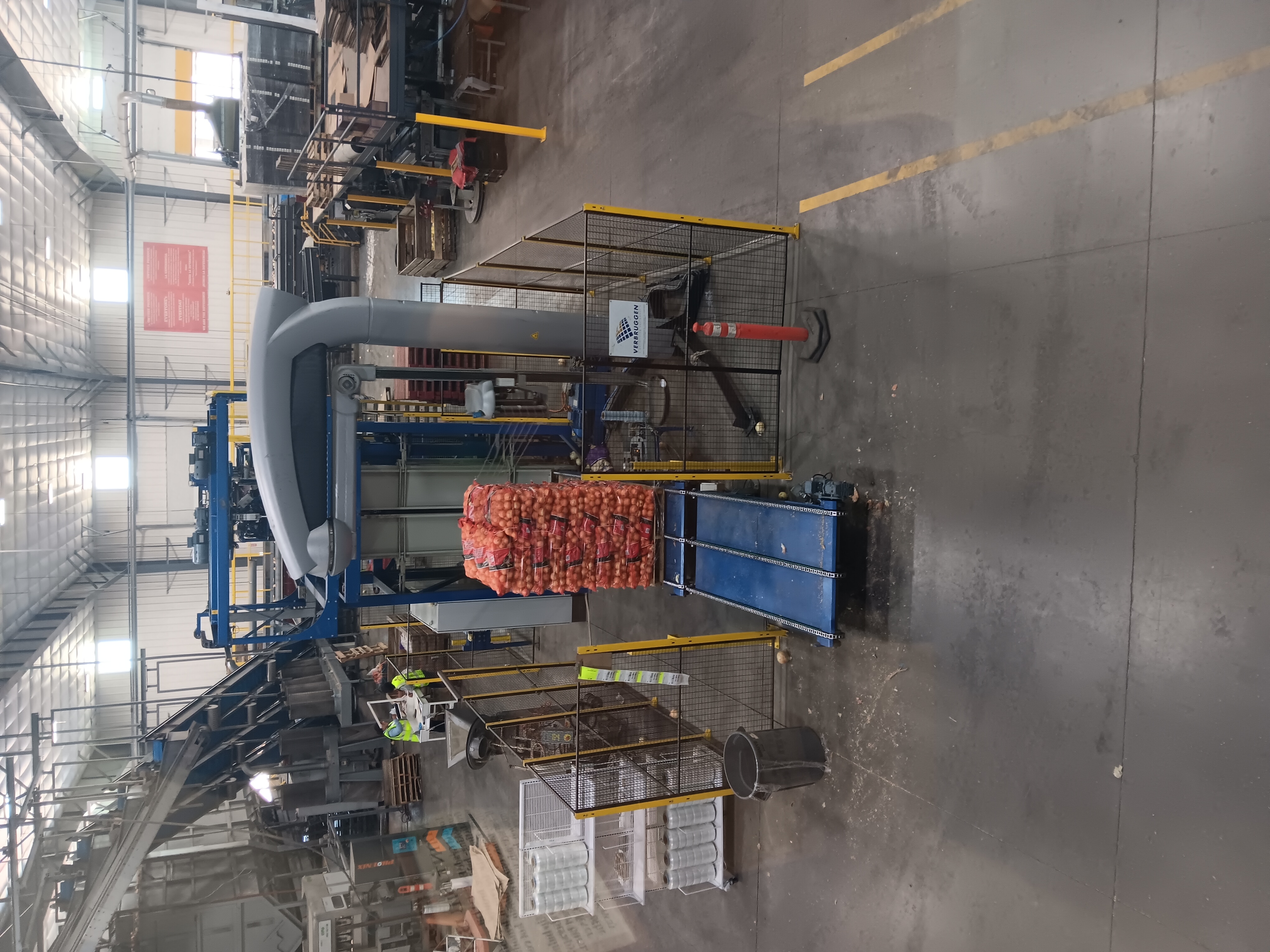 I had the opportunity to extern at Owyhee Produce this summer. As a business teacher, I talk a lot about competitive advantages, and I learned that one of Owyhee Produce competitive advantages is their adaptability in an ever-changing market. I believe another competitive advantage is the “family” atmosphere that they have created, making it an enjoyable place to work.
I had the opportunity to extern at Owyhee Produce this summer. As a business teacher, I talk a lot about competitive advantages, and I learned that one of Owyhee Produce competitive advantages is their adaptability in an ever-changing market. I believe another competitive advantage is the “family” atmosphere that they have created, making it an enjoyable place to work.
In June, I was tasked with learning the job of weighing trucks in the scale house as they harvested onions. I was asked to create directions for this task so that future employees could learn the job quickly. In July, I was tasked with learning how to use the project management tool, monday.com, to help supervisors with tasks, such as onboarding employees. I learned a great deal about project management which directly impacts my teaching. I was especially interested in the agile project management practices, including using scrum meetings and Kanban Boards. I am excited to be able to apply project management to my classes and use these tools to help students learn about project management and use it to become more productive.
Grade Level and Subject Taught: Business Education, 9-12
Joelle Anthon at Girls Scouts of Silver Sage
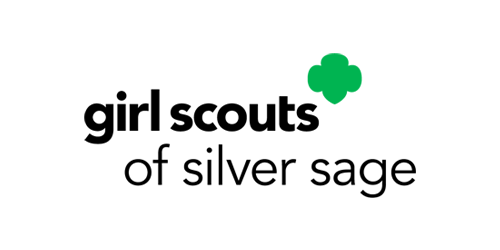 I had the opportunity to work with the Girls Scouts of Silver Sage. I created detailed programs and lesson plans for specific badge requirements for their use next summer at camp. My goal was to complete the detailed lesson plans for seven badges, each requiring several explicit lesson plans. The intention is to make camp and camp sessions run more smoothly for leaders as most of the leg work is now done for the specified badges and to also incorporate some new creative ideas for earning badges. I was able to complete all of the lesson planning for all of the badges I was asked to do. This experience has given me some greater resources for incorporating STEM lessons into my classroom. It has also helped me streamline lesson planning and strengthened my skill set in this area.
I had the opportunity to work with the Girls Scouts of Silver Sage. I created detailed programs and lesson plans for specific badge requirements for their use next summer at camp. My goal was to complete the detailed lesson plans for seven badges, each requiring several explicit lesson plans. The intention is to make camp and camp sessions run more smoothly for leaders as most of the leg work is now done for the specified badges and to also incorporate some new creative ideas for earning badges. I was able to complete all of the lesson planning for all of the badges I was asked to do. This experience has given me some greater resources for incorporating STEM lessons into my classroom. It has also helped me streamline lesson planning and strengthened my skill set in this area.
Grade Level and Subject Taught: Kindergarten all subjects
Carissa Abrams at Girl Scouts of Silver Sage
 I was tasked with designing curriculum for Girl Scout troops to be used to complete merit badges during their 2026 Girl Scout Camps. The Girl Scouts of Silver Sage hold these camps in McCall, Idaho and Swan Valley, Idaho. Each camp centered around a different age range (for example, Cadettes are middle school ages) and merit badge (e.x. Night Owl Badge) that would be earned, as well as a camp theme (e.x. Moonlight Mission). I was able to remotely complete 7 different unique camps and merit badges.
I was tasked with designing curriculum for Girl Scout troops to be used to complete merit badges during their 2026 Girl Scout Camps. The Girl Scouts of Silver Sage hold these camps in McCall, Idaho and Swan Valley, Idaho. Each camp centered around a different age range (for example, Cadettes are middle school ages) and merit badge (e.x. Night Owl Badge) that would be earned, as well as a camp theme (e.x. Moonlight Mission). I was able to remotely complete 7 different unique camps and merit badges.
It was an interesting challenge for me because it used a lot of the skills I have as a teacher, but it also challenged me in many ways. For example, in the classroom, students often demonstrate mastery through quizzes, tests, and projects that are completed and can be tracked. In the Girl Scouts, the girls demonstrate mastery through completing activities. It was also challenging for me to remember that the Scouts would come with different academic skills, and needed to largely show mastery through doing, not writing.
I really enjoyed the personal growth that came from the technology limitations. Educational technology is a huge part of what I do as a teacher. At the Girl Scout Camps, they don’t have wifi and have very limited technology. All of the activities needed to be designed around no-internet or computers. I didn’t realize how much I depended on technology to teach background knowlege of topics. The Girl Scouts do have access to printers and supplies, and I found myself using a lot of printed materials that I created, as well as a lot of hands-on supplies.
Overall, I’m so grateful for the opportunity to work with the Girl Scouts! It helped me realize just how many skills I DO have that can be applied outside of a traditional classroom, and how these skills can be used to help others. This upcoming school year, I’m planning to do more lessons that use less technology and more hands-on STEM materials, like what I designed for the camps. It was a great experience!
Grade Level and Subject Taught: 2nd-4th Grade Gifted and Talented Education (GATE)
Melissa Beckman at University of Idaho College of Engineering
 During my time spent with the College of Engineering, I was tasked with multiple projects. The hosts organized a wonderful two-day tour of their facilities, showing me and the other externs the projects that various engineers were constructing. We got to see recycled wood being turned into homes. We experienced the craft of building circuits, and we even got to view robotic advancements being made to help stroke patients recover.
During my time spent with the College of Engineering, I was tasked with multiple projects. The hosts organized a wonderful two-day tour of their facilities, showing me and the other externs the projects that various engineers were constructing. We got to see recycled wood being turned into homes. We experienced the craft of building circuits, and we even got to view robotic advancements being made to help stroke patients recover.
Our hosts tasked me and my fellow externs with a pretty important job. The College of Engineering students are responsible for taking lessons to the students of the Moscow School District’s After School Program. Our job as externs was to create lessons for the Engineering students to present to the kids. It was quite the challenge, stepping out of my comfort zone of reading and math and learning about space and putting that knowledge to work in the form of science lessons.
My fellow externs and I also spent some time organizing the Engineering Science closet, which is full of items that the students might need as they teach the children. Each item was organized, labeled, and shelved to make it easy to find.
A project that I will be utilizing in my own after school program is the Scratch Computer Program. We externs were privileged to get to spend time with one of the professors at the university as he trained middle schoolers how to use Scratch. I know my own students in Lapwai will benefit greatly from my experience learning that program.
Grade Level and Subject Taught: 3rd Grade, all subjects
Jennifer Harris at Idaho Innovation Center
My externship objectives were to help with the Yellowstone Food Truck Village, where I worked to strengthen community engagement, increase publicity, and promote unity among vendors in order to help the venue gain greater traction and visibility.
During my externship, my goals were centered on strengthening both communication and community. I aimed to serve as a bridge between the venue and its vendors by improving communication and encouraging collaboration among the food truck owners themselves. Another key goal was to explore creative marketing strategies that could bring greater visibility to the village and ultimately increase foot traffic. By studying effective promotional approaches and brainstorming innovative ideas, we were to contribute to boosting sales for the vendors while also helping the village grow as a fun, unified destination for the community.
Throughout my externship, I had the opportunity to turn our goals into action. One of my first responsibilities was meeting with each vendor to discuss their needs, wishes, and ideas for building a stronger sense of community. These conversations helped guide the direction of our work and ensured that everyone felt supported.
I also contributed to the marketing efforts by helping create and distribute advertisements to draw more attention to the village. Beyond marketing, I played a key role in organizing and hosting several recurring events designed to attract families and showcase local talent. These included:
Family Night Carnival (monthly) – a fun, family-centered evening with activities and entertainment.
Eats & Beats (monthly) – a live music night that paired local performers with the food truck experience.
Amateur/Open Mic Night (monthly) – an event that invited community members to share their talents in a welcoming environment.
In addition, I helped build a list of potential future events and initiatives that could serve as long-lasting springboards for the village’s continued growth. These accomplishments not only helped boost publicity and foot traffic but also laid the groundwork for stronger vendor collaboration and a more vibrant community atmosphere.
Grade Level and Subject Taught: 4th Gen Ed
Tami Vandegrift at Gizmo
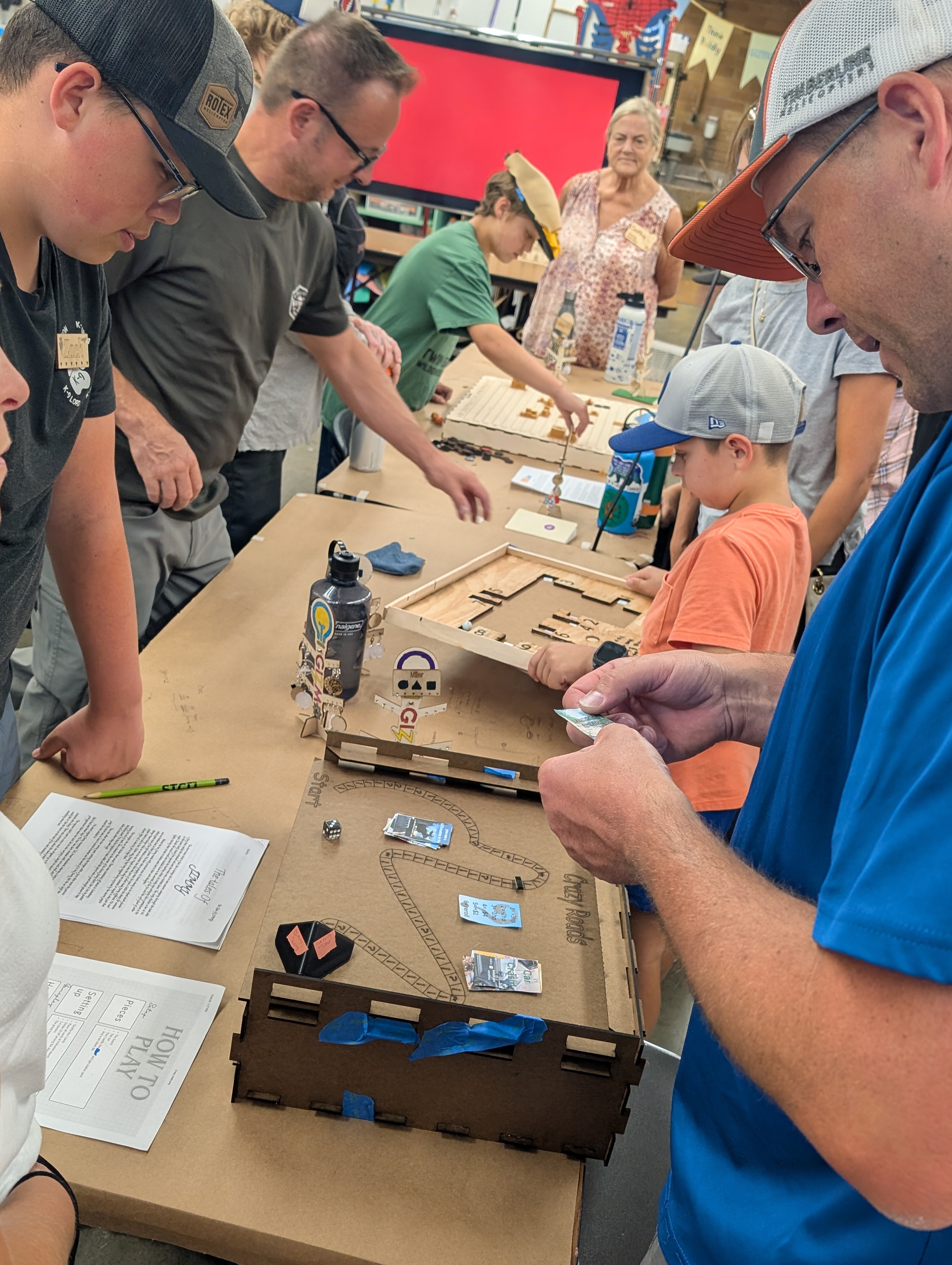 At Gizmo, I and two other externs were tasked with a handful of objectives, however our main task was planning and teaching a two-week exploratory camp for students aged 12+. The intention of this camp was twofold – first, giving students the opportunity to explore and use the tools at GIZMO. Second, to get them thinking about their own communities and what the needs and problems within those communities might be. In preparation for this camp, we first had to brainstorm a concept that students could work on. Next, we worked to set up how we would approach learning to use the tools in the shop. Our team decided that students in this camp will be tasked with crafting an interactive experience about a student-selected problem that they see within their community. This gave students a reason to research their topics and gamify their findings. Through exploring this camp model, I expanded my knowledge in lesson scaffolding, team collaboration, and executing project-based learning opportunities. Our students really seemed to shine when they were given the autonomy to create on their own. The games they developed were well thought out and fascinating to play. On the last day of camp, we invited the student’s families to come and test them out. Here is a photo from our family game day!
At Gizmo, I and two other externs were tasked with a handful of objectives, however our main task was planning and teaching a two-week exploratory camp for students aged 12+. The intention of this camp was twofold – first, giving students the opportunity to explore and use the tools at GIZMO. Second, to get them thinking about their own communities and what the needs and problems within those communities might be. In preparation for this camp, we first had to brainstorm a concept that students could work on. Next, we worked to set up how we would approach learning to use the tools in the shop. Our team decided that students in this camp will be tasked with crafting an interactive experience about a student-selected problem that they see within their community. This gave students a reason to research their topics and gamify their findings. Through exploring this camp model, I expanded my knowledge in lesson scaffolding, team collaboration, and executing project-based learning opportunities. Our students really seemed to shine when they were given the autonomy to create on their own. The games they developed were well thought out and fascinating to play. On the last day of camp, we invited the student’s families to come and test them out. Here is a photo from our family game day!
Grade Level and Subject Taught: K-5 Music & PE
Robin McKinney at Silver Sage Girl Scouts
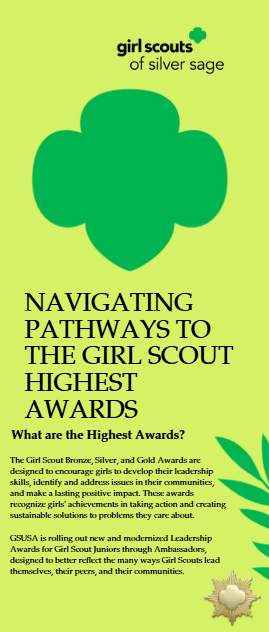 The summer of 2025 marks my third year participating in the externship program. This has been the second summer working with Kristen at the Silver Sage Girl Scouts in Boise. I have very much enjoyed my time working with this program, and especially the Girl Scouts program.
The summer of 2025 marks my third year participating in the externship program. This has been the second summer working with Kristen at the Silver Sage Girl Scouts in Boise. I have very much enjoyed my time working with this program, and especially the Girl Scouts program.
I worked to develop literature about upcoming changes to the highest awards programs. This included a brochure outlining the upcoming changes and new opportunities. I began working on this by familiarizing myself with the highest awards and the changes that were happening to them. The accompanying photo is the cover page of the brochure.
Also, I worked on creating an example slideshow for the Journey in a Day options. I also worked on informative flyers focused on recruiting new members.
These projects have been interesting because it has allowed me to use Canva. I have used this program minimally in the past, so I was excited about this experience. Besides getting to use Canva, another aspect that I have been excited about is learning all the ways the Girl Scouts program can benefit young girls. I did not realize the opportunities that these girls have while participating in this program.
My goal going back into my classroom this fall is to remember that there are programs, such as Girl Scouts, that I can partner with in order to provide a well-rounded educational experience for my students.
I have enjoyed working in the externship program because it allows me to experience other workplaces and to become knowledgeable about programs that are available for my students. I hope to participate in this program again!
Grade Level and Subject Taught: English 10-12
Lorae Bowden at Idaho Innovation Center
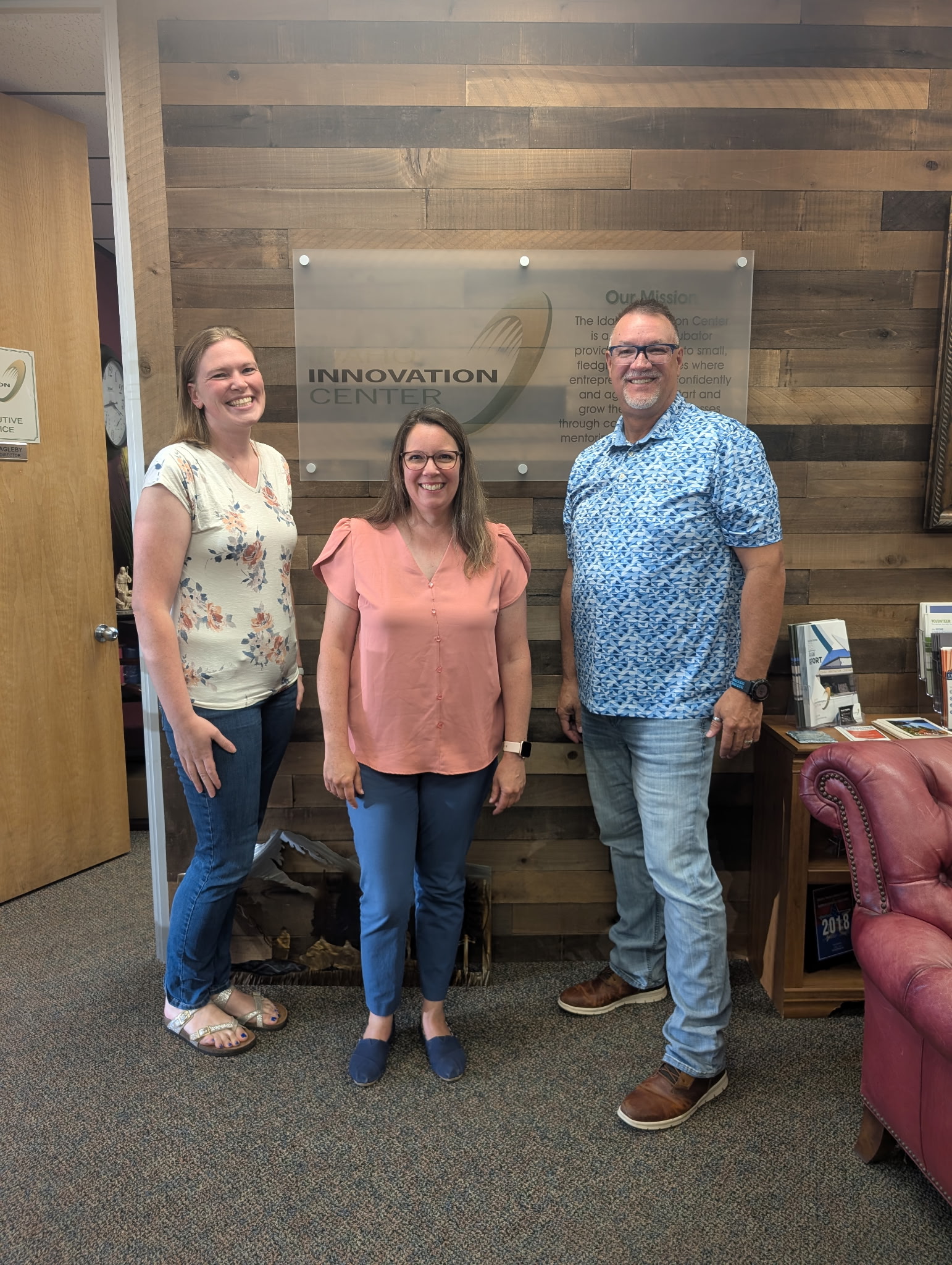 Developing the Future of Entrepreneurship: My Externship at the Idaho Innovation Center
Developing the Future of Entrepreneurship: My Externship at the Idaho Innovation Center
This summer, I had the opportunity to work with the Idaho Innovation Center in Idaho Falls to help launch an annual pitch competition for both adults and youth in Southeastern Idaho. The goal was to provide local youth with the skills to create and present business ideas, and I was tasked with developing resources to support this initiative.
Project Overview
My role was to create promotional materials and a comprehensive curriculum for the youth competition. The materials aimed to raise awareness, while the curriculum was designed to guide youth through each step of developing a business idea and preparing a pitch.
Goals & Outcomes
The main goals were to create engaging flyers, web copy, and an online curriculum to help youth effectively prepare for the competition. I also streamlined the application process by creating a digital application form.
Accomplishments
During my externship, I achieved the following:
- Flyers & Web Copy: I developed materials to introduce the competition to the community.
- Digital Application: I built a Google Forms application to replace paper submissions.
- Curriculum Development: I designed a seven-module curriculum to guide youth through the process of developing and presenting their business ideas and made it into an accessible online course. The modules were as follows:
Module 1: Intro to Teen Pitching (1 hr) – Understand pitch format and competition goals.
Module 2: Finding a Business Idea (1.5 hrs) – Brainstorm and refine a real-world problem.
Module 3: Validating the Idea (1.5 hrs) – Learn customer validation via surveys/interviews.
Module 4: Building a Business Model (2 hrs) – Create a lean business model.
Module 5: Designing the Pitch Deck (2 hrs) – Learn slide creation and pitch structure.
Module 6: Speaking & Presenting (2 hrs) – Practice confident delivery and pacing.
Module 7: Practice & Feedback (2 hrs) – Give and receive feedback to refine the final pitch.
Career Impact
This experience provided valuable business insights, from idea validation to creating a business plan. These skills will help me with fundraising efforts at school and in supporting students’ entrepreneurial growth and knowledge of the economy. Additionally, I gained hands-on experience with tools like Google Forms and Google Classroom, which I plan to use in my 3rd-grade classroom.
Grade Level and Subject Taught: 3rd Grade
Kimberly Bearden at Soleni Shoes
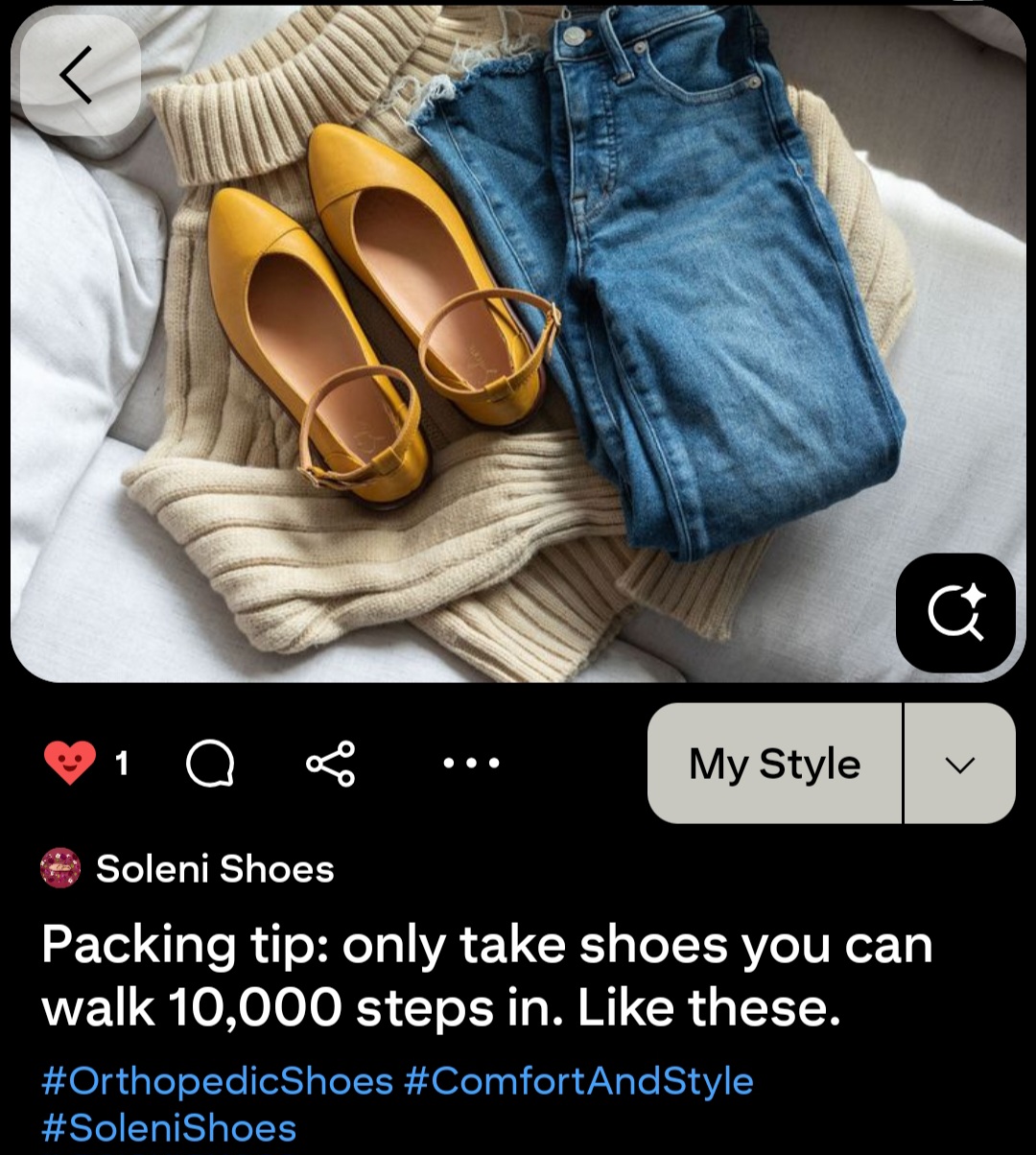 This summer, I had the unique opportunity to participate in the Idaho STEM Externship Program, where educators step out of the classroom and into other work environments. My externship placed me at Soleni Shoes, a locally owned footwear company with a flair for style—and a strong desire to expand its online presence.
This summer, I had the unique opportunity to participate in the Idaho STEM Externship Program, where educators step out of the classroom and into other work environments. My externship placed me at Soleni Shoes, a locally owned footwear company with a flair for style—and a strong desire to expand its online presence.
As someone passionate about both STEM and digital communication, this was the perfect blend of tech and creativity.
At first glance, social media marketing might not scream “STEM,” but dive a little deeper and you’ll find plenty of analytical and strategic thinking behind every post. From understanding Pinterest algorithms to analyzing customer engagement, this externship showed me how data, design, and decision-making converge to drive real business outcomes. My primary focus was to help Soleni Shoes boost their online visibility and sales through Pinterest.
Pinterest isn’t just for mood boards—it’s a visual search engine that thrives on discovery and inspiration. We realized quickly that Soleni’s beautifully crafted orthopedic shoes were a perfect fit for the platform. I worked on creating Pin descriptions to increase visibility in searches, designing visually appealing Pins that reflect Soleni’s brand aesthetic, and analyzing metrics like impressions, saves, and link clicks to see what worked for users.
Using Pinterest, I worked with scheduling tools and engagement analytics to identify peak posting times and track audience demographics.
This externship taught me more than I ever expected. Digital marketing is data-driven. Success comes from testing, analyzing, and adapting strategies—not just pretty pictures. Small businesses benefit enormously from STEM skills. Whether it’s data analysis, design tools, or systems thinking, STEM can power growth in any industry.
The Idaho STEM Externship gave me a meaningful way to apply STEM in the real world, not just in a lab or classroom. It also gave me a chance to support a local business and watch our work make a real impact.
If you’re considering an externship, especially through a STEM lens, don’t overlook fields like marketing, design, or entrepreneurship. You might be surprised by how much STEM is hiding in plain sight.
Grade Level and Subject Taught: 7/8 Math and Science
Chelby Smith at University of Idaho College of Engineering
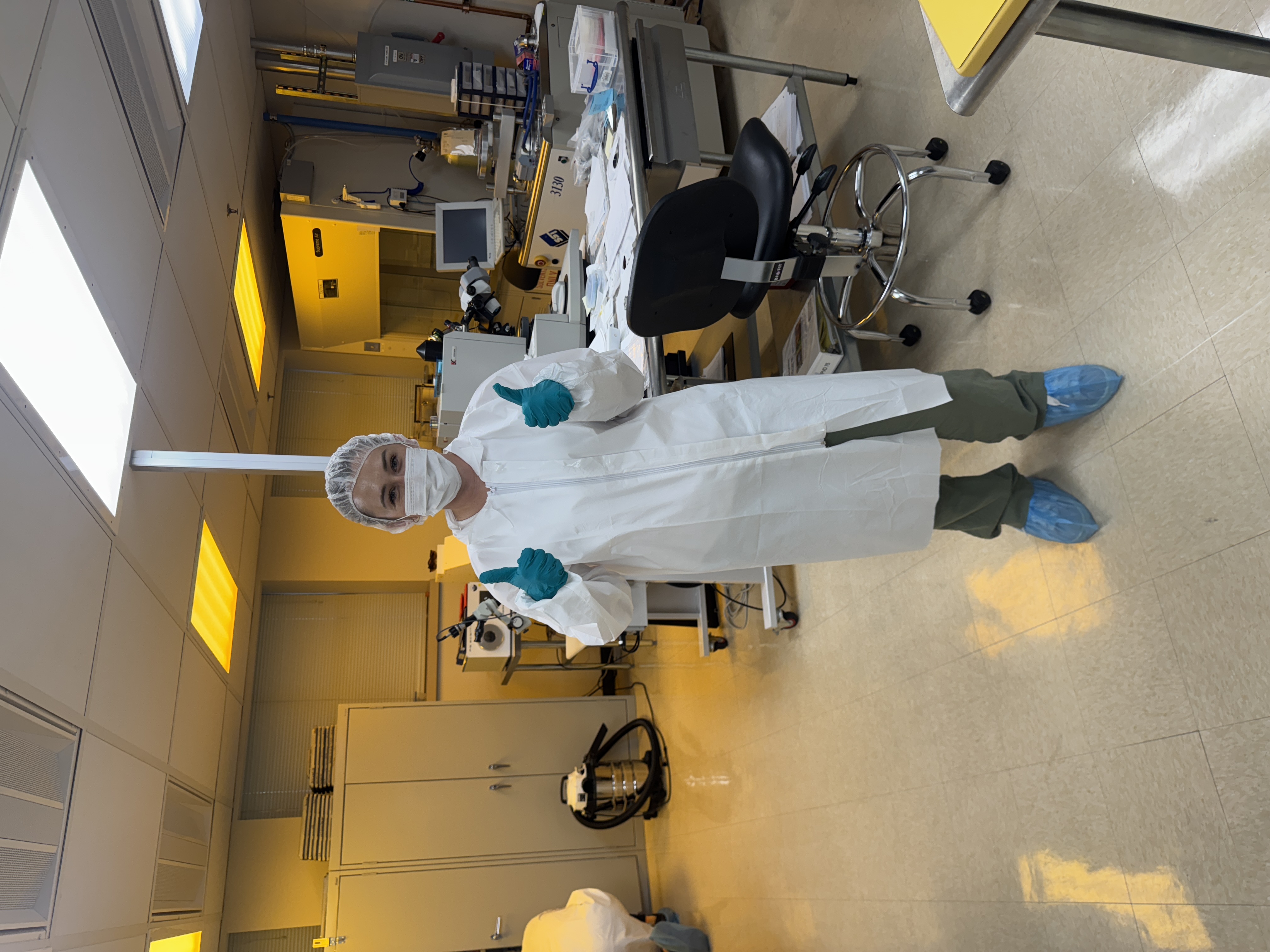 This summer, I had the opportunity to serve as an educator extern at the University of Idaho College of Engineering. My work focused on creating lessons that integrate the engineering design process in ways K–12 and especially K–8 students can engage with. These lessons will be used in the college’s Adventure Club, where engineering ambassadors lead hands-on STEM activities with elementary students. I also had the chance to assist with the middle school coding camp, guiding students as they explored programming and problem-solving through creative projects.
This summer, I had the opportunity to serve as an educator extern at the University of Idaho College of Engineering. My work focused on creating lessons that integrate the engineering design process in ways K–12 and especially K–8 students can engage with. These lessons will be used in the college’s Adventure Club, where engineering ambassadors lead hands-on STEM activities with elementary students. I also had the chance to assist with the middle school coding camp, guiding students as they explored programming and problem-solving through creative projects.
As a 6–8 teacher, this experience was especially valuable. I learned about the wide array of fields engineering incorporates and gained insight into the research and projects currently underway at the university, as well as the hopes for future innovation. Talking directly with graduate students and professors gave me a clearer sense of the foundational skills I can build into my own classroom, helping students start to “think like engineers” early on.
This externship not only gave me practical classroom resources but also strengthened my understanding of how to connect real-world engineering practices to middle school learning. I returned inspired to make my lessons more hands-on, inquiry-based, and reflective of the exciting opportunities waiting for students in STEM.
Grade Level and Subject Taught: 6/7/8 business management, marketing, digital media
Craig Cook at Swellfox
I am working with Swellfox to create a series of videos and teacher resources to introduce the basic concepts of electricity. Our objective was to create a unit with 8 lessons on the basic understanding and different components of electricity. This would be helpful for students from the middles school level up to post-secondary students studying electrical engineering. What I did during the externship was work closely with the production team to work out a script, review and suggest edits for final video after editing, and provide the teacher resources for the lessons. This was a very interesting project, and I learned a lot. It helped me and Swellfox to examine different teaching strategies to help with mastery of a concept instead of surface level comprehension. While we didn’t quite make it to 8 videos, we are well on our way to the 3rd one. This has been a valuable lesson in taking a big overall vague project and breaking it up into one step at a time. This has had a significant impact on my teaching perspective and teaching style. I feel much more motivated to be the best teacher and this experience has taught me that preparation is the key. This has definitely reignited the spark that made me want to be a teacher in the first place. I am excited about the new year and will continue to partner with Swellfox to get our project done.
Grade Level and Subject Taught: 7th Grade Life Science, 8th Grade Earth Science, 9th Grade Physical Science, 10th Grade AP Biology, 11-12th Grade Dual-Credit Anatomy, 11-12th Grade Physics
Lisa Mashburn at NCCE
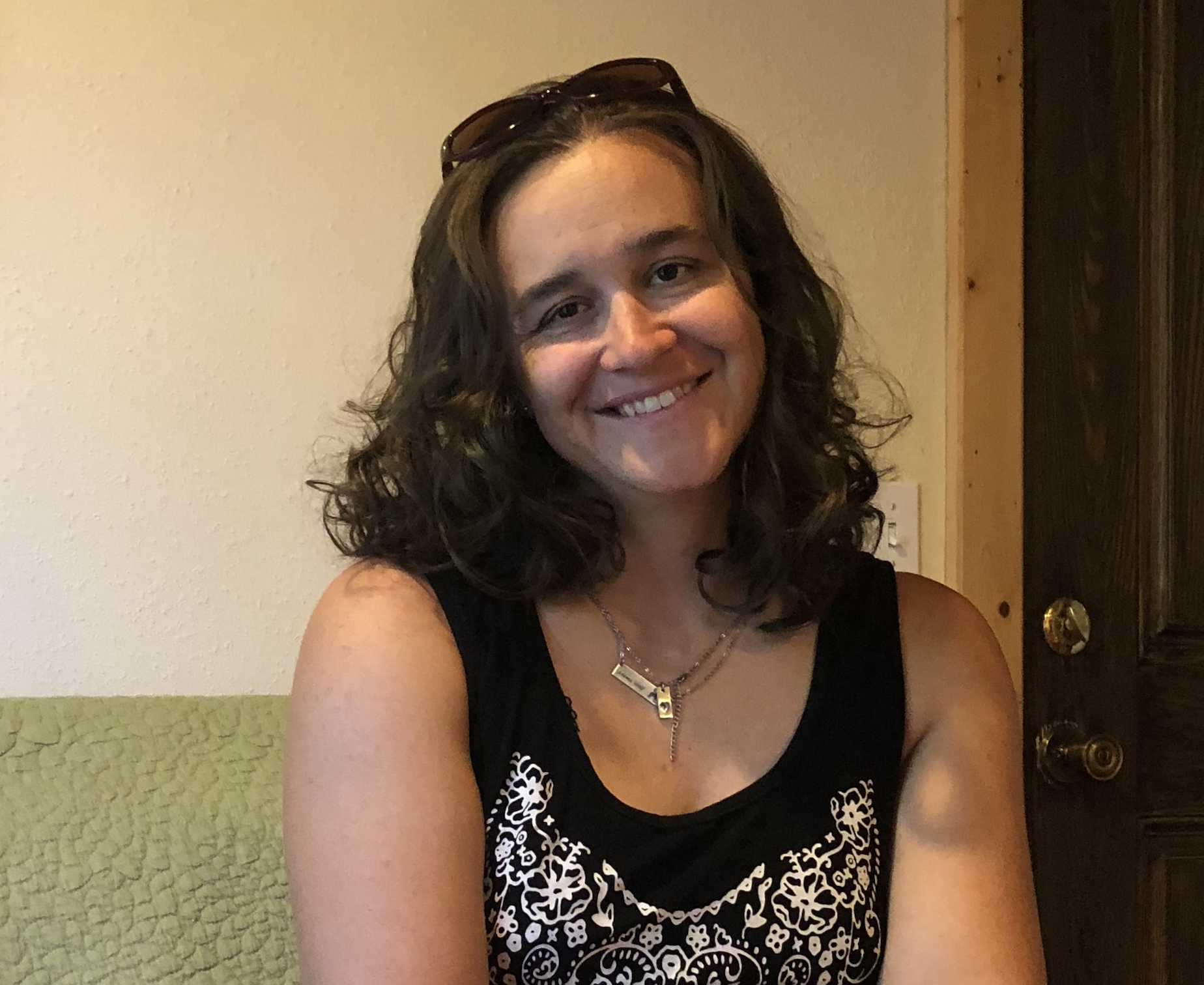 A Teacher’s Passion for STEM: My Idaho Externship Experience
A Teacher’s Passion for STEM: My Idaho Externship Experience
My name is Lisa Mashburn, and after 15 years in the classroom, I’ve learned that a teacher’s most important job is to constantly evolve. That’s why I was so excited to participate in the Idaho STEM Externship Program. As a fifth-grade teacher with a master’s in e-learning, I’m always looking for new ways to make learning more engaging for my students. This externship with the Northwest Council for Computer Education (NCCE) was one of the most educational experiences I have participated in.
It’s one thing to teach STEM and technology in the abstract, but another entirely to see it in action in a real-world, work environment. By hosting educator externs, NCCE helps bridge the gap between classroom learning and the professional world, directly enhancing the quality of STEM education for students.
I learned so much more than just new platforms and engaging tools. I gained a deeper understanding of how to better engage my students by connecting what they learn in my classroom to their future careers. I believe, “I will value this experience for years to come. Technology is a powerful bridge that connects us to the world, but it’s teachers who guide students across the vast expanse.”
It is my responsibility as an educator to continually embrace and learn from technological advances. This internship allowed me to do just that, giving me the tools and perspective to bring the wonders of STEM into my classroom and better serve my students and community.
Grade Level and Subject Taught: 5th Grade
Vickie McCullough at Girl Scouts of Idaho
 This summer, I had the unique opportunity to partner with the Girl Scouts of Silver Sage in Idaho to bring new life to the patch program. Patches have been a fun and meaningful way for Girl Scouts to explore new interests, build skills, and celebrate their accomplishments. But like many traditions, some of the programs had grown quiet over time. That’s where our project came in!
This summer, I had the unique opportunity to partner with the Girl Scouts of Silver Sage in Idaho to bring new life to the patch program. Patches have been a fun and meaningful way for Girl Scouts to explore new interests, build skills, and celebrate their accomplishments. But like many traditions, some of the programs had grown quiet over time. That’s where our project came in!
Together, we set out to revive the patch program with fresh ideas and updated activities that reflect the needs and interests of today’s girls. We wanted to make sure these patches weren’t just colorful designs for sashes and vests, but true experiences that help Girl Scouts grow, learn, and connect with one another.
We spent time first brining a Summer Reading Program for the girls to participate in over the summer. This was a new patch for the girls, and we were excited to see the documentation book logs being completed and turned in. We introduced the patch as a scavenger hunt so that girls had the freedom to choose literature that was applicable to their interests while providing them a springboard of ideas.
We also spent time organizing and formatting for ease of use and included opportunities for girls to have online resources that supported the work and the patch that they were working on. The Idaho Potato Patch provided some excellent ideas for girls to get to know this famous Idaho vegetable.
Reviving the patch program wasn’t just about creating activities—it was about creating pathways for discovery and action. Whether it’s STEM, mental health, community service, or outdoor adventure, patches give girls the chance to dive into something new, try it out, and walk away with both confidence and a tangible reminder of what they achieved.
Working with the Girl Scouts of Idaho on this project was such a rewarding experience. My eyes were opened to the work, learning, and growth that is offered to young women through this remarkable program.
Grade Level and Subject Taught: Superintendent
Caleb Drechsel at Gizmo Makerspace
Gizmo – a Makerspace in Coeur d’Alene, Idaho – challenged us to design a week-long camp for students 12+ to identify a problem in their lives, community, or the world and design a boardgame from scratch! We wanted to engage students in real-life skills such as brainstorming, prototyping, design thinking, troubleshooting, and presenting their findings while using a diverse set of tools – from laser cutters, CNC-machines, 3D printers, industrial printers, soldering, and circuitry to the good ole hammer, drill, and glue gun. We spent a month learning the tools of the Makerspace, exploring local industries and the tools and skills they look for in future workers, and crafting curriculum based on Idaho technology and STEM standards. After a week of exploring the principles of design, practicing grit and perseverance in the collaboration and prototyping process, and surviving the heat, a group of ten students presented five original play-tested board games to their community – including: Crazy Drive – a game about drivers safety and education; Fireline – a strategy game about fighting wildfires; and Passing Through – a role-playing game teaching real-life coping skills.
As an English teacher, the world of my teaching approach expanded within in the walls of the Makerspace. Working with colleagues from other districts and in the community, I had to confront how much of my teaching had been limited by paper and presentations. I left with a better awareness of the college and career skills needed in our state and our world and the confidence to bring that real world into my classroom. Did you know programming Micro:bits can be used to teach sentence structure and syntax? What if simple tools could help your students manifest their conceptual learning? How can the art of prototyping overhaul your teaching of the writing process?
Grade Level and Subject Taught: High School (9-12): English, Speech/Debate
Hali Goodrich at Veterans Chamber of Commerce
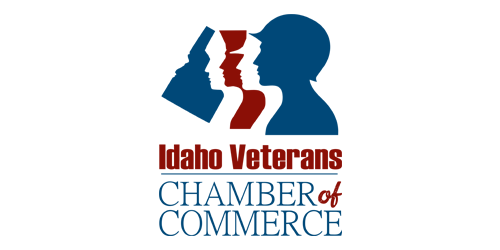 The project I was tasked with was organizing and centralizing donor relations information for the Veterans Chamber of Commerce. This nonprofit has been almost entirely grant-funded for the history of the organization, and they are looking forward to a more sustainable private revenue. This summer was largely spent compiling past data and contacts to help VCC move forward. The second piece of the project was building an action plan to help guide the VCC on next steps in data management and software necessary to augment how they track donors.
The project I was tasked with was organizing and centralizing donor relations information for the Veterans Chamber of Commerce. This nonprofit has been almost entirely grant-funded for the history of the organization, and they are looking forward to a more sustainable private revenue. This summer was largely spent compiling past data and contacts to help VCC move forward. The second piece of the project was building an action plan to help guide the VCC on next steps in data management and software necessary to augment how they track donors.
I feel like I accomplished quite a bit in the realm of data organization. It was impactful to see data from the past put into one central location. I learned a lot by the way of Excel, client revenue management systems, and understanding more about non-profit funding and why it is important. It was eye-opening to see what different events or fundraisers were effective and how the data impacts VCC’s future success in funding campaigns.
This internship impacted my understanding of how technology can have a positive impact in a small company, and that the organization and communication programmed into the software or applications utilized by an organization matters!
Grade Level and Subject Taught: High School English and Spanish
Korrin Falk at City of Nampa Public Works
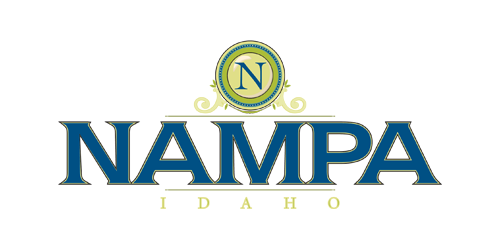 This summer, I was an Extern for the City of Nampa in the Public Works Department. I had the opportunity to learn about some of the employment opportunities within the Public Works Department by shadowing and touring with different professionals. I rode on a chip sealing machine, saw the traffic center, and learned about storm drains. I was also able to spend some time at Nampa’s Water Renewal Facility. There, I met several plant operators, lab technicians, and learned about the bug team.
This summer, I was an Extern for the City of Nampa in the Public Works Department. I had the opportunity to learn about some of the employment opportunities within the Public Works Department by shadowing and touring with different professionals. I rode on a chip sealing machine, saw the traffic center, and learned about storm drains. I was also able to spend some time at Nampa’s Water Renewal Facility. There, I met several plant operators, lab technicians, and learned about the bug team.
My extern project was centered around designing a curriculum for elementary teachers to use when they take their students on a tour of the Water Renewal Facility. Specifically, I created two mini-units that can be used in 4th- and 5th-grade classrooms. One is centered around geology and aquifers, and the other on ecosystems and decomposers.
At first, this seemed like a somewhat simple task. I knew that one of my biggest challenges would be to quickly learn enough about the complex process of water renewal to create lessons. The team I was working with was amazing! They were ready to help, send information, answer questions, and provide feedback. Learning about Water Renewal was exciting, and I gained a much deeper understanding of Nampa’s One Water Cycle. This year, when I teach our 4th-grade Idaho unit, I plan to use water as the connecting point for my students during our unit.
Throughout the summer, I loved seeing small parts of other professions. It is interesting to learn about other people’s everyday world. I would meet someone, learn about their job, and often think of a student whom I know would be interested. So many STEM job opportunities are located within our cities. I look forward to connecting students with STEM professionals and to providing more context and purpose for what we learn in the classroom.
Grade Level and Subject Taught: 4th Grade
Talia Viera at Summit Innovation Lab
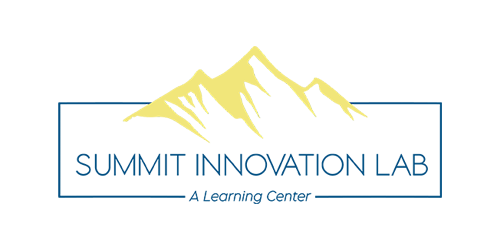 During the summer I was given the opportunity to extern at Summit Innovation Lab, a STEM Learning Center that hosts education and activities for students in elementary and middle school. The summer was made up of different STEM-themed weeks, such as coding or engineering, and each week there would be anywhere from four to fifteen students ranging in ages from 5-13. As an ELA teacher, I didn’t have an extensive knowledge STEM before starting my externship, and my goal for the summer was to broaden this knowledge so that I could better understand and give resources to my students who want to pursue STEM-related careers. I found that the students I worked with at Summit were extremely kind, smart, and creative, and they excited to learn new concepts and share their ideas. They were given ample time during the day to explore and experiment, as well as play at the local park during the hour before lunch. On Fridays we went to the river for an hour or two, and the kids played in the water and in the sand. While at Summit I saw students trying new things, taking new approaches, and collaborating with others, and I never saw anybody give up or say a project was too difficult to complete. When we “failed,” they would make changes and try again. When we “succeeded,” they worked to make it better. I learned a lot about STEM while at my externship, and though I was working with students younger than those I teach during the school year, I was able to take many different skills and strategies and apply them to my classroom teaching. I am very grateful for this experience and am glad to have spent my summer at Summit.
During the summer I was given the opportunity to extern at Summit Innovation Lab, a STEM Learning Center that hosts education and activities for students in elementary and middle school. The summer was made up of different STEM-themed weeks, such as coding or engineering, and each week there would be anywhere from four to fifteen students ranging in ages from 5-13. As an ELA teacher, I didn’t have an extensive knowledge STEM before starting my externship, and my goal for the summer was to broaden this knowledge so that I could better understand and give resources to my students who want to pursue STEM-related careers. I found that the students I worked with at Summit were extremely kind, smart, and creative, and they excited to learn new concepts and share their ideas. They were given ample time during the day to explore and experiment, as well as play at the local park during the hour before lunch. On Fridays we went to the river for an hour or two, and the kids played in the water and in the sand. While at Summit I saw students trying new things, taking new approaches, and collaborating with others, and I never saw anybody give up or say a project was too difficult to complete. When we “failed,” they would make changes and try again. When we “succeeded,” they worked to make it better. I learned a lot about STEM while at my externship, and though I was working with students younger than those I teach during the school year, I was able to take many different skills and strategies and apply them to my classroom teaching. I am very grateful for this experience and am glad to have spent my summer at Summit.
Grade Level and Subject Taught: 10th Grade ELA
Samual Smith at University of Idaho: College of Engineering
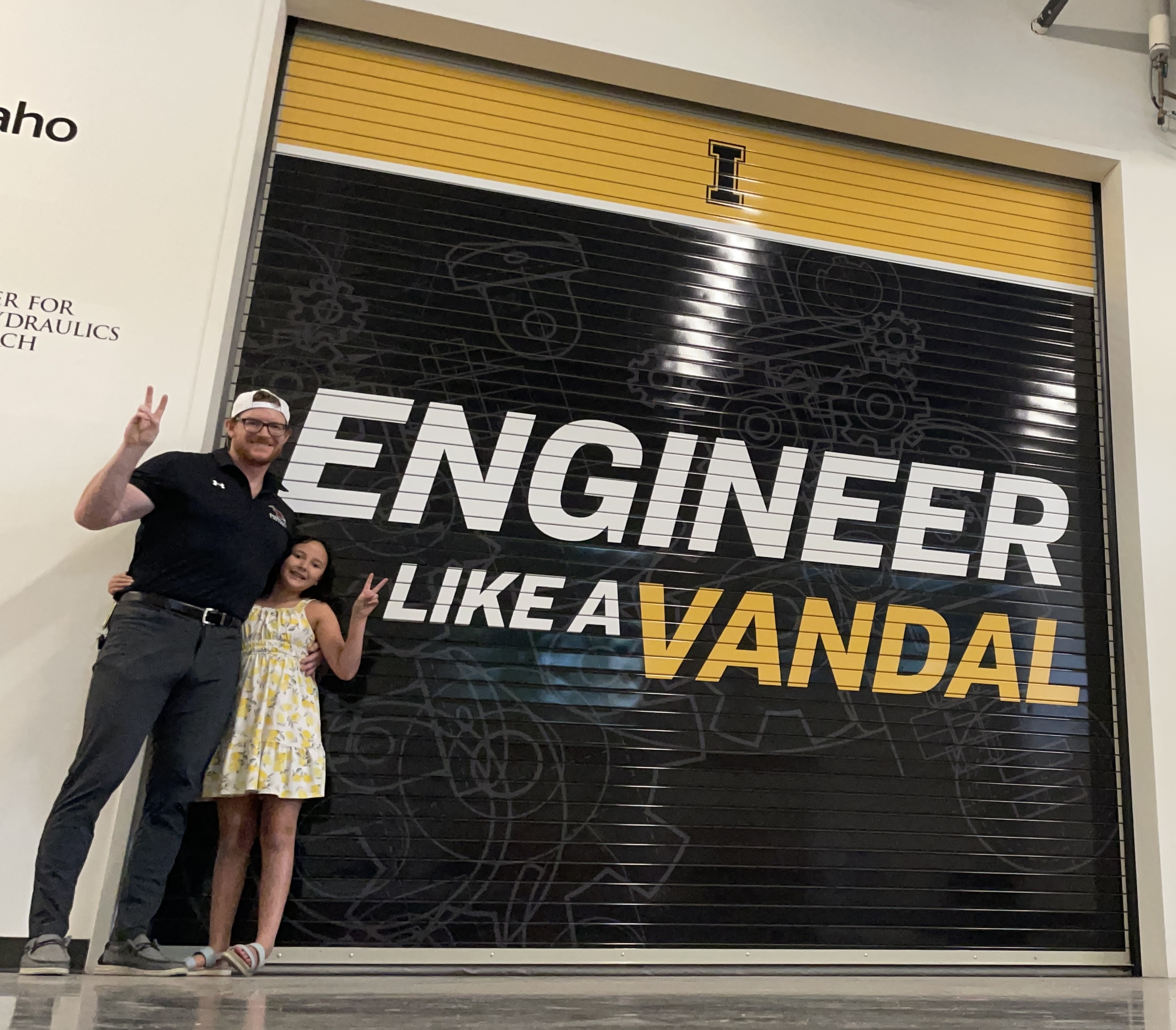 This summer I had the chance to work with middle school students at the University of Idaho Coding Camp in Boise, where I taught them how to program using Scratch and helped them dive into coding with the mBot robot. One of the highlights was being able to bring my daughter along as my “assistant.” Watching her sit alongside the other students, learning, experimenting, and sharing in the excitement made the experience even more meaningful. Together, we saw students light up with pride when their robot moved or their Scratch game finally worked—it was a reminder of how powerful hands-on learning can be.
This summer I had the chance to work with middle school students at the University of Idaho Coding Camp in Boise, where I taught them how to program using Scratch and helped them dive into coding with the mBot robot. One of the highlights was being able to bring my daughter along as my “assistant.” Watching her sit alongside the other students, learning, experimenting, and sharing in the excitement made the experience even more meaningful. Together, we saw students light up with pride when their robot moved or their Scratch game finally worked—it was a reminder of how powerful hands-on learning can be.
In addition to the camp, I also helped design activities for the College of Engineering’s Adventure Club, an afterschool program that introduces elementary students to engineering in a fun and interactive way. I worked on lessons like binary communication games, human circuit roleplays, and simple builds such as popsicle stick flashlights and buzzers. These activities were designed to make big ideas like coding, circuits, and semiconductors approachable for kids. Contributing both in the classroom and behind the scenes gave me the chance to inspire students directly while also creating resources that future ambassadors will continue to use.
Grade Level and Subject Taught: Secondary
Dan Gies at Franz Witter Nursery
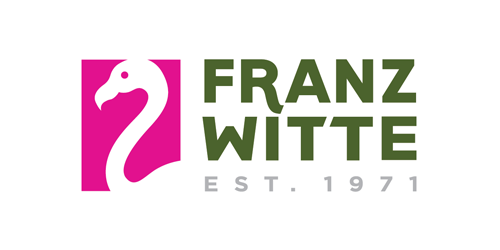 I wanted to express my heartfelt gratitude for the opportunity to work at the plant nursery retail area of Franz Witte. This experience allowed me to fulfill the project’s goals of gaining insight into an entry-level retail position and enhancing my knowledge of plants and botanical sciences.
I wanted to express my heartfelt gratitude for the opportunity to work at the plant nursery retail area of Franz Witte. This experience allowed me to fulfill the project’s goals of gaining insight into an entry-level retail position and enhancing my knowledge of plants and botanical sciences.
Throughout my time, I actively engaged in watering routines, plant care, customer service, and even had the chance to ride along with the landscaping installation team. Each week, I grew more confident in addressing customer inquiries and collaborating with a team of garden experts. This experience is invaluable as it directly benefits our classroom’s life cycles unit, where students raise seedlings from seed germination.
Additionally, I’m excited to share that I now have a network of professionals who can enrich our curriculum with presentations about their career paths in landscaping and plant care. The friendships and support I gained during this internship have truly made a lasting impact.
My teaching style will also evolve as I become more aware of the real-world applications of math, reading, and science in daily work, particularly in our community’s landscaping industry.
Thank you once again for this incredible opportunity.
Best regards,
Dan Gies
Grade Level and Subject Taught: 3rd
Averie Newsome at Magic Valley Boys & Girls Club
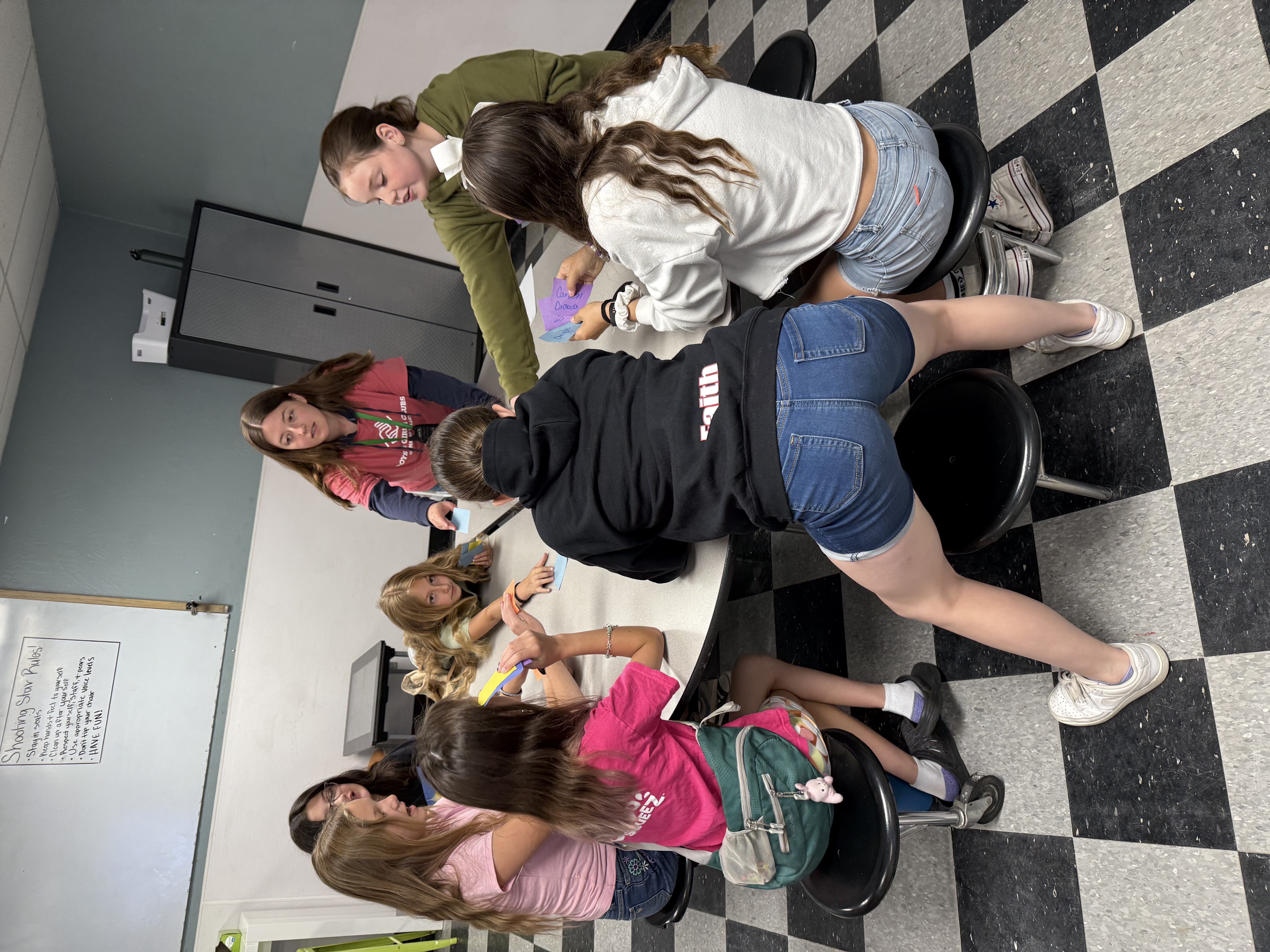 This summer, I had the opportunity to complete an externship at the Boys & Girls Club, where I was tasked with designing and leading hands-on STEM activities for elementary and middle school students. The overall goal of my project was to spark curiosity, show kids that science can be fun and approachable, and encourage them to see themselves as problem solvers and innovators. I wanted the activities to go beyond “just experiments” and instead help students connect science to their everyday lives.
This summer, I had the opportunity to complete an externship at the Boys & Girls Club, where I was tasked with designing and leading hands-on STEM activities for elementary and middle school students. The overall goal of my project was to spark curiosity, show kids that science can be fun and approachable, and encourage them to see themselves as problem solvers and innovators. I wanted the activities to go beyond “just experiments” and instead help students connect science to their everyday lives.
During my time at the Club, I created a week-long curriculum that mixed fun challenges with meaningful learning. For example, students participated in a nutrition week where they tracked their eating habits and learned how food fuels their bodies, tested their reaction times with a ruler drop experiment to explore human physiology, and worked through a low-prep escape room I designed to build collaboration and problem-solving skills. We also explored engineering concepts by creating simple structures and tinkering with “what-if” scenarios that allowed students to experiment and adapt their designs. Each activity was structured to balance engagement, teamwork, and scientific reasoning.
The intended outcome of this work was twofold: to make STEM more engaging for students who may not typically be exposed to enrichment activities outside of school, and to give them the chance to practice critical thinking in a fun, supportive environment. Over the course of the program, I watched students grow in their willingness to try new things, ask questions, and work together to solve challenges. Seeing their excitement when they succeeded—and even their resilience when they didn’t get something right the first time—was one of the most rewarding parts of the externship.
This experience also had a direct impact on my career knowledge and teaching style. It pushed me to be more creative in how I design lessons, thinking not only about the content but also about how to capture students’ attention in a fast-paced, informal learning setting. I gained a deeper appreciation for inquiry-based learning and the importance of scaffolding challenges so that every student can participate meaningfully. I also saw firsthand how flexibility and a sense of play can make science more accessible.
Ultimately, my externship at the Boys & Girls Club reinforced my passion for making science education both rigorous and enjoyable. It gave me new strategies for engaging learners and confirmed my commitment to helping students discover their own potential in STEM.
Grade Level and Subject Taught: 4-6 STEM
Shylo Garrett at NCCE
My Summer Externship with NCCE
This summer, I had the opportunity to complete an externship with the Northwest Council for Computer Education (NCCE), and it was an experience that stretched my skills, deepened my understanding of educational technology, and gave me a unique view of what goes into supporting educators beyond the classroom.
The Project and Its Goals
My externship was designed to give me hands-on experience with how a leading educational organization supports teachers, administrators, and students across the region. The goals were twofold: first, to provide NCCE with support in their communications and conference planning, and second, to give me insight into how educational initiatives are shared and scaled across a wider community.
What I Accomplished at NCCE
During my time with NCCE, I worked on a variety of projects that let me flex my communication and organizational skills:
Writing Blog Posts: I created blog posts that highlighted tools, strategies, and stories relevant to educators.
Creating Social Media Content: I designed posts that engaged NCCE’s audience and helped share resources with their growing online community.
Crafting Newsletter Articles: I contributed to NCCE’s monthly newsletters, writing content to keep educators informed and inspired.
Screening Conference Submissions: One of my favorite roles was reviewing session proposals for NCCE’s annual conference in February in Seattle. This gave me firsthand experience in understanding what makes a strong presentation and how professional learning events are thoughtfully curated.
How It Impacted My Career and Teaching Style
This externship has had a lasting impact on my professional growth. Seeing the “behind-the-scenes” work of NCCE helped me appreciate the effort it takes to create meaningful professional development opportunities for teachers. It also sharpened my writing and communication skills in ways that will translate directly back to my classroom, whether I’m designing newsletters for families, creating resources for students, or crafting clear instructional materials.
Most importantly, it reinforced my belief in the power of community and collaboration in education. Just like the NCCE team works to uplift educators, I’m inspired to bring that same energy into my own teaching practice, giving students opportunities to share their voice, connect with a broader audience, and see themselves as part of something bigger.
Grade Level and Subject Taught: 5th Grade General Education
Craig Peterson at Coeur d’Alene Regional Chamber of Commerce
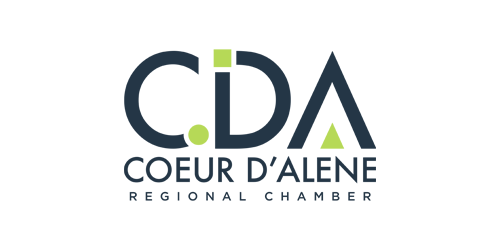 The Coeur d’Alene Regional Chamber of Commerce is consistently striving to be an innovative leader for the surrounding community. Part of my role while working alongside many great people at the CdA Chamber involved researching creative ways to continue their mission of being a driving force for community support. This research led to a handful of ideas that I ultimately presented to the Chamber Executive Board for consideration.
The Coeur d’Alene Regional Chamber of Commerce is consistently striving to be an innovative leader for the surrounding community. Part of my role while working alongside many great people at the CdA Chamber involved researching creative ways to continue their mission of being a driving force for community support. This research led to a handful of ideas that I ultimately presented to the Chamber Executive Board for consideration.
During this research & creation of presentation, I reached out to Chambers of Commerce around the country, I met with business and community leaders, I worked with university leaders, and as mentioned, I worked with some awesome people directly at the CdA Chamber. Every one of these professionals gave me insights from their fields and backgrounds that helped me to gather and aggregate data, build executive summaries, use AI efficiently, and make lasting connections, among many other benefits.
In regard to the use of AI in the classroom, I have been leaning very hard on the spectrum in resisting its use. I still lean toward “proceed with caution”, however I also realize I am not actively educating myself on the potential uses of AI. I was given many opportunities to use AI to guide the research and development of my presentations, creation of surveys, etc. during my time with the CdA Chamber, and I see the benefit of using AI as an efficiency tool. I am beginning to imagine how it could be used in the math classroom. I still lean toward “proceed with caution” because students still need to understand how to be critical thinkers when evaluating their choices and the resulting outcomes; however, I am open to further PD in regard to using AI in the classroom. After all, it isn’t going away; that’s for sure!
In closing, my two biggest takeaways from working with the CdA Regional Chamber of Commerce really aren’t related to my day-to-day externship work at all. I have had a door open to using AI, and I have some great connections with area leaders who are so open to supporting my work in the classroom.
Grade Level and Subject Taught: 8th Grade Math
Caitlin McLeod at Think Make Create Labs
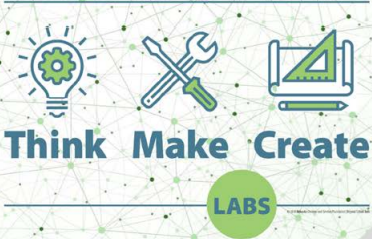 This summer, I had the opportunity to work remotely with TMC (Think, Make, Create) Labs through the Idaho Out-of-School Network. As I head into my 8th year of teaching 5th grade at Nezperce Elementary, I applied for this externship with the goal of growing as a science educator and bringing more hand-on learning into my classroom. TMC’s mission was a near perfect match for this. Their mission is to expand access to hands-on STEM learning and skills for all youth, to train educators to provide hands-on learning, to increase community support of STEM learning, and to support Idaho’s workforce development.
This summer, I had the opportunity to work remotely with TMC (Think, Make, Create) Labs through the Idaho Out-of-School Network. As I head into my 8th year of teaching 5th grade at Nezperce Elementary, I applied for this externship with the goal of growing as a science educator and bringing more hand-on learning into my classroom. TMC’s mission was a near perfect match for this. Their mission is to expand access to hands-on STEM learning and skills for all youth, to train educators to provide hands-on learning, to increase community support of STEM learning, and to support Idaho’s workforce development.
My work with TMC Labs centered on adding on to STEM lesson plans to make them user friendly for all facilitators and youth, make connections to Idaho Science Standards and workforce skills, highlight real world STEM careers, and include reflection prompts to help identify the durable skills they are practicing. The process was both creative and challenging. I had to think about how to scaffold complex ideas in ways that make sense for younger learners, make the reflection and learning goals accessible and scaffolded for all facilitators, while also ensuring activities stay meaningful.
One of my biggest takeaways was realizing how little workforce focused training or lessons exist for elementary students. Through this work, I saw that STEM learning at the K–6 level can be a bridge to future opportunities. Instead of asking my own students, “What career do you want to have?” students can start reflecting on the skills they are developing instead, like spatial reasoning, collaboration, or critical thinking. This shift is powerful for the future, because many of the jobs they will eventually hold don’t even exist yet. Helping them build confidence in their skills prepares them for whatever comes next in the future.
Looking ahead, I plan to incorporate more self-reflection into STEM activities in my own classroom. I want my students to pause and consider: What did I enjoy? What was difficult? What skill did I use that I could grow stronger in? These simple reflection questions can encourage them to see themselves as capable problem solvers and innovators, which matters just as much as mastering the content. It also can be so empowering for the students to recognize what skills they are already good at and enjoy and then focus on building on their strong foundations.
On a personal note, balancing this remote externship with two toddlers at home was its own challenge, but also a reminder of why I do love teaching! Kids are naturally curious, imaginative, and eager to try new things. Whether it’s my own children or my students, I want to nurture that spark. This job gave me new tools and perspectives to do just that. I had the best experience with this externship, built awesome connections, found a huge number of resources to bring back to my school, and would recommend this opportunity to every teacher!
Grade Level and Subject Taught: 5th Grade; All Subjects
Amy Alfredson at Three Island Crossing State Park
 My summer at Three Island Crossing State Park was spent creating engaging and educational presentations for visitors and campers at the park! I researched and presented on a variety of topics relevant to the area and history of both Glenns Ferry, Idaho and the Oregon Trail; such topics included birds of prey along the Snake River, invasive plant species, ghost stories of Glenns Ferry, a Choose Your Own Adventure Game, pioneer recipes, and astronomy nights. The goal was to provide guests with a unique experience that gave them deeper knowledge or appreciation of some aspect of the crossing. Many of my activities were tailored towards engaging children specifically in education at the park. For example, I created merit badge buttons for my birds of prey presentation to give to those who listened, and a later activity included learning how to make paper wagons like those used to cross the Snake River back in the 1700s.
My summer at Three Island Crossing State Park was spent creating engaging and educational presentations for visitors and campers at the park! I researched and presented on a variety of topics relevant to the area and history of both Glenns Ferry, Idaho and the Oregon Trail; such topics included birds of prey along the Snake River, invasive plant species, ghost stories of Glenns Ferry, a Choose Your Own Adventure Game, pioneer recipes, and astronomy nights. The goal was to provide guests with a unique experience that gave them deeper knowledge or appreciation of some aspect of the crossing. Many of my activities were tailored towards engaging children specifically in education at the park. For example, I created merit badge buttons for my birds of prey presentation to give to those who listened, and a later activity included learning how to make paper wagons like those used to cross the Snake River back in the 1700s.
I accomplished a significant amount of outreach while at Three Island Crossing. Roughly 80 individuals attended my presentations each month, with my most popular presentation, “Pioneer Recipes”, attracting 40 attendees on that day alone. More importantly, my presentations led to more questions and conversations about the park and the crossing, allowing the other volunteers and I to share our knowledge of the area and history. My career and coaching centers on communication, and my time at the park truly benefited my abilities. I was able to create presentation aids to take back to my classroom to use as an example of exemplary competitive visual aid boards. I learned how to connect to audiences of wide age groups, entertaining and educating young children and their grandparents simultaneously. Such skills will be useful to my competitive speech and debate students who need to adapt to different judge preferences and are interested in a wide range of topics, like the breadth I spanned through this externship. This summer was an invaluable experience, and I plan to continue volunteering my time at Three Island Crossing when possible. The park and I are already planning monthly astronomy nights, and I hope they will lead to more community interest in the park as time goes on.
Grade Level and Subject Taught: 9-12 Speech and Debate
Rebecca Webster at Nucube Energy
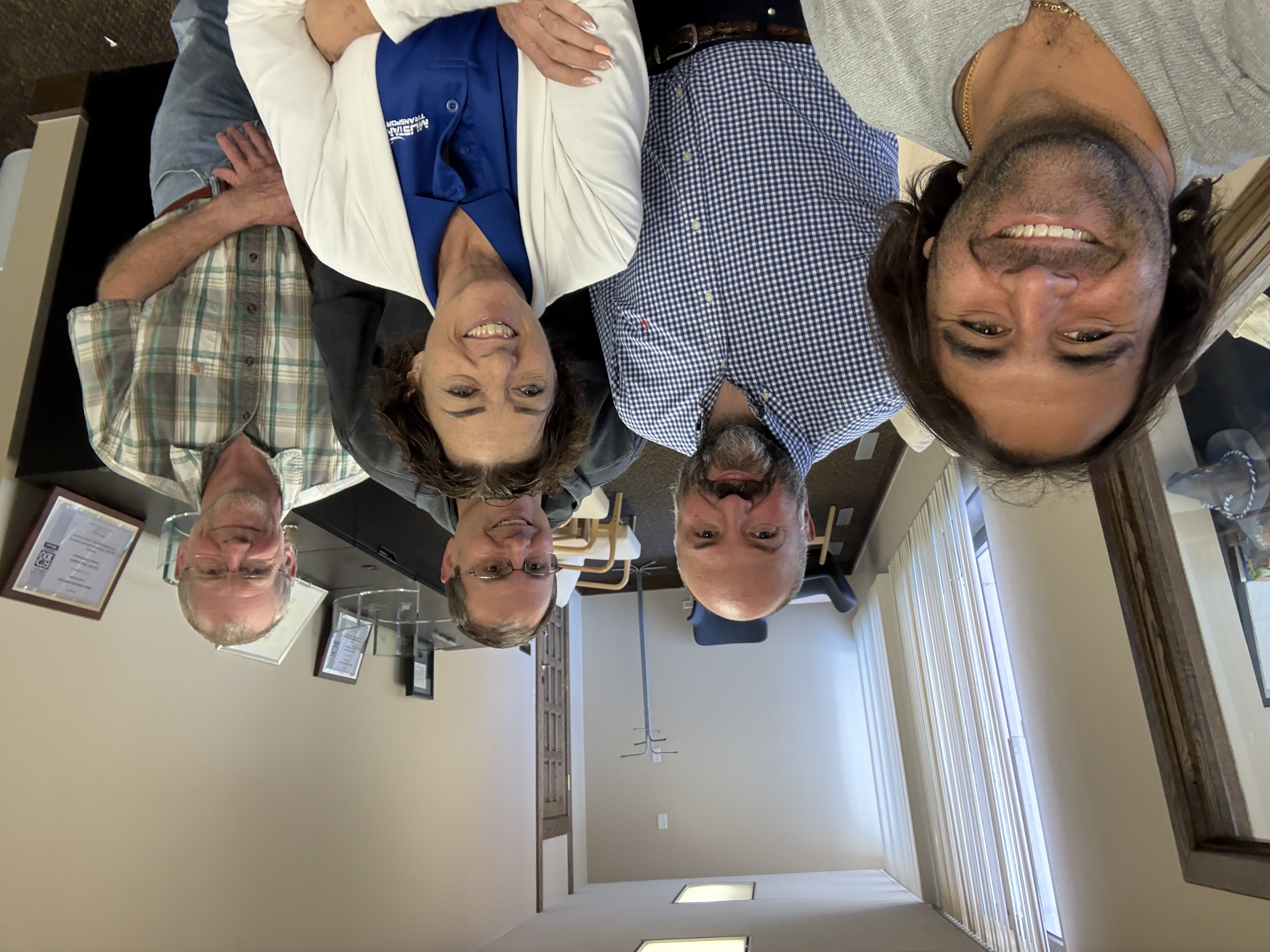 My Summer Externship at Nucube: A Journey of Growth, Challenge, and Friendship
My Summer Externship at Nucube: A Journey of Growth, Challenge, and Friendship
This summer, I had the incredible opportunity to join Nucube, a company of nuclear engineers who are currently in the exciting development stage of a groundbreaking project. Based in Idaho Falls, the office may be small—just four brilliant individuals—but the impact they’re working toward is anything but.
When I started my externship, my primary goal was to learn Python and begin building a Python library to support the work being done at Nucube. With little experience in programming, I knew I had a steep hill to climb, but I was ready for the challenge.
What made this journey so special was the guidance and mentorship I received along the way. My mentor, Andrea Alfonsi, worked with me directly every day. We spent countless hours exploring how to define and structure classes in Python—concepts that once seemed daunting but gradually became clearer thanks to his patience and support.
Another key figure during my time at Nucube was the company’s CEO, Christian Rabiti, who, along with Andrea, originally hails from Italy. Getting to know them on both a professional and personal level was an unexpected highlight. Not only are they incredibly intelligent and driven, but they are also down-to-earth and genuinely supportive. Learning about their paths, cultures, and expertise added a rich layer to my experience that went far beyond coding.
Over the course of the externship, I faced some of the most difficult challenges I’ve ever encountered—technically, mentally, and emotionally. But those challenges were matched by some of the most rewarding moments I’ve had in my academic and professional life. I pushed myself harder than I thought I could, and in return, I gained skills, confidence, and a deep appreciation for the work being done in the nuclear energy field.
Perhaps most importantly, I left with lifelong friendships and a sense of belonging to a team that is doing meaningful, world-changing work.
Looking back, this externship was so much more than a summer job. It was a turning point—and one I will always be grateful for.
Grade Level and Subject Taught: 9-12 Business Education
Megan Cuellar at Soleni Shoes
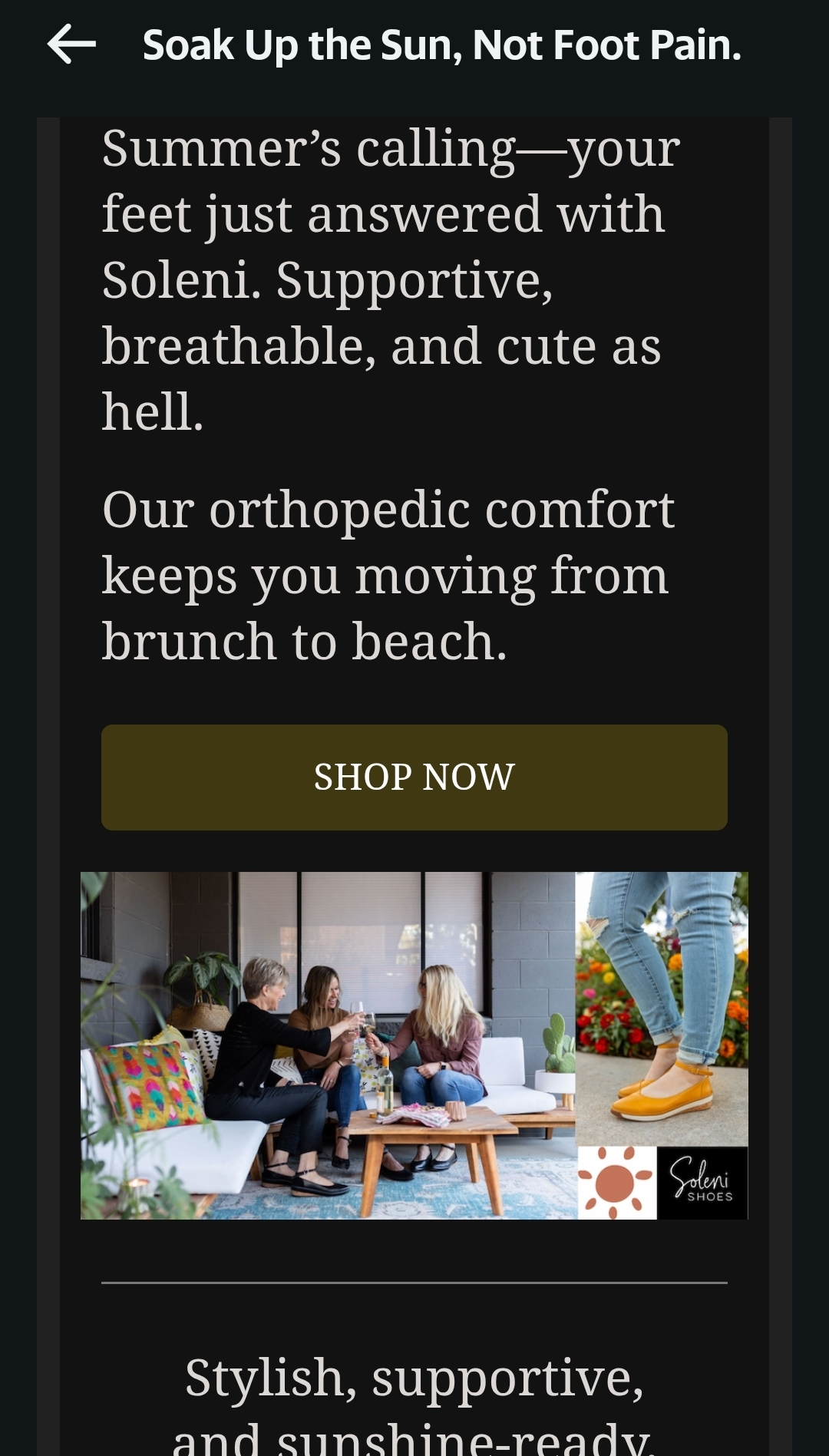 This summer, I had the amazing opportunity to work with Lindsey Carmichael, owner and founder of Soleni Shoes! I have knowledge and experience marketing products on social media to help drive up customer views and eventually, sales. Lindsey expressed that she needed help sending out promotional emails and managing some of her Soleni Shoes social media (ex. Facebook page). Since I was working remotely for my STEM Externship (Soleni Shoes is located in Boise, ID and I work out of Moscow, ID), we decided this would be a great use of my skill and fulfill a need Lindsey has for marketing her business.
This summer, I had the amazing opportunity to work with Lindsey Carmichael, owner and founder of Soleni Shoes! I have knowledge and experience marketing products on social media to help drive up customer views and eventually, sales. Lindsey expressed that she needed help sending out promotional emails and managing some of her Soleni Shoes social media (ex. Facebook page). Since I was working remotely for my STEM Externship (Soleni Shoes is located in Boise, ID and I work out of Moscow, ID), we decided this would be a great use of my skill and fulfill a need Lindsey has for marketing her business.
Meeting & Training
Lindsey had expressed an interest early on of getting her three STEM Externs together for a team building weekend, including training for programs and platforms we would be using during the course of our STEM Externships. Since I live 6 hours from Boise, we agreed that I would stay there in a hotel over the weekend. The weekend we chose ended up not working for the other two STEM Externs, but Lindsey and I met, and I received training on some of the programs I would need to have access to for setting up email campaigns promoting Soleni Shoes to current and potential customers.
Email Campaigns
Throughout the course of the summer, I created, scheduled, and sent 3 different email campaigns each week. The first campaign went out Monday, June 30th and the last scheduled campaign went out the week of Monday, August 4th. Each campaign was created through the Shopify platform and through Klaviyo. These were new programs for me, but the training Lindsey provided helped me to be able to efficiently and effectively create, schedule, and post 18 email campaigns throughout my STEM Externship experience. I used images from the Soleni Shoes Google Drive (stock images, professional photos of people wearing the shoes in different situations) and AI (ChatGPT) to help come up with on-band messaging that was short, sweet, and to the point.
Social Media Posts
I took over the Soleni Shoes Facebook Page the same time I began creating email campaigns. For this platform, the goal was to boost views, comments, and interactions on the site because it had been pretty stagnant. I began by scheduling a daily “Morning Motivation” message that was meant to uplift and inspire. Soleni is a brand created by women, for women. Inspiring confidence and celebrating achievements is very on-brand, so the Morning Motivation messages were perfect! They went out every morning at 6:00 a.m. for the month of July (30 posts total).
I also scheduled a daily “Interactive” post to get people commenting on things they like, experiences they have had, or preferences. These posts were fun and brought in lots of engagement from viewers to the site! These daily posts went out at 4:00 p.m. (30 posts total). In addition to creating these posts, I also took responsibility for reacting and commenting on every comment we received from a viewer. These interactions were crucial for increasing brand and page visibility.
Lastly, I created unique Soleni Shoes Facebook posts marketing different shoes, styles, or situations where the shoes could easily be worn. These posts were our direct on-brand messaging to show off the versatility and features of Soleni Shoes to our audience. These posts included fun messaging, pictures, and even music to increase engagement and views. The posts went out at 6 p.m. and started with a few days per week, quickly updating to a daily post (and are still currently scheduled and posting on the Facebook page daily – 42 total posts). Examples of each type of post is shown in the pictures, along with a picture of an email campaign.
Impact
This experience introduced me to a new side of any successful small business – marketing and promotion. Although I did have some prior experience, this Externship taught me ways to be much more efficient in less time while utilizing new business platform tools (Shopify and Klaviyo). Even Chat GPT was relatively new to me and I learned ways to use it effectively for short marketing campaigns. Although I don’t plan to use all of these skills to influence my teaching this year, I know some things will come in handy, such as:
- Transferring prior knowledge to using new platforms. Teaching is a career driven by the newest and latest technology platforms. Being proficient at using different platforms and using prior experience to drive new learning is always going to be a useful tool as an educator.
- Best practices for communicating with students, parents, and community supporters. Being a teacher means that you will be communicating with lots of different people at different times and for different reasons. It is important to understand how successful communication can help support your cause, while ineffective communication can harm it. I am always looking for new ways to effectively communicate with my parents, students, and public education allies.
- Collaborating with others toward mutual goals. Working with Lindsey Carmichael this summer was incredible. She is a phenomenal human and small business owner. We often collaborated before to make sure that the messages I was sending out were on-brand for Soleni Shoes. We wanted to work towards the same goal of expanding viewership and audience for potential customers, as well as driving some “potential customers” into “new customers.”
I appreciate the opportunity I was given to expand my knowledge and expertise in the area of STEM through this Externship!
Grade Level and Subject Taught: 2nd Grade
Casey Oliver at Eastern Idaho Plumbers & Pipefitters Joint Apprenticeship & Training Committee Local 648
 I spent the summer working with the Training Coordinator (Mr. Gray) for the Eastern Idaho Plumbers & Pipefitters Joint Apprenticeship & Training Committee Local 648 located in Blackfoot, Idaho. Nearly my entire experience was at the training center in Blackfoot, with a few short hours on one day working at the union hall in Pocatello, Idaho.
I spent the summer working with the Training Coordinator (Mr. Gray) for the Eastern Idaho Plumbers & Pipefitters Joint Apprenticeship & Training Committee Local 648 located in Blackfoot, Idaho. Nearly my entire experience was at the training center in Blackfoot, with a few short hours on one day working at the union hall in Pocatello, Idaho.
I was tasked with assisting Mr. Gray in a vast number of areas that he is responsible for including record keeping, consolidation, and maintenance. This involved school transcripts, student book payment records, and on-the-job training hours. I organized these files going back a couple of years, and spent time digitizing records as Mr. Gray is working towards mostly digital rather than physical files. I assisted with financial records, and test results as apprentices attended the center to engage in weld tests. Additionally, I completed various tasks of training center maintenance including groundskeeping, room remodel, and other custodial efforts to improve and sustain the center.
The goal for the extensive record work was to increase the efficiency and organization of the program allowing for better service to apprentices, functionality of the school for the committee, staff, and local 648 as a whole. I believe that this goal was accomplished as I was able to complete many tasks that Mr. Gray would not have gotten to by the end of the summer. His responsibilities are generally more than can be completed on a typical day as he is the soul employee of the training center tasked with literally “everything” that needs completed. As I learned about the program and the center I identified Mr. Gray as the maintenance professional, contractor (as we remodeled a room this summer), groundskeeper, secretary, accountant, and coordinator of all testing and professional development that occurred on a daily basis for apprentices, and union members. This list is not exhaustive as has many other responsibilities. It was very satisfying to learn about this great program, and spend time developing myself professionally as I worked to complete the objectives of the training program.
Overall, it was gratifying to have helped accomplish so many things this summer to foster the goals of the program and set up the school for the upcoming year. I feel that the career knowledge I gained is invaluable as I work especially with high school students who are seeking career opportunities post graduation. I feel that this program does an incredible job of teaching, training, providing professional opportunities, and growth for those who participate. This continues as they graduate from the program as the local union then helps find jobs for these professionals. The training center (as mentioned before) then allows for continual professional development so that members can develop their skills and increase financial opportunities.
I plan on sharing the knowledge I have gained with district staff, and students who are seeking career opportunities in an environment that fosters growth, success, and sustainability.
Grade Level and Subject Taught: School Psychologist: K-5; 9-12
Susan Green at Owyhee Produce
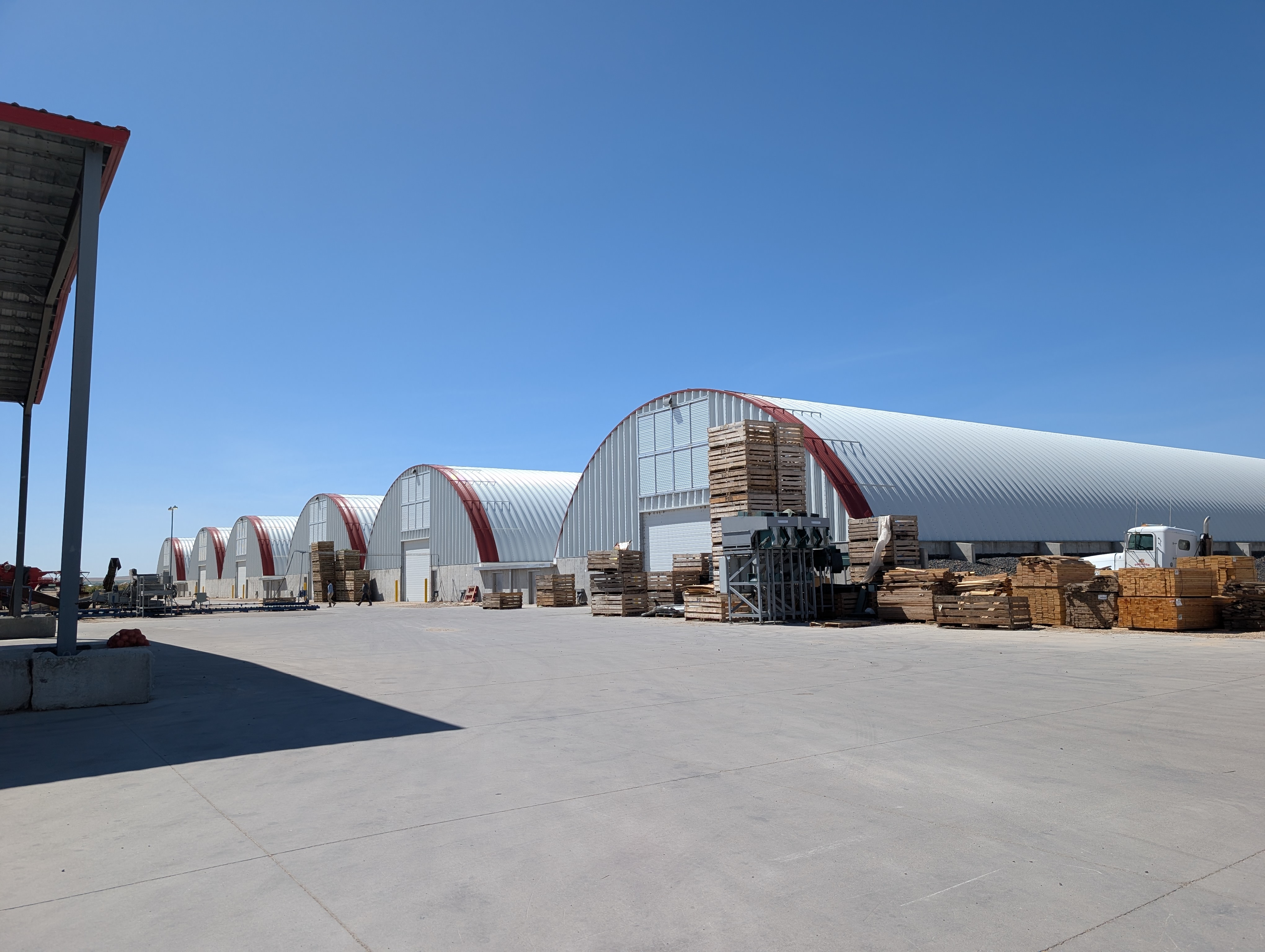 During my externship with Owyhee Produce I was tasked with assisting with marketing materials, curriculum development, and preparation for events. The goals were to create a K-12 curriculum that Owyhee Produce can distribute to local schools. We developed these in the form of booklets geared to appropriate age levels as well as some additional materials. In addition, I helped create flyers, newsletters, clothing designs, etc. in Canva for their upcoming VIP event and their annual conference that they attend. During this time I felt that I accomplished all the goals that they were requiring and more. Learning about agriculture and creating a curriculum when not coming from that background is a big accomplishment. This impacted my career by giving me additional tools to use within my own curriculum development. As far as understanding, canva more and understanding local agriculture. I plan to use the materials that I developed within my own science programs as additional information. I think this project helped me grow and learn as a professional.
During my externship with Owyhee Produce I was tasked with assisting with marketing materials, curriculum development, and preparation for events. The goals were to create a K-12 curriculum that Owyhee Produce can distribute to local schools. We developed these in the form of booklets geared to appropriate age levels as well as some additional materials. In addition, I helped create flyers, newsletters, clothing designs, etc. in Canva for their upcoming VIP event and their annual conference that they attend. During this time I felt that I accomplished all the goals that they were requiring and more. Learning about agriculture and creating a curriculum when not coming from that background is a big accomplishment. This impacted my career by giving me additional tools to use within my own curriculum development. As far as understanding, canva more and understanding local agriculture. I plan to use the materials that I developed within my own science programs as additional information. I think this project helped me grow and learn as a professional.
Grade Level and Subject Taught: K-7 Science and MS STEM
Kenneth Graham at Teton Toyota/Teton Auto Group
During my summer of 2025 Externship, I worked with the marketing team of Teton Toyota/Teton Auto Group. I was tasked with planning and helping out with events out in the community. We did anything from engaging the public with a carnival game at the rodeo to working with kids on art projects at the Roaring Youth Jam. This being my second year, I got to take on a lot more of the creative aspect of activations. My desired outcome/goals were to engage with the community and gain connections that I can bring back to the classroom. I have already added to my contact list and have brainstormed 4-5 different ways I can bring those community members into my classroom. Last year, after working in the community realm, I was able to partner with a local business to bring bike helmets to all 6th graders.
This has also impacted my teaching style by realizing the power of activation in marketing. This is the same for education! If I can find a way to enhance the content with a hook to garner excitement about the subject area, students win!
Grade Level and Subject Taught: 6th Grade English Language Arts and Science
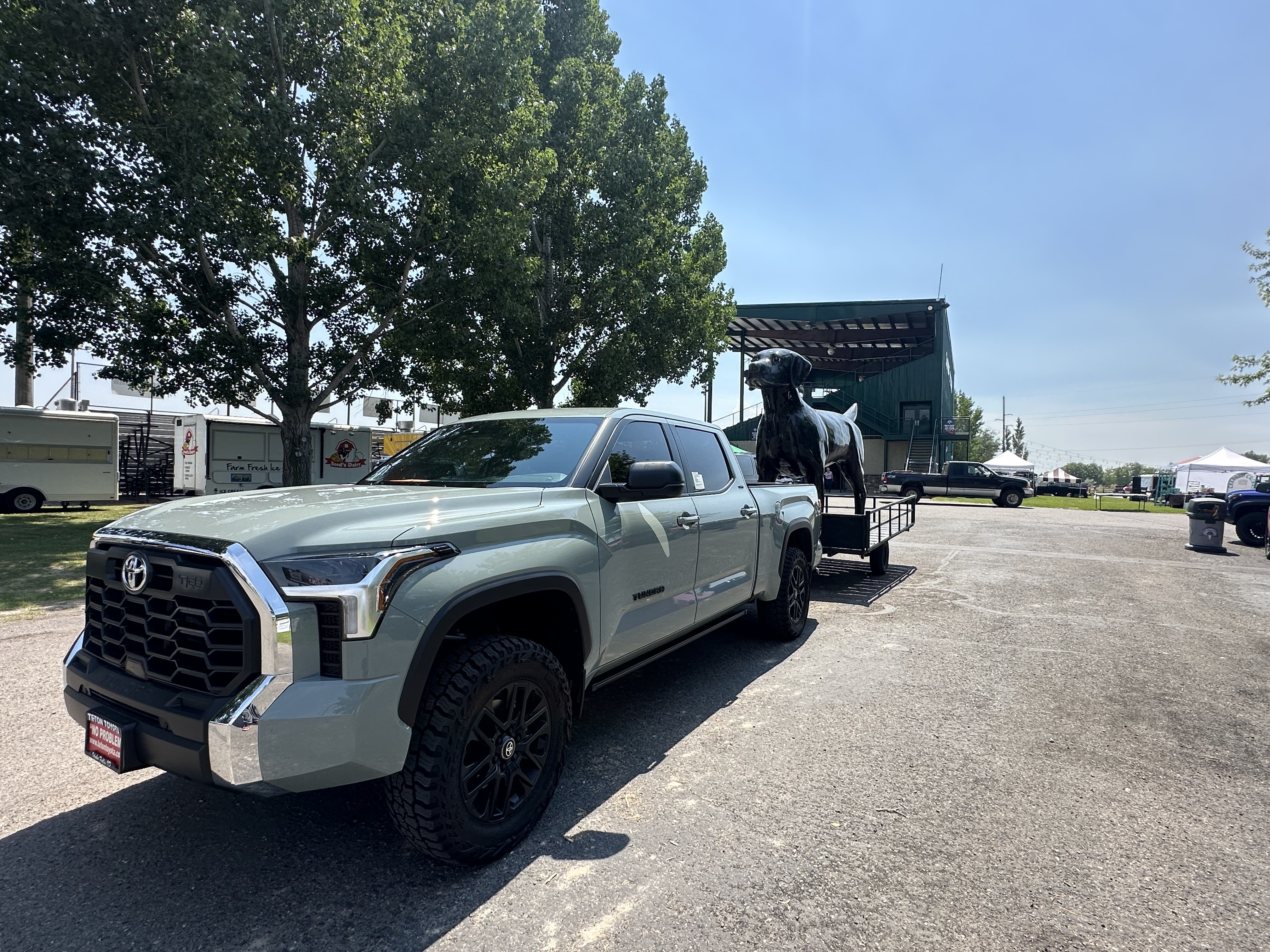
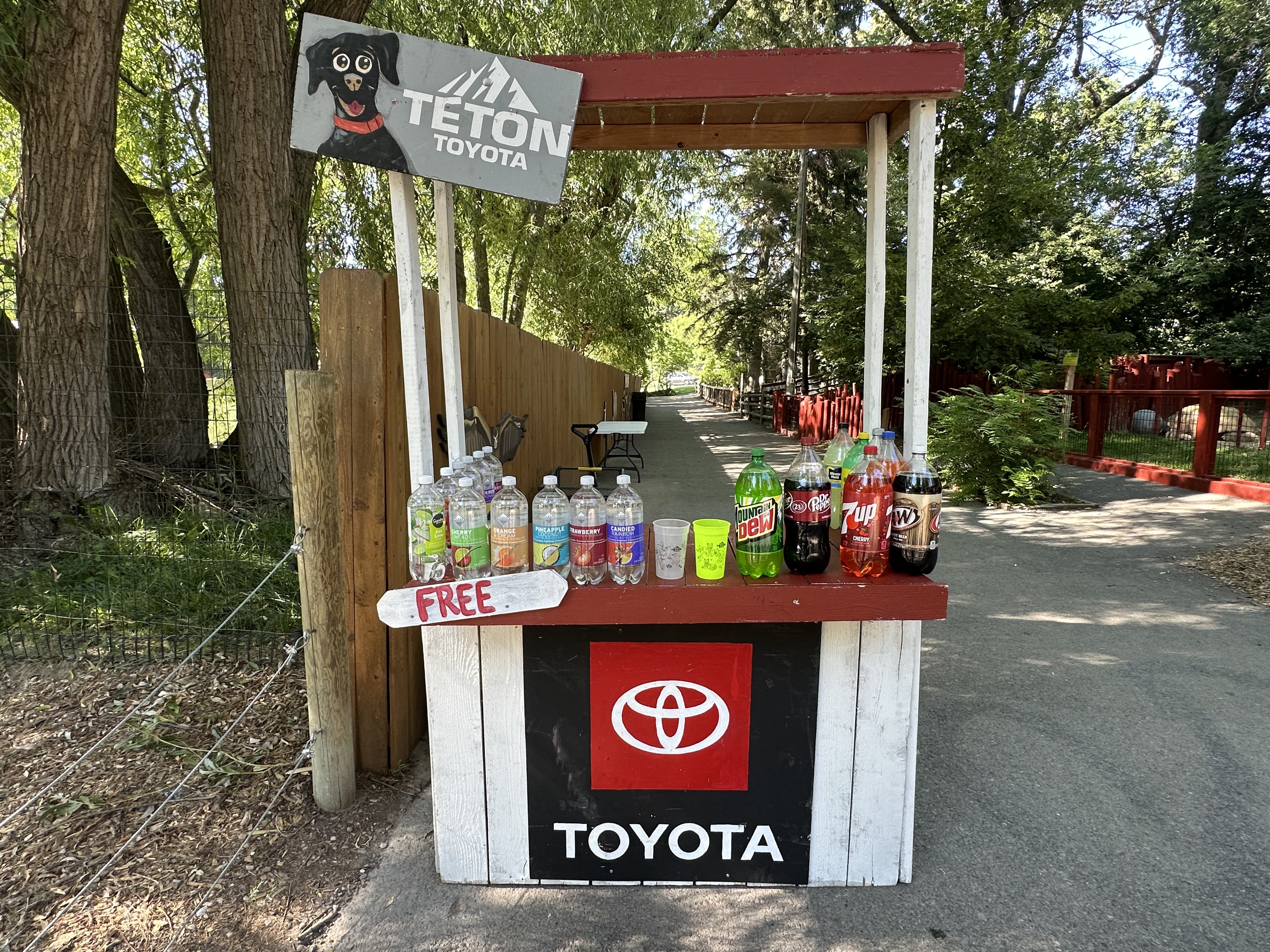
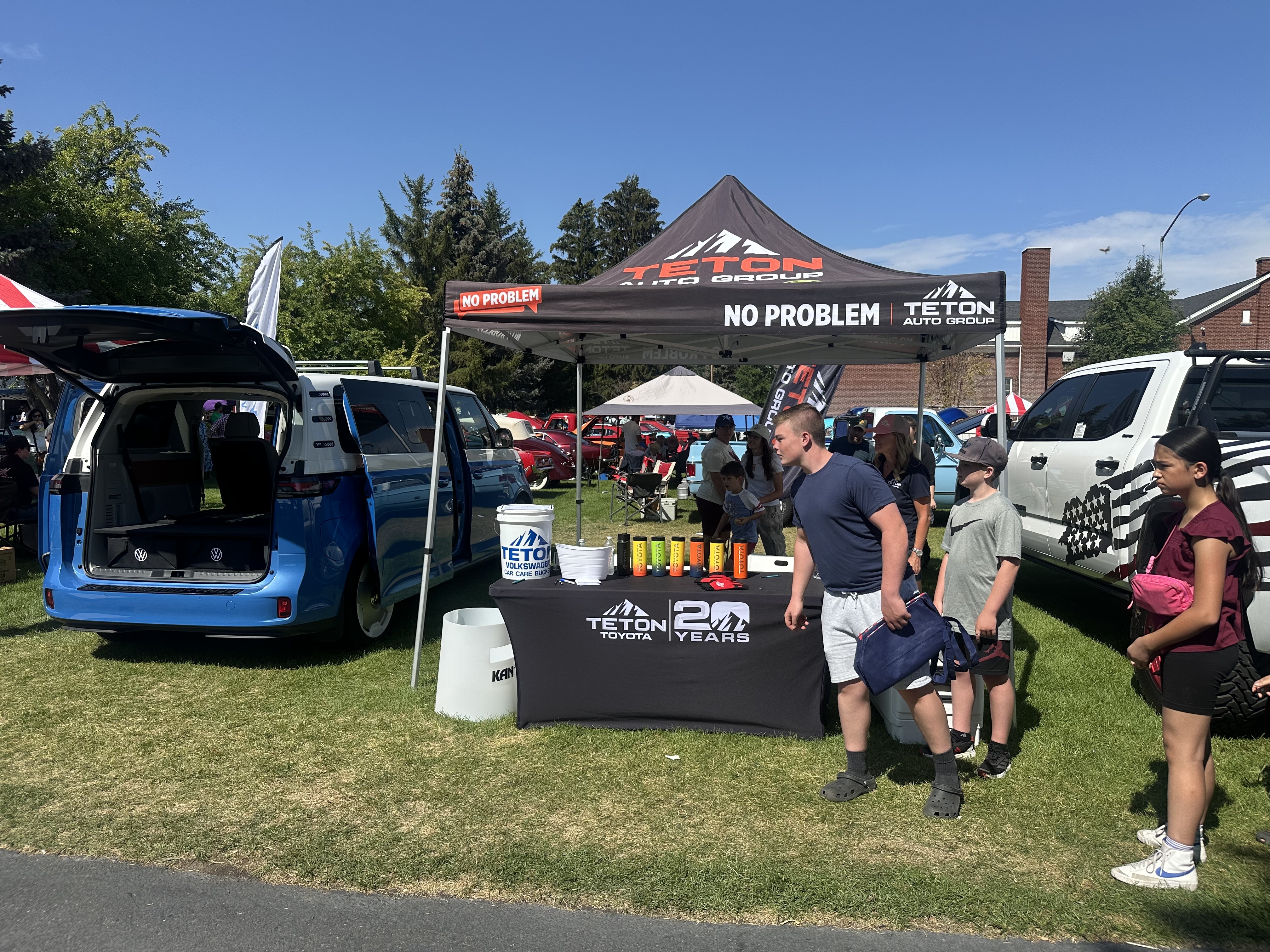
Kristy Chaney at Girl Scouts of Silver Sage
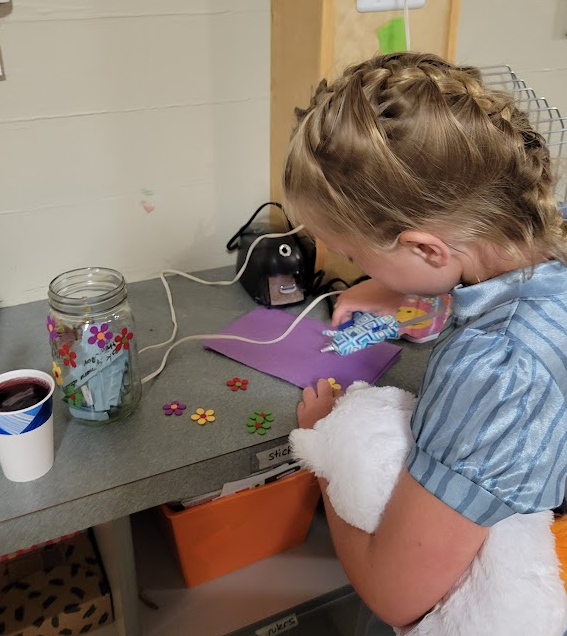 This summer, I had the privilege of partnering with the Girl Scouts of Silver Sage. As a first-time participant in this program, I wasn’t entirely sure what to expect, but my experience quickly became both meaningful and impactful. My host, Kristen, was incredibly supportive, providing me with the background knowledge I needed and helping me understand my objectives for the summer.
This summer, I had the privilege of partnering with the Girl Scouts of Silver Sage. As a first-time participant in this program, I wasn’t entirely sure what to expect, but my experience quickly became both meaningful and impactful. My host, Kristen, was incredibly supportive, providing me with the background knowledge I needed and helping me understand my objectives for the summer.
Goals & Intended Outcomes:
As a veteran teacher, my main goal was to align the Girl Scout badge programs and school outreach initiatives with educational standards and classroom needs. I was tasked with developing engaging curriculum materials that could be used in school settings, as well as creating flyers and promotional materials to help recruit new members and inform families about local Girl Scout opportunities. The intended outcome was to provide troop leaders with accessible, classroom-friendly content that promotes leadership, creativity, and confidence in young girls, while also increasing school-based participation in Girl Scout programs.
Accomplishments at the Host Site:
During my time with the Girl Scouts of Silver Sage, I was proud to contribute to several key projects. I developed curriculum for the Junior-level Bronze Award badge, which was successfully implemented at a summer camp session—an exciting milestone to see my work in action (see attached photo).
In addition, I designed promotional flyers aligned with Girl Scout values and programs for two schools that will be launching a new in-school Girl Scout pilot program this Fall. These materials will support recruitment and engagement efforts directly within the school setting.
Finally, I created theme-based activity plans for the upcoming Fall and Winter Day camps. Using the general themes provided, I developed multiple creative, classroom-friendly activities for each day to ensure the camps are engaging, hands-on, and age-appropriate.
Impact on Career Knowledge & Teaching Style:
This experience significantly expanded my understanding of curriculum development. By creating lessons aligned with Girl Scout programming, I gained a deeper appreciation for how to structure activities with clear objectives, intentional sequencing, and measurable outcomes. It helped me home in on the most important elements of a lesson and sharpen my ability to design engaging, purposeful content.
Additionally, working outside a traditional classroom setting gave me fresh insight into informal education and how learning can be both fun and meaningful. This has influenced my teaching style by encouraging me to incorporate more hands-on, theme-based learning and real-world connections into my own classroom.
Grade Level and Subject Taught: 2nd Grade
Lisa Bengoechea at Boise National Forest- Engineering
 Boise National Forest ~ Engineering
Boise National Forest ~ Engineering
I was hired by the Engineering Department of the Boise National Forest for the summer of 2025 externship program. I was really excited and pleased about this position. My overall perspective of the Boise National Forest has changed drastically. There are multiple facets of the BNF. Such as, hydrology, botany, wildlife, and of course engineering.
Communication & Collaboration the Way they Work
There are so many projects going on at the Boise National Forest each year. Most of these projects are created 5 years in advance. There are so many details and departments that are involved during the various stages of these projects. Collaboration, communication skills and teamwork are vital to be successful in the completion of these projects. These are definitely 21st Century Learning skills to emphasize in my classroom.
Safety First!
Before we were allowed into the field, we had to be trained for safety purposes. We had to take a course for a government issued driver’s license to drive the Forest Service trucks. Driving in the backcountry requires a certain skill set to be safe. Then we were trained to use the radios on the trucks and the GIS, Geographic Information System, which includes several types of technology the government uses. Lastly, we had a CPR class, and we now have 2-year certifications. With all of this training, I felt pretty confident going into the field with a buddy.
Technology & Real Life Connections
As an extern I made real life connections with the projects I was involved with. I participated in two projects during my externship with the Engineering Department. The first was collecting data on signage and creating a comprehensive database focused on signage throughout the forest. We were trained to use GIS software and a specific GPS system to guide us in the backcountry and to collect the data. Due to the many fires in 2024 a lot of the signage is burned or missing. This was an important task to complete for recreation and public safety required by the United States government. Creating this database will assist in determining the amount of money that will need to be allocated to replace signage in the BNF.
The second project I worked on was burying traffic counters in 5 heavily used roads of the forest. The devices are buried 12 inches deep next to the road. The technology reads the cars passing by and will assist in determining how many cars utilize a particular road in a specific period of time.
My Takeaway
Making real life connections to assist in my learning assisted greatly. This increased my belief that my multilingual students will learn and deepen their knowledge in English if content is taught with real life connections via visual aids and other learning strategies. Something else I took away and will use in my classroom is the importance of collaboration and teamwork. So, working in groups and having classroom discussions will increase in my classroom in the upcoming school year.
Lisa Bengoechea
Jefferson Middle School
Grade Level and Subject Taught: 5th-6th English Language Learning
Mary Davis at The Land Group
 The Land Group is a unique Landscape Architecture firm that houses Landscape Architects, Civil Engineers and Land Surveyors all under one house. They are a design-first firm that values collaboration and innovation to create a positive impact on the community.
The Land Group is a unique Landscape Architecture firm that houses Landscape Architects, Civil Engineers and Land Surveyors all under one house. They are a design-first firm that values collaboration and innovation to create a positive impact on the community.
My Task
My main task as an extern was the research project. Every year The Land Group hires a group of interns that not only get to work on a mock project, assist on active projects but are assigned a specific research project. This year the research project was “Designing for the Aging Population”. Our final product was a design toolkit that took into consideration design strategies specifically for the needs of the aging population. We also had an amazing opportunity to present our final toolkit to community professionals involved in city planning and policy making. As I worked with the interns I had to balance my professional background by providing guidance yet not overstepping and working together as a team.
During my externship I was able to learn more about Landscape Architecture, Civil Engineering and Land Survey. I have joked around with many people that I will never look at a sidewalk or parking lot the same again. I learned so much about each profession and how interconnected they all are.
Educational Takeaways
After this experience I can confidently encourage students to look into these professions now that I know more about them. Many different electives can explore these professions by providing units and lessons that focus on the design process, using different types of computer software and even just learning more about these professions and career opportunities.
The most important takeaway from this experience solidifies my belief that executive functioning skills should be a priority for students. I saw first hand how crucial communication, organization and time management is in a professional workplace.
This externship has been so inspiring. I am so grateful for the experience of working with positive, uplifting professionals.
Photos by Dylan Hull
Grade Level and Subject Taught: High School PE/Health/Electives
Myriame Fisse at Boise OnRamp
 A Summer of STEM, Creativity, and Community
A Summer of STEM, Creativity, and Community
This summer has been one of the most energizing and inspiring seasons of my career. I had the incredible opportunity to participate in the Idaho Stem Action Center Externship through a partnership with Boise State University’s ONRAMP. As a library educator who values equity, creativity, and community connected learning, this experience opened new doors for bringing meaningful stem opportunities to students across Boise. Through ONRAMP, I connected with educators, innovators, and industry leaders who are all working to make stem more inclusive and accessible. We explored real world problem solving and how partnerships with local businesses can give students authentic, hands-on learning experiences. It gave me a fresh perspective on how to bridge classroom learning with the wider community especially through technology and design thinking. One of the most powerful parts of my summer was diving deeper into Apple’s Learning Coach program. As I continue learning through Everyone Can Create and Everyone Can Code, I’m building new ways to support educators in bringing more creativity, student voice, and digital fluency into their classrooms. I brought many of these ideas to life during Boise School District Summer School, where students used iPads to create digital portfolios and explore nature through augmented reality bringing their ideas to life. I also stayed connected to kids and families through Boise Parks and Recreation camps, where we blended outdoor play with creative tech tools. These experiences reminded me how powerful learning can be when it values movement, imagination, and collaboration. This externship was more than professional development. It transformed how I see my role as a library educator, coach, and creative guide. I’m heading into the new school year with a full heart, fresh energy, and a toolkit ready to help every student feel seen, heard, and inspired to do amazing things. Learning is everywhere and so is inspiration.
Grade Level and Subject Taught: K-6 Creative projects and Augmented Reality
Elizabeth Owens at Boise Urban Gardens (BUGS)
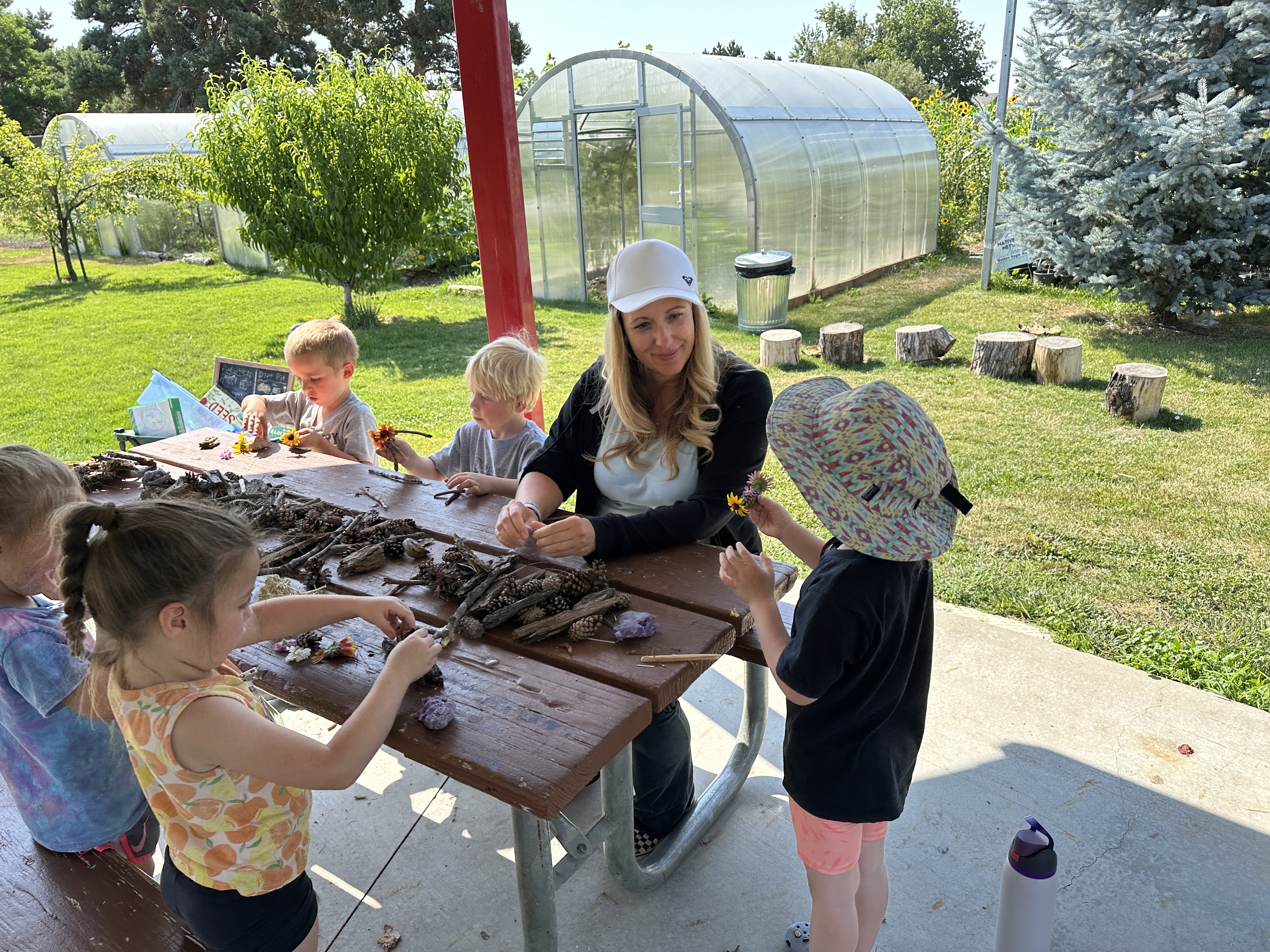 This summer, I had the incredible opportunity to step outside the classroom and into the dirt—literally. I spent my days working with preschoolers and elementary-age students (kindergarten through 3rd grade) in a garden-based camp, and later with tweens and teens at a beekeeping camp at BUGS (Boise Urban Gardens). These experiences not only gave me a fresh perspective on education but also left a lasting mark on how I’ll approach teaching my preschool special education students this year and beyond.
This summer, I had the incredible opportunity to step outside the classroom and into the dirt—literally. I spent my days working with preschoolers and elementary-age students (kindergarten through 3rd grade) in a garden-based camp, and later with tweens and teens at a beekeeping camp at BUGS (Boise Urban Gardens). These experiences not only gave me a fresh perspective on education but also left a lasting mark on how I’ll approach teaching my preschool special education students this year and beyond.
At the garden camp, the kids dove into hands-on learning that was messy, joyful, and full of curiosity. I learned about many new things such as composting, planting seeds, harvesting fruits/ vegetables, and the bugs that help (or hurt) the garden. As I became more familiar with the garden and lessons, I had the privilege of teachings many of them throughout the summer. It was so fun watching a preschooler get excited over a beetle or gently pat soil around a seedling they planted themselves.
Each day ended with something special: lunch made by the culinary camp at BUGS from ingredients harvested right there in the garden. The excitement on the student’s faces when they realized the tomatoes in their pasta sauce or the cucumbers in their salad came from their garden made every moment worth it.
This experience reminded me that young children want to understand how the world works. When we connect learning to their senses—and their sense of purpose—something clicks. For my preschoolers with special needs, I plan to bring more sensory-rich, real-world learning into our routines. Whether it’s planting herbs in small pots, exploring compost bins, looking for bugs on the playground, or role-playing garden jobs, I want my students to feel the same pride and wonder.
Later in the summer, I joined a beekeeping camp for 10–14 year olds. I was hesitant but learned so much from this camp and the older campers. It was a different energy—older kids with more questions, eager to learn all about bees. We taught them all about the honeybee’s lifecycle, pollination, colony roles, the history of honeybees, and the importance of bees in our ecosystem.
The highlight? Watching them extract real honey straight from the hive. Their reactions ranged from shouts of amazement to quiet awe as golden honey streamed out. They bottled it up, labeled it, and took it home proud of what they had helped create.
This camp showed me how meaningful learning becomes when students are empowered to do something real. Even complex topics like sustainability or pollination became accessible and unforgettable through hands-on experiences.
What I Learned & How It Will Shape My Teaching
Here are the biggest takeaways I’m bringing back to my preschool classroom:
- Real-world learning matters – Kids of all ages thrive when they can touch, see, and feel what they’re learning. For my students, especially those with developmental delays or sensory processing challenges, this is essential. I want to bring more nature into the classroom, and more of the classroom into nature.
- Every child can contribute – Whether it’s sorting compost, planting seeds, or tasting freshly picked herbs, every child had a role. I’m inspired to give my preschoolers more ownership over classroom jobs and group projects, no matter their abilities.
- Curiosity is the best teacher – I watched children light up when they were given the freedom to explore and ask questions. I want to make more space for wonder in my teaching—fewer teacher led activities- more discovery.
- Learning can be joyful and messy – And it should be. Getting dirty in the garden and sticky with the honey wasn’t just fun, it was powerful. I’m reminded that real learning often looks like play, especially for preschoolers.
Looking Ahead
As a preschool special education teacher, I’m always seeking ways to meet my students where they are—and this summer showed me just how rich and effective outdoor, sensory-based, inquiry-driven learning can be. It doesn’t have to be fancy. A few pots on the windowsill, a magnifying glass at the bug bin, or a pretend beekeeping station in dramatic play can spark the same joy and curiosity I saw at camp.
The garden and the hive gave me new tools and fresh inspiration. It was such a pleasure to have the opportunity to spend the summer at BUGS and I would highly recommend it to anyone.
Grade Level and Subject Taught: Prek-8th
Shannon Olsen at Idaho Innovation Center
 Externship Reflection: Idaho Innovation Center & Idaho Commercial Kitchen
Externship Reflection: Idaho Innovation Center & Idaho Commercial Kitchen
This summer, I had the opportunity to serve as an extern at the Idaho Innovation Center (IIC), with a focus on the Idaho Commercial Kitchen (ICK). The Idaho Innovation Center is a small business incubator whose mission is “to provide large business resources to small fledgling companies so entrepreneurs can confidently and aggressively start and grow their small business through collaboration, education, mentoring and advising.” In support of that mission—specifically for food entrepreneurs—they launched the Idaho Commercial Kitchen approximately two years ago. However, despite its potential, the kitchen has not seen the level of usage originally anticipated.
Project Goals and Intended Outcomes
The primary goal of my externship project was to increase the visibility and usage of the Idaho Commercial Kitchen. To help us achieve this, we received training in artificial intelligence, marketing, social media, and research strategies. I applied these new skills to identify gaps in community services that the ICK could help address and then worked to build connections with the individuals and organizations needed to fill those gaps.
What I Accomplished
One of the most significant accomplishments of my externship was facilitating a new partnership between the Idaho Commercial Kitchen and the College of Eastern Idaho’s (CEI) Continuing Education program. Through market research, I discovered a notable lack of cooking classes available in the Idaho Falls area, despite high community interest. CEI had previously offered such classes, but the program had stalled in recent years due to the lack of an adequate facility.
By coordinating a meeting between the Executive Director of the Idaho Innovation Center and the Director of Continuing Education at CEI, I helped lay the foundation for a new collaborative effort. Together, we developed a plan to relaunch community cooking classes using the ICK as the hosting site. This partnership is expected to significantly increase exposure and utilization of the kitchen while meeting a community need.
Impact on Career Knowledge and Teaching Style
This externship experience has greatly enhanced my professional skills, particularly in research and the practical use of artificial intelligence. I’ve learned how to use AI to complete routine or time-consuming tasks, allowing me to better focus my energy on meaningful interactions with students.
In addition, the collaborative nature of this project reminded me of the value of working closely with others toward a shared goal. While I’ve often worked independently in my teaching career, this experience has shown me the power of strategic collaboration—something I plan to integrate more intentionally into my teaching approach moving forward.
Final Thoughts
This has been an incredibly valuable partnership. The Idaho Commercial Kitchen stands to benefit from increased community engagement and exposure, while I’ve gained new tools and perspectives to enhance my own professional practice. I’m grateful for the opportunity and excited to see how this partnership continues to grow.
Grade Level and Subject Taught: K-5 Special Education
Kelly Gissel at The City of Nampa Public Works
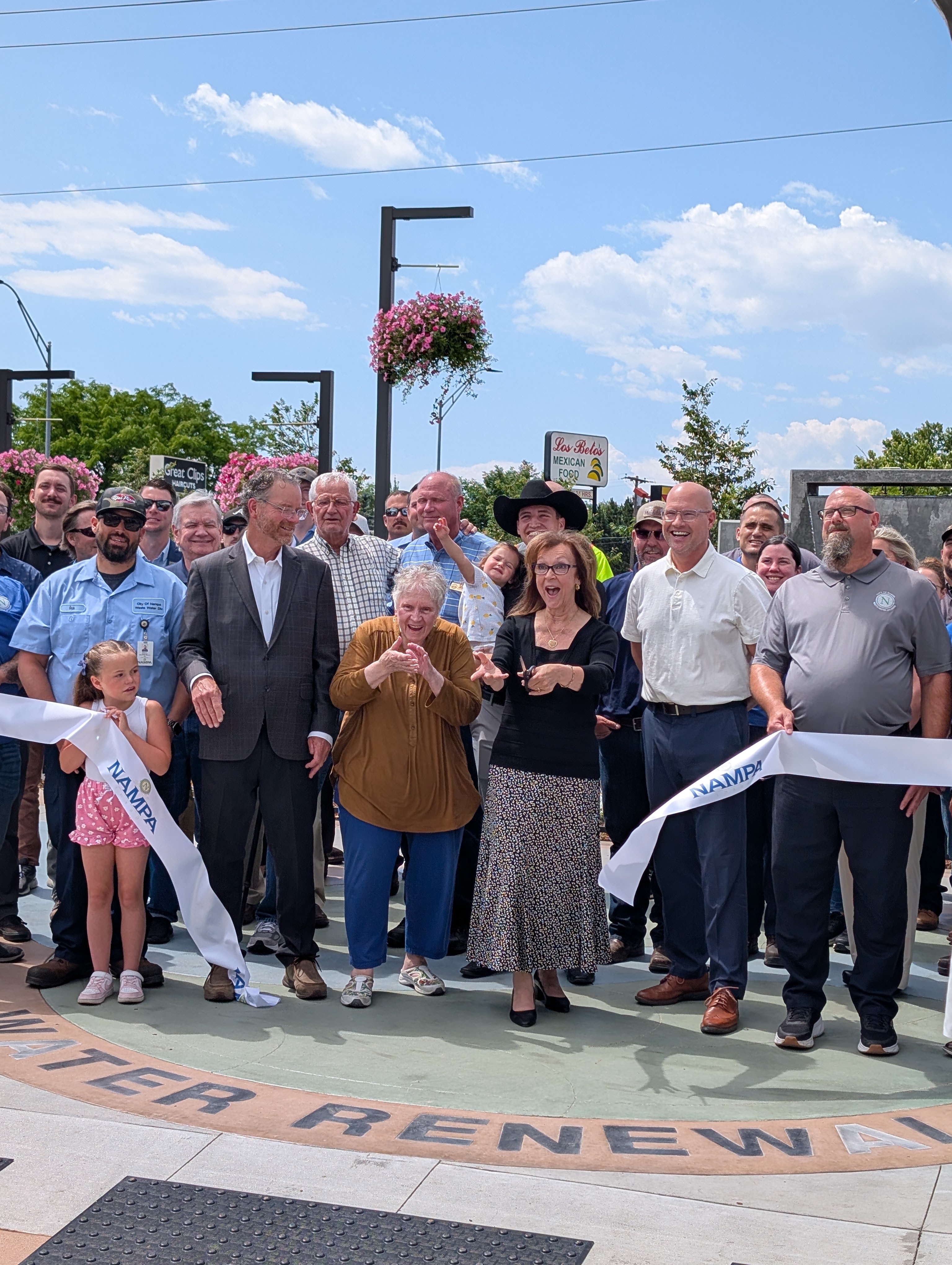 My externship at the City of Nampa’s Public Works was an exceptional experience in my own education. Though I was able to see many ins and outs of the public sector from transportation to parks & rec, I mainly focused on Nampa’s Water Renewal Facility and its education output. This $165 million infrastructure project transforms wastewater into Class A, high-quality irrigation water.
My externship at the City of Nampa’s Public Works was an exceptional experience in my own education. Though I was able to see many ins and outs of the public sector from transportation to parks & rec, I mainly focused on Nampa’s Water Renewal Facility and its education output. This $165 million infrastructure project transforms wastewater into Class A, high-quality irrigation water.
My goals were to create usable, accessible, and relevant lessons to promote education about recycled water and the one water ideology (all water is one water). The intended outcomes were to get STEM education about the City of Nampa’s Water Renewal Facility into the secondary classroom, specifically informing students about: 1.) water’s importance, 2.) community and individual responsibility of water, and 3.) education about water’s usability.
At Public Works, my experiences were vast. I worked predominately on the water renewal facility project (specifically creating education pieces for the classroom), even attending the ribbon cutting for the Phyllis Canal outfall, joined by a number of city workers including the mayor. I also observed many departments of public works including transportation, engineering, parks and recreation, water works, and administration. In addition, I was enlightened about the intricate details of city workings that closely work together to ensure a safe and working community (even though from the outside in, it may seem very inconvenient for an individual). I was overall very impressed, not only at how everything works together, but also the level of knowledge and education of each and every individual.
Overall, I was able to create several usable pieces for the city to use in the education environment that would inform and educate students about water works, specifically The City of Nampa’s Water Renewal Facility. The education materials focus primarily on One Water and the meaning behind “making every drop count”.
I was very much impacted as an educator. The systems at the city level work so closely together that one must be working with another to maintain order and efficiency. This is important in any career, especially teaching as well. What I have learned from the externship can cross over greatly into the senior project portion of the classroom (a state requirement for graduation). It was definitely an insightful experience that I would recommend to all educators looking to invest time in students who are interested in STEM careers.
Grade Level and Subject Taught: Grades 11th-12th English
Sherise Porchia at Idaho Workforce Development Council
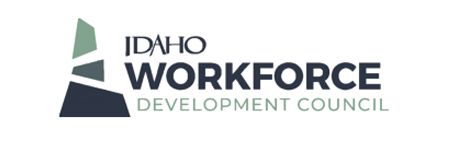 This summer, I returned to the Idaho Workforce Development Council (WDC) for my second externship with them and third overall. This time around, my focus was on reviewing key tools used by educators and families—like the Idaho Counselor and Parent Playbook, Next Steps Idaho’s Video – Resource Libraries- Curriculum, and the Idaho LAUNCH page. My job was to evaluate what materials are still relevant, what needed updating, and how to better align everything by grade level.
This summer, I returned to the Idaho Workforce Development Council (WDC) for my second externship with them and third overall. This time around, my focus was on reviewing key tools used by educators and families—like the Idaho Counselor and Parent Playbook, Next Steps Idaho’s Video – Resource Libraries- Curriculum, and the Idaho LAUNCH page. My job was to evaluate what materials are still relevant, what needed updating, and how to better align everything by grade level.
The goal was to strengthen these resources so they remain clear, useful, and accessible. I was able to complete detailed reviews and provide recommendations to help make them more impactful.
This experience gave me a deeper understanding of how statewide resources are built and maintained—and how important it is for those of us working in schools to identify and utilize these resources. It’s made me more intentional in how I share information with students and families and has reinforced the importance of strong collaboration between policy and practice.
Grateful to the WDC team for another summer of meaningful work and growth.
Grade Level and Subject Taught: 10th-12th College and Career Counselor
Heather Ekhoff at Gizmo
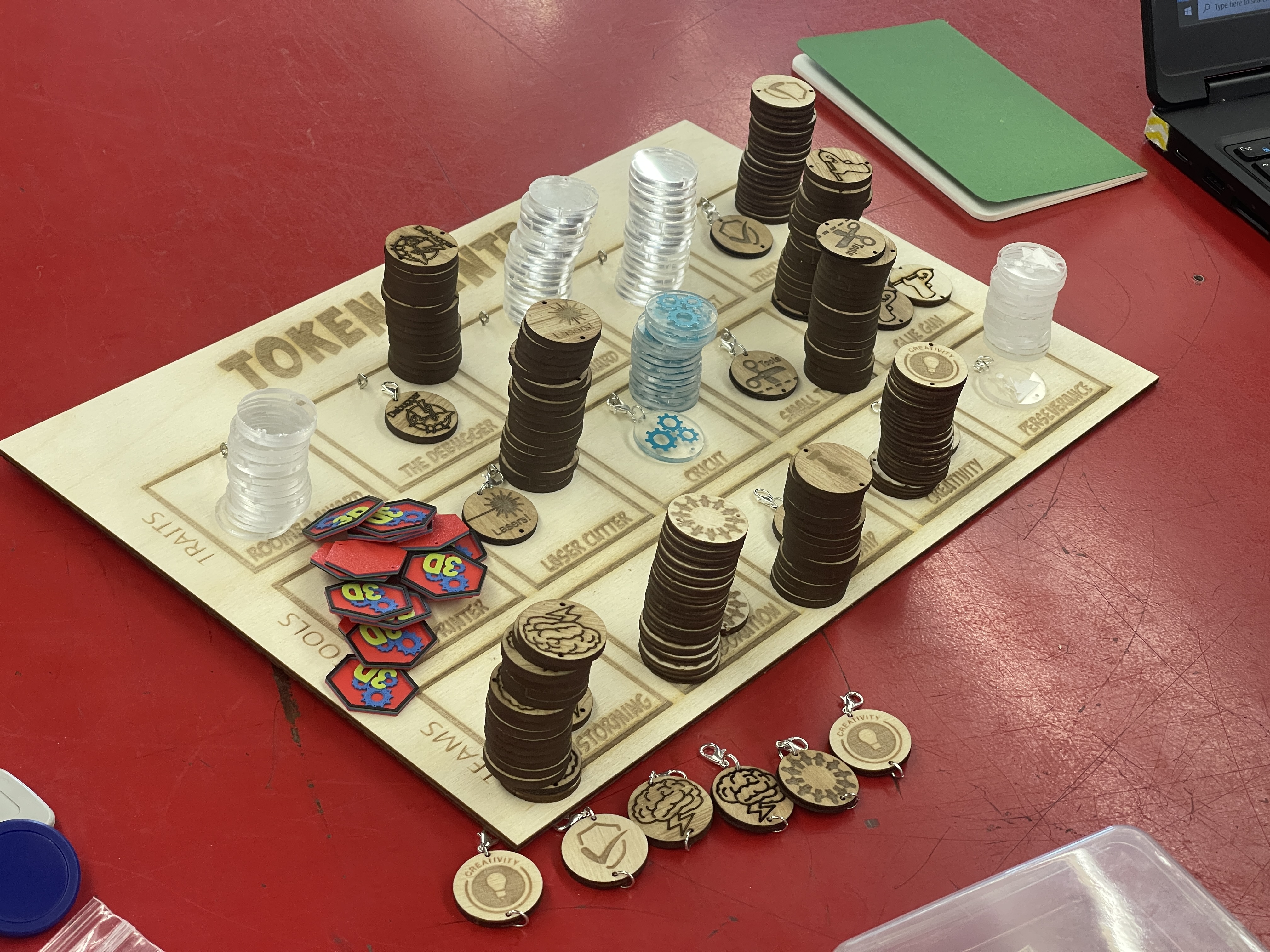 Reflecting on My Externship Experience: Growth, Insight, and Real-World Impact:
Reflecting on My Externship Experience: Growth, Insight, and Real-World Impact:
Participating in this externship has been one of the most rewarding and energizing professional development experiences of my career. One of the highlights was the incredible collaboration I shared with my teaching partners, all under the superb guidance of an inspiring and knowledgeable mentor. Working together in such a dynamic and creative environment reminded me of the power of true teamwork and how much we can accomplish when we support and challenge one another toward a shared goal.
The Project: From Creative Exploration to Real-World Application:
Our main project was twofold: first, to immerse ourselves in learning a wide variety of technical and creative skills within a well-equipped makerspace, and second, to design and implement a hands-on kids camp that guided students through a journey of creativity, innovation, and the design thinking process. The ultimate goal was to help students bring their ideas to life—moving from concept to prototype to finished product—while developing critical real-world skills such as collaboration, time management, adaptability, and problem-solving.
What We Accomplished:
During our time at the host site, we explored tools and technologies ranging from 3D printing and laser cutting to circuitry and coding platforms. This hands-on learning was immediately applied as we built out an engaging, multi-day camp experience. The camp provided students with the opportunity to experience the full cycle of product development, simulating the kind of iterative process used in real-world design and engineering careers.
As a team, we successfully facilitated a space where students not only learned new skills but also practiced pitching their ideas, adjusting their designs based on feedback, and reflecting on their process. These are the same career and technical education (CTE) competencies that are essential in today’s workforce—and watching the students embrace and apply them was nothing short of inspiring.
Impact on My Teaching and Career Growth:
This externship experience has deeply impacted my approach to teaching as a CTE educator. Not only did I help guide students through a real-world design and innovation process during the camp, but I now have a refreshed and expanded skill set that I’m excited to bring directly into my classroom. I plan to implement more student-centered, industry-informed projects that mirror what we accomplished during the externship—giving my students the chance to see themselves as creators, designers, and future professionals.
This experience has strengthened both my technical abilities and my instructional confidence, especially in integrating authentic, career-connected learning. I’m returning to the classroom with a toolbox full of new strategies and a renewed passion for preparing students for success beyond school—in college, careers, and life.
With utmost sincerity,
Heather L
Grade Level and Subject Taught: 6th ELA/SS/Science
Elizabeth James at Soleni Shoes
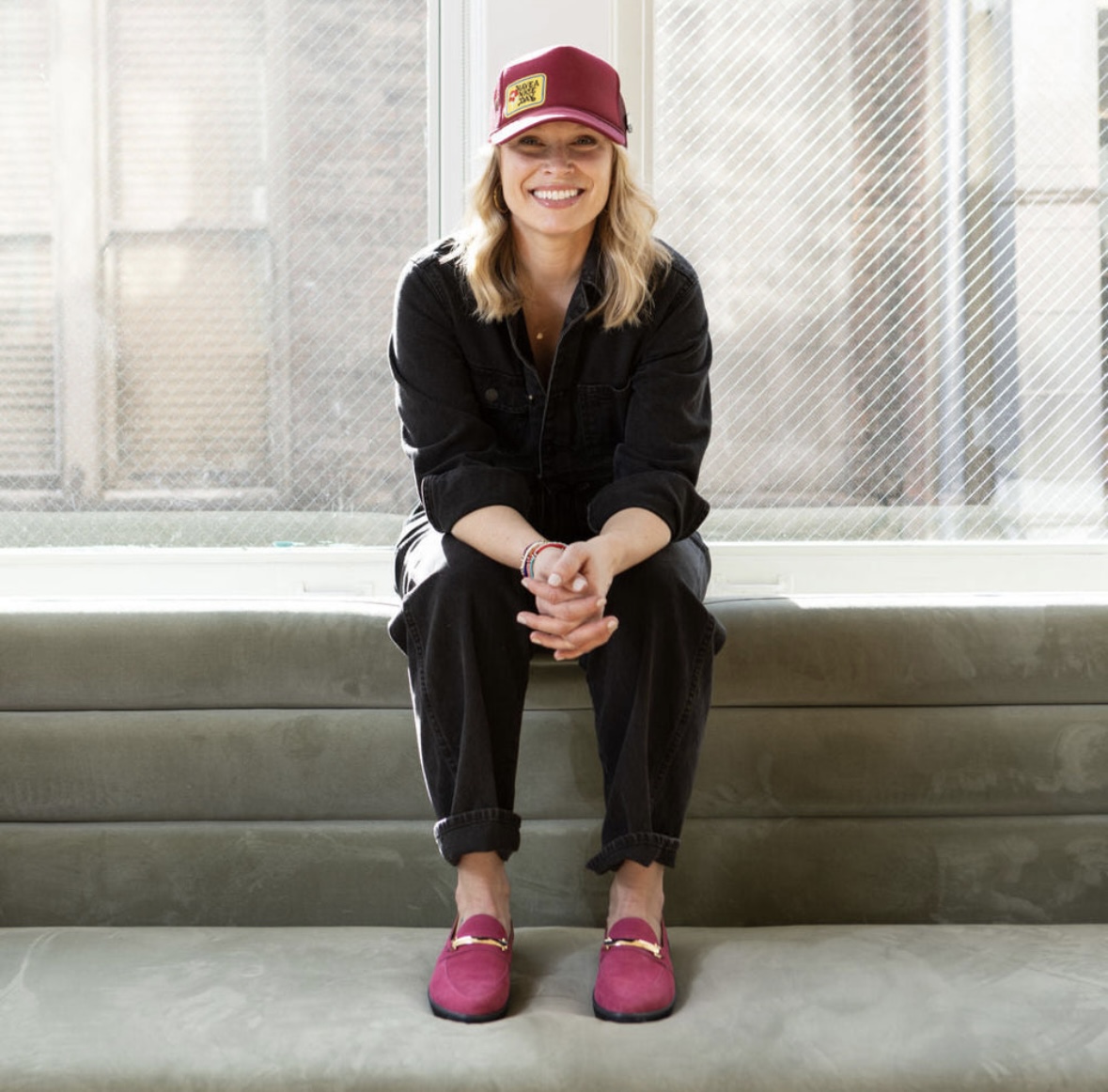 Stepping Up with Soleni: Year Two of My Externship Experience
Stepping Up with Soleni: Year Two of My Externship Experience
There’s something special about returning to a place where you’ve grown—and realizing there’s still so much more to learn.
This summer marked my second year working with Soleni, and once again, it was an incredibly rewarding experience. While I came in with an understanding of the business, this year gave me the chance to go deeper—learning more about the behind-the-scenes operations, creative strategies, and the heart that drives this small but mighty brand.
This externship continues to open my eyes to the world of retail and small businesses—and just how much resilience, teamwork, and organization it takes to thrive in that space. From the outside, small businesses may look simple, but there’s a complex ecosystem behind every product and post. Being part of it gave me a new level of respect for the hustle behind the scenes.
One of my main focuses this year was exploring the role of social media in small business success. I created content, designed promotional posts, and worked to understand how online presence shapes customer engagement and brand identity. It was a hands-on way to apply creative thinking and strategic planning—all within a real-world business setting.
I also had the chance to get more involved in the inventory and operations side of things. I helped organize inventory at the warehouse, filled and shipped customer orders, and saw just how important efficiency and accuracy are when it comes to delivering great service. It may not be the flashiest part of the job, but it’s the backbone of the business.
A major highlight of the summer was participating in a photoshoot to promote new shoe styles—a fun, creative experience that gave me insight into product marketing and visual branding.
This externship has reinforced something I deeply believe in: students benefit when we integrate real-world STEM and entrepreneurial activities into learning. By exposing students to problem-solving, design thinking, and collaborative projects, we can help them develop essential business skills, cultivate an entrepreneurial mindset, and prepare them for success across all kinds of fields.
And maybe the most important lesson I’m walking away with?
If you have an idea—or see a way to solve a problem—go for it. The world needs more people who are willing to try, build, and improve. That’s how businesses like Soleni are born—and how they keep growing.
Grade Level and Subject Taught: 2nd Grade, All Subjects
Don Williams at INL, University Place, Idaho Falls
 INL Summer STEM camps, covered may aspects of engineering. Our first three weeks we hosted Middle and High school students at a Cyber Security camp, utilizing CyberPartiot curriculum. The next three weeks we assisted with the 1st – 8th grade engineering camps. Our final week we hosted High school students at a robotics engineering camp.
INL Summer STEM camps, covered may aspects of engineering. Our first three weeks we hosted Middle and High school students at a Cyber Security camp, utilizing CyberPartiot curriculum. The next three weeks we assisted with the 1st – 8th grade engineering camps. Our final week we hosted High school students at a robotics engineering camp.
All of these camps gave us the opportunity to introduce science, technology and engineering concepts to young students. I thoroughly enjoyed all of the camps, though the High school aged students were particularly rewarding to work for the material we were working with. There were a few technology glitches we had to work through, I offered CEI’s campus as an alternative as adequate resources are already prepared for this type of activity. I do feel that I (as well as Josh Duersch) was able to add a great deal to the presentation of the Cyber camp. We also were able to help with the robotics camp. I would definitely look forward to participating in this camp again next year.
Grade Level and Subject Taught: MIddle and High School
Ashley Wheeler at INL
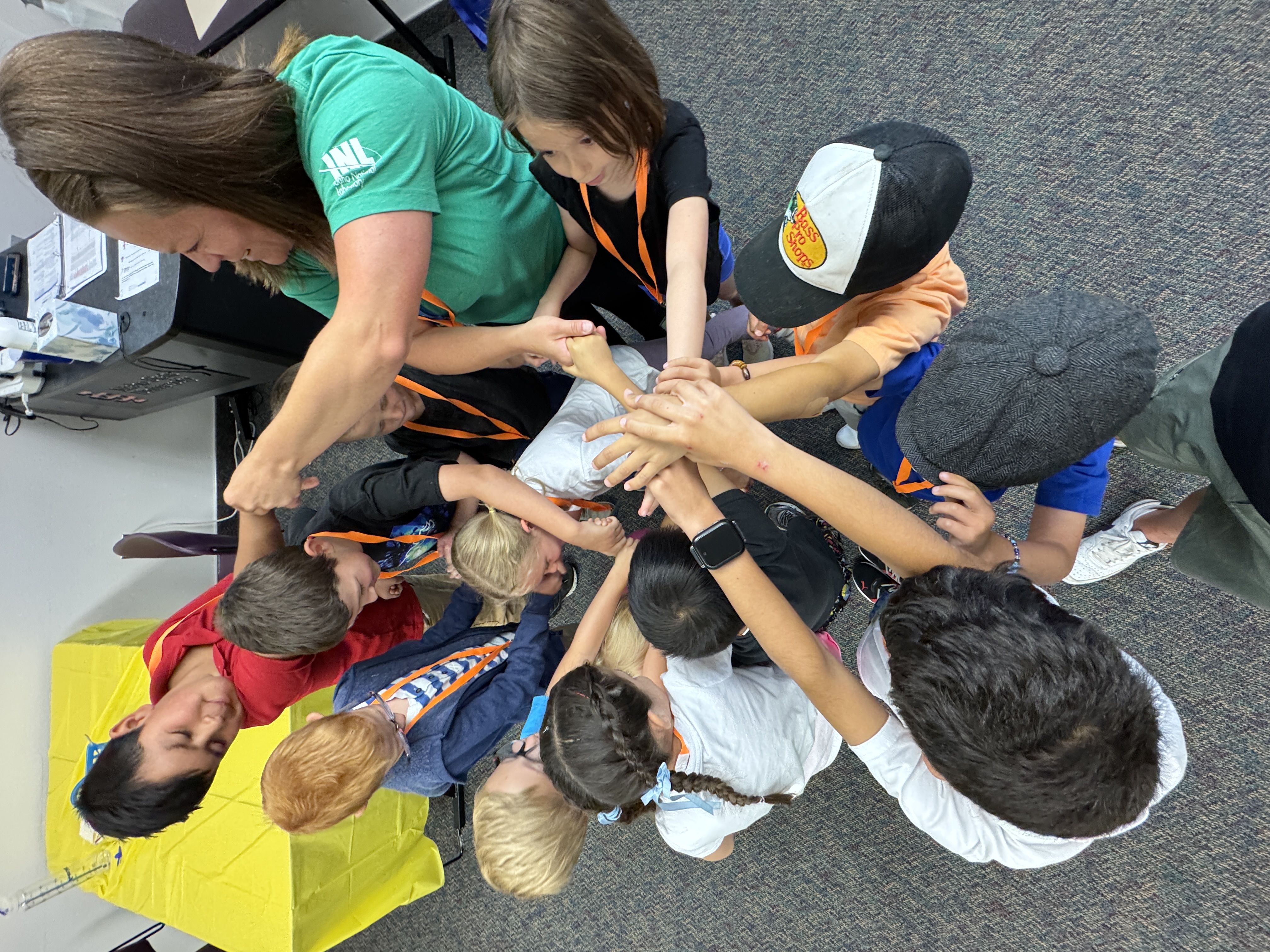 I was so lucky to work with the INL STEM camp this summer!!! We learned about teamwork, the engineering process, building circuits, and built future park models using recyclable materials.
I was so lucky to work with the INL STEM camp this summer!!! We learned about teamwork, the engineering process, building circuits, and built future park models using recyclable materials.
We worked with students from 1st grade to 8th grade. It was so fun seeing each age group work together and how unique all their parks were. Each grade level had amazing strengths and learned a lot about planning with teams which is tricky sometimes.
I will absolutely incorporate more hands on activities in my classroom after this experience. Our students are so creative and ready to express ideas; I need to give them more chances to bring those ideas to life.
It was a great summer!
Grade Level and Subject Taught: 1st-8th Grade
Theresa McSweeney at Summit Innovation Labs
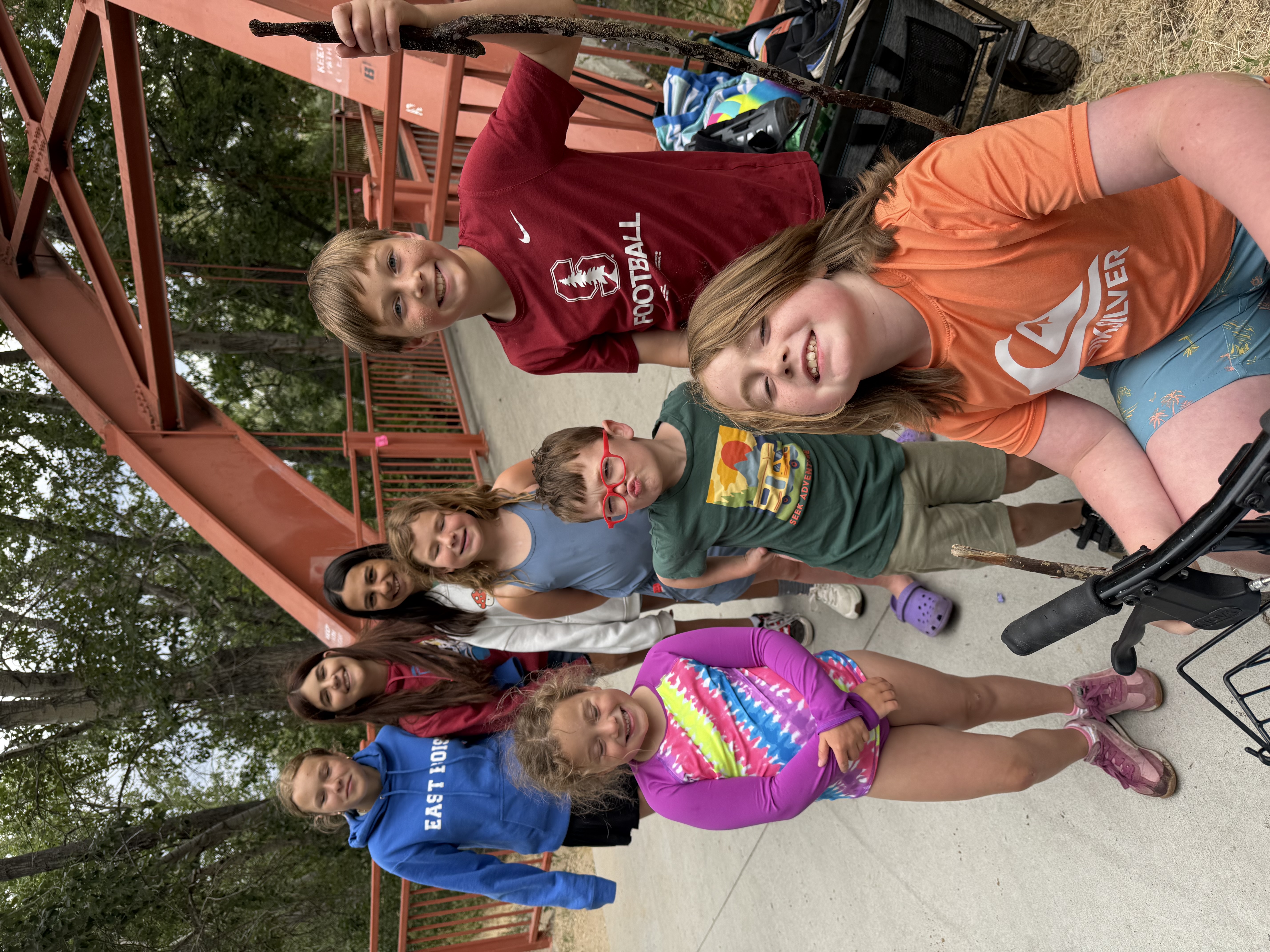 Summit Innovation Lab serves preK-8 grade students in the Treasure Valley by offering rich STEM programs for educational purposes. Students attend camp during week-long thematic camps. I was able to plan and administer one full week of camp and then assist as an administrator throughout the rest of my time. Administrators would dictate the camp scheduler, be responsible for communicating with parents as needed, and manage other staff who were working at the camp. The highlight of the summer was seeing the STEM concepts in action in a room where students of vast and various ages came together. I was able to gain an insight into what families want from a STEM program and learn more about the types of educational services offered in the Treasure Valley.
Summit Innovation Lab serves preK-8 grade students in the Treasure Valley by offering rich STEM programs for educational purposes. Students attend camp during week-long thematic camps. I was able to plan and administer one full week of camp and then assist as an administrator throughout the rest of my time. Administrators would dictate the camp scheduler, be responsible for communicating with parents as needed, and manage other staff who were working at the camp. The highlight of the summer was seeing the STEM concepts in action in a room where students of vast and various ages came together. I was able to gain an insight into what families want from a STEM program and learn more about the types of educational services offered in the Treasure Valley.
Grade Level and Subject Taught: K-8 STEM Administration
Drew Nelson at Boise WaterShed
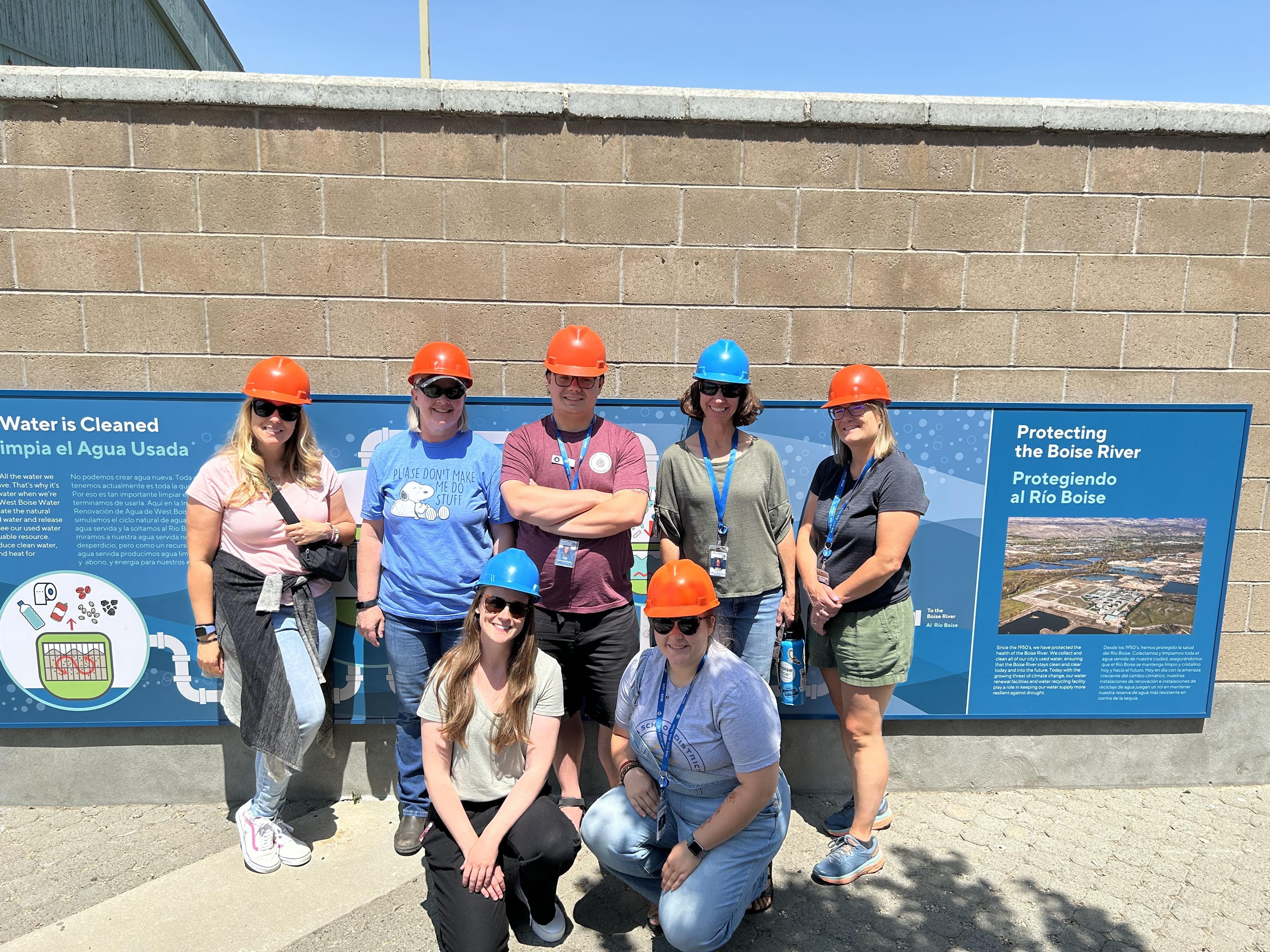 This summer, I had the pleasure to join the team at the Boise Watershed, one of the water renewal facilities in Boise. It was a joy to work with them and all the different groups that came to tour the facility. Over the course of the summer, I learned all about the water renewal facility and process, but it was also a joy to be a part of their friendly, outgoing education team. I participated in teambuilding, dinners, professional development opportunities; I was part of the team! One lucky part of the summer was when I got to join the WaterShed’s tour of the landfill, where we got a really in-depth, behind-the-scenes tour of the city’s waste management process. It was a fascinating opportunity that I wouldn’t have otherwise experienced.
This summer, I had the pleasure to join the team at the Boise Watershed, one of the water renewal facilities in Boise. It was a joy to work with them and all the different groups that came to tour the facility. Over the course of the summer, I learned all about the water renewal facility and process, but it was also a joy to be a part of their friendly, outgoing education team. I participated in teambuilding, dinners, professional development opportunities; I was part of the team! One lucky part of the summer was when I got to join the WaterShed’s tour of the landfill, where we got a really in-depth, behind-the-scenes tour of the city’s waste management process. It was a fascinating opportunity that I wouldn’t have otherwise experienced.
Initially, my summer project was going to be to create a new “Innovation Station” for their exhibit hall. However, after talking with the team and discussing my strengths, I was able to do a much more impactful project, creating videos in American Sign Language to show in their exhibit hall. Since my background is in Deaf Education, and I have a lot of connections in the ‘Deaf world,’ it was a very natural fit to help make their exhibit hall more accessible.
I wrote, re-wrote, and edited scripts, and when they looked good & approved by the city, I enlisted the help of my dad to help me create the videos (ASL is his native language, and Deaf representation is important). I created a home studio, where we shot the videos which I ‘directed.’ After edits, these videos were posted in their Exhibit Hall through the use of QR codes alongside their blind & low vision counterparts. You can watch the videos on the City of Boise’s YouTube page, here; https://www.youtube.com/@CityOfBoise/videos
At the end of the day, I think I succeeded in making the Boise WaterShed a more accessible, Deaf-friendly space! I am really looking forwards to taking my students on a field trip out to the WaterShed this year, to utilize these new ASL videos to their fullest extent. I am already in talks with my superintendent about making it happen. In terms of career knowledge, it would be an understatement to say that my knowledge of watersheds and water renewal is leaps and bounds past where it was at the beginning of the summer. I am greatly looking forwards to sharing this experience and knowledge with my students and encouraging them to take more climate-focused action in their lives and potentially in their careers as well.
Above all else, I want to highlight again what an absolute delight it was to work with the team at the WaterShed. They were some of the most kind, thoughtful, and passionate people that I have ever had the pleasure of working with. It brings me great relief to know that these are just some of the people who are doing the day-to-day work, helping to improve our climate, community action, and involvement. To Augie, Cindy, Arabelle, Jenny, Lisa, Crystal, Kelly, and everyone else who worked with me this summer… Thank you!!!
Grade Level and Subject Taught: Deaf & Hard of Hearing Elementary Ed, 3rd-5th Grade
Alicia Johnson at INL Stem Scholars Camp
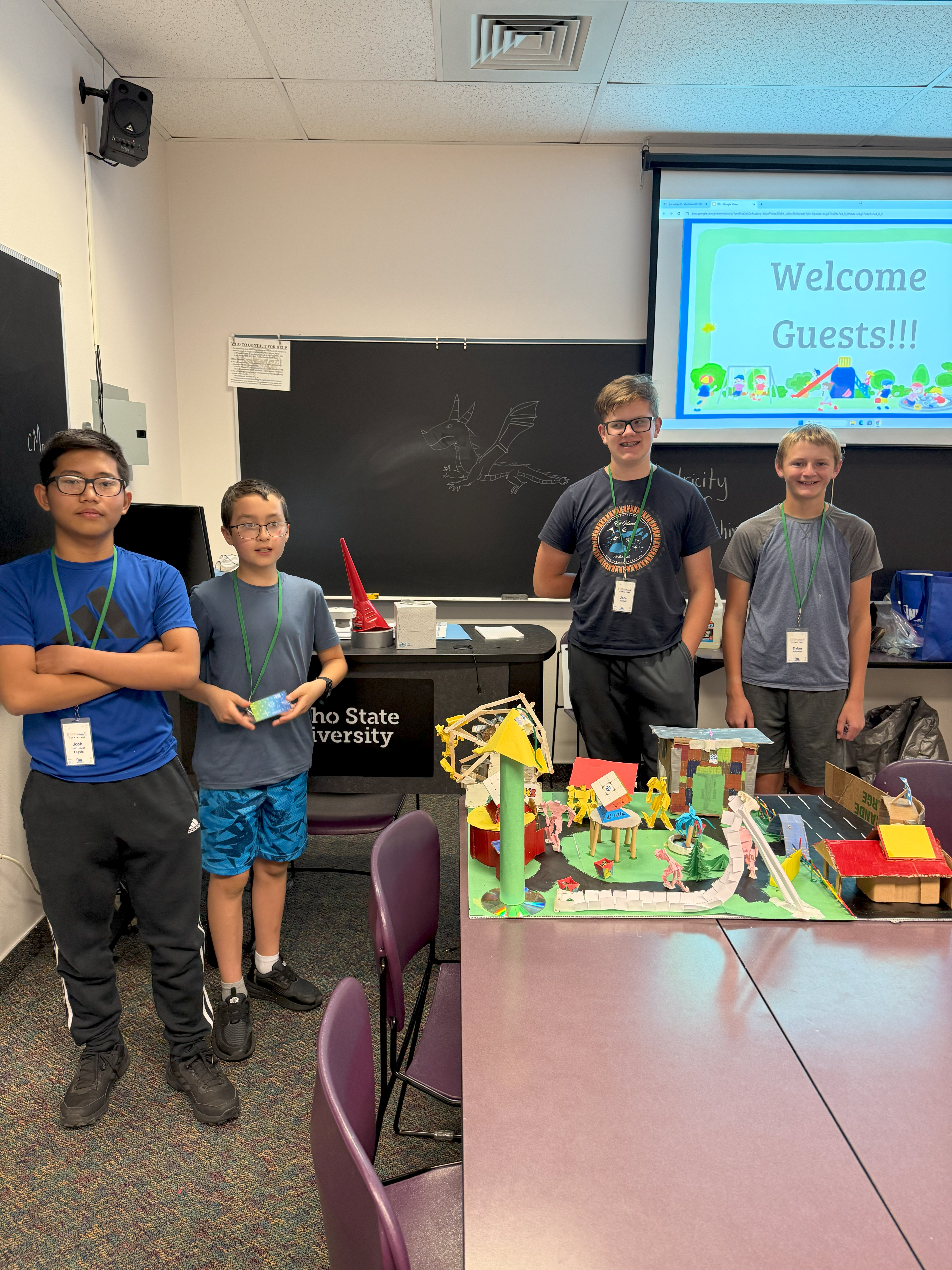 The externship opportunity I was tasked with was working for the Idaho National Laboratory (INL) for their summer STEM Scholars Camp. I worked with ages K-8, each week being a different age group, for example, Week 6 was grades 6,7,8 and week 7 was grades K, 1, 2. I used a provided curriculum, and the students learned about simple machines, circuits, water, recreation, and shelters. They were required to use recycled materials to build Future City Parks, and then had to present them to parents on Wednesdays. We then took a field trip on Thursdays to see examples of all of these at Funland in Tauphaus Park. I oversaw their projects, taught them about each thing, how to present, and was in charge of a group every week that ranged from 10-16 students in my own classroom. During this time I used the opportunity to help students grow interest in the engineering field, and identify there are all types of engineers and how the engineering process develops and works. We used the opportunities of building to develop tenacity and grit, and worked on social and people skills when presenting to the parents and other people. I have always taught 3rd grade or below and this gave me the chance to work with 4,5,6,7, and 8th graders. It was fun to see the connections I could make with them, and their ideas and views of the world around them. I am excited to implement some of this work into my own classroom and am setting up STEM Day/Night that the INL will come into my school to give all the students a chance to participate in fun, engaged learning.
The externship opportunity I was tasked with was working for the Idaho National Laboratory (INL) for their summer STEM Scholars Camp. I worked with ages K-8, each week being a different age group, for example, Week 6 was grades 6,7,8 and week 7 was grades K, 1, 2. I used a provided curriculum, and the students learned about simple machines, circuits, water, recreation, and shelters. They were required to use recycled materials to build Future City Parks, and then had to present them to parents on Wednesdays. We then took a field trip on Thursdays to see examples of all of these at Funland in Tauphaus Park. I oversaw their projects, taught them about each thing, how to present, and was in charge of a group every week that ranged from 10-16 students in my own classroom. During this time I used the opportunity to help students grow interest in the engineering field, and identify there are all types of engineers and how the engineering process develops and works. We used the opportunities of building to develop tenacity and grit, and worked on social and people skills when presenting to the parents and other people. I have always taught 3rd grade or below and this gave me the chance to work with 4,5,6,7, and 8th graders. It was fun to see the connections I could make with them, and their ideas and views of the world around them. I am excited to implement some of this work into my own classroom and am setting up STEM Day/Night that the INL will come into my school to give all the students a chance to participate in fun, engaged learning.
Grade Level and Subject Taught: K-8 S.T.E.M.
Christopher Glascock at Idaho Department of Education: College and Career Readiness
 Bringing the Classroom to the Policy Table: An Educator’s Perspective on College & Career Readiness
Bringing the Classroom to the Policy Table: An Educator’s Perspective on College & Career Readiness
As a classroom teacher, I’ve always believed that preparing students for life after school takes more than just good intentions. It takes clear goals, consistent language, and tools that actually work in the classroom. This summer, I got to step outside of my usual role and join a bigger conversation through an externship focused on Idaho’s College & Career Readiness (CCR) Competencies. Working with state leaders, I helped shape tools and resources that directly support student growth from elementary through postsecondary education.
CCR isn’t just a high school box to check off. It’s something that should start in the early grades and continue through every level of learning. One of the big goals of this externship was to help create that kind of consistency across the board. And for educators to really use these tools, they need to be clear, easy to understand, and ready to apply in real classrooms. Whether you’re teaching third grade or running a CTE program, CCR should be something you can point to, use, and talk about with students.
Early on in the externship, I got the chance to help build a visual brand for CCR something that makes these competencies more recognizable and engaging. I worked closely with Lorie Bolen and Jacque Deahl to draft a project brief and kick off the design process. We looked at fun, game-inspired themes like leveling up and powering up things that students already connect with. Elementary designs were bright and playful, while middle and high school designs leaned more into real-world, career-ready imagery. Inspirations came from Mario, Tetris, and other playful visuals students love.
Throughout the process, I got real-world support from Lorie Bolen, an incredibly talented graphic designer. We met once a week and sometimes twice a week. She made sure I was learning, growing, and staying on track with what needed to be done. Her advice and guidance helped turn all the ideas into polished visuals that really work. We also talked about whether to include Idaho-specific branding or go with something more universal that other districts could also use. In the end, we came up with three visual sets for elementary, secondary, and postsecondary all tied together with a common theme of growth and readiness. These designs will help make CCR more visible and useful in classrooms across the state.
Another big part of the externship was trying to gather input from professionals in the field about how CCR is showing up in real life. Originally, I planned to conduct interviews with educators, business leaders, parents, and more. But with summer schedules being what they are, that was tough. So, I pivoted and put together a survey that I shared across my network. That gave me a new way to gather input and look for trends. The responses pointed to the need for clearer language, real classroom examples, and stronger connections between what we teach and the real-world skills students need.
One of the parts I enjoyed the most was working on the Performance Level Descriptors (PLDs). It was like putting together a big puzzle. I got to look closely at each CCR competency and figure out how it lines up with state standards at different grade levels. I also studied national frameworks like the NACE competencies and Durable Skills to help guide the work. The result is a more streamlined and consistent way to describe student growth, helping teachers and students track progress and set clear goals.
All of that led directly into the next piece: building a one-page tool for teachers. This resource links each CCR competency with related Idaho content standards and includes some simple graphic design to make it easy to use. The idea was to create something teachers could actually use right away whether in a lesson plan, a goal-setting activity, or a team meeting. It’s built to work in both print and digital formats and supports educators across elementary, secondary, and postsecondary levels.
This externship reminded me how important it is to have teachers involved in creating the tools we’re expected to use. I was able to bring a teacher’s lens to the work and, in the process, grow as a professional. I believe even more strongly now that CCR is possible but only if we keep it real, aligned, and usable in the day-to-day of teaching.
I want to say a big thank you to Jacque Deahl, Brock Astle, and Lorie Bolen. They were incredible to work with and created a space where I could contribute and grow. This externship was a fantastic experience. I learned more about branding, design, real-world applications, time management, and the deeper purpose behind CCR. I’ll take these lessons with me into the classroom and wherever this work takes me next.
Grade Level and Subject Taught: High School: CTE Business Management, Graphic Design, Photography, Journalism
Darla Weathersby at Idaho Innovation Center/ Yellowstone Food Village
This summer, I was tasked with increasing public engagement and foot traffic at the Yellowstone Food Village through event planning, marketing, and community outreach. The goals of the project were to create a stronger local presence, bring families and community members together, and support small food truck businesses by drawing more visitors to the site.
During my time at the host site, I successfully organized and hosted six events—three Family Nights and three Eats and Beats evenings. Each event was designed to provide an inviting and enjoyable experience for a wide range of audiences. I also created supporting promotional materials, including flyers, door hangers, and other print and digital advertising tools. To ensure maximum visibility, I personally distributed these materials throughout the community, targeting local neighborhoods, businesses, and public spaces.
This experience significantly expanded my understanding of real-world marketing, outreach strategies, and event logistics. It also gave me a stronger appreciation for the importance of community-building and collaboration. From a teaching perspective, it reinforced the value of project-based learning, creativity, and authentic audience engagement. Moving forward, I plan to integrate more hands-on, community-connected projects into my classroom and encourage students to think beyond the school walls when applying their skills.
Grade Level and Subject Taught: 7th Grade Mathematics
Colton Walker at Wild West Farms
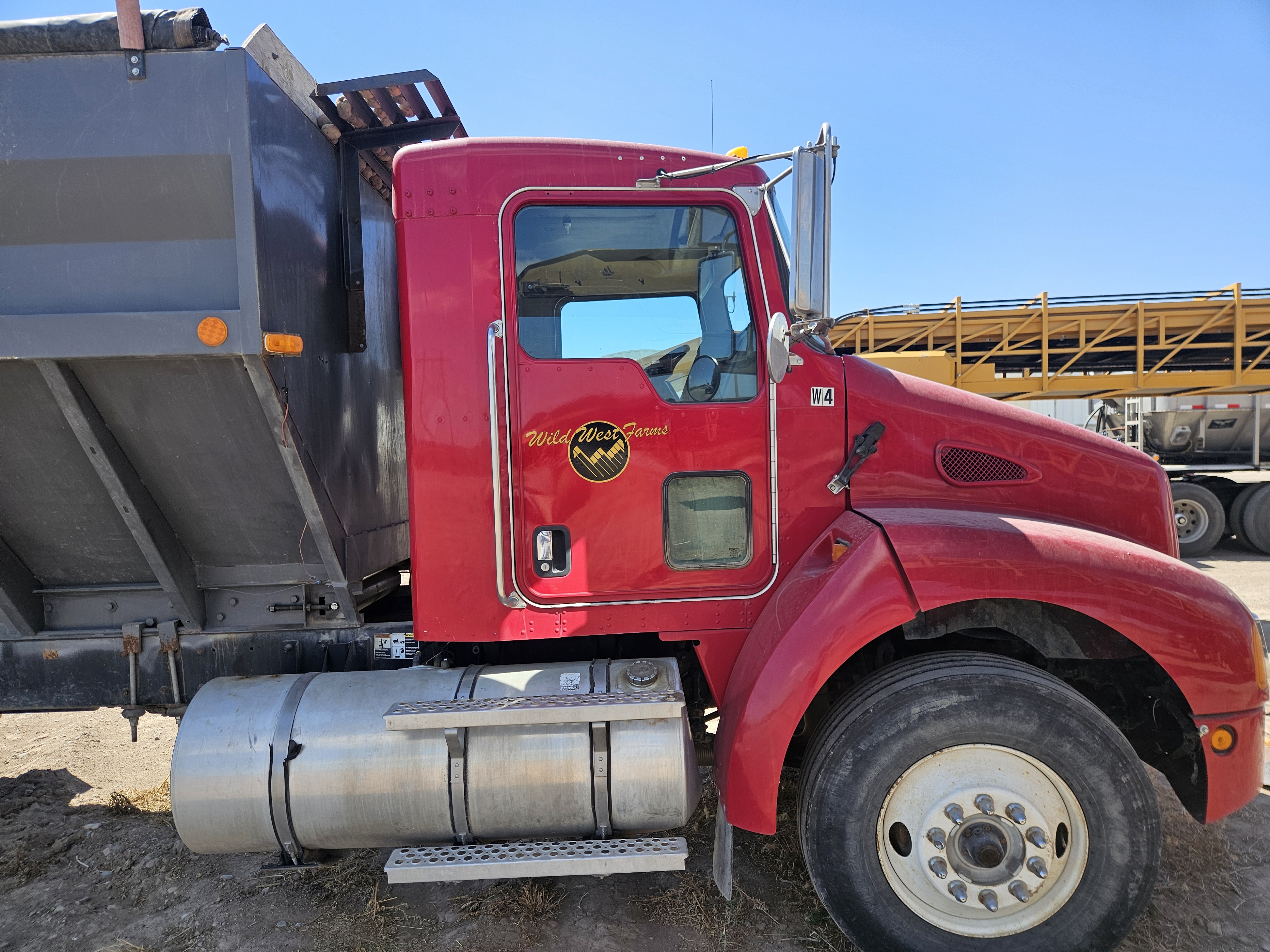 As part of my externship, I was tasked with learning and overseeing the entire process of an agricultural commodity—from planting and growth to harvesting and final shipment. Throughout this experience, I gained valuable insight into each stage and observed how modern technology continues to transform the agricultural industry. From the initial seeding process to cultivation, harvest, and transportation, STEM was embedded in every step. I witnessed the use of genetically modified crops to enhance yield and production. I observed how drones are utilized to apply fertilizer and monitor crop health—clear examples of innovation in action. This experience also deepened my understanding of the environmental sector, including how government regulations impact water rights and fertilizer use. Most importantly, I now understand how to apply this real-world knowledge in the classroom to support my students better. By showing them how STEM applies to diverse careers, including agriculture, I can help them connect their learning to the world around them and discover new possibilities for their future.
As part of my externship, I was tasked with learning and overseeing the entire process of an agricultural commodity—from planting and growth to harvesting and final shipment. Throughout this experience, I gained valuable insight into each stage and observed how modern technology continues to transform the agricultural industry. From the initial seeding process to cultivation, harvest, and transportation, STEM was embedded in every step. I witnessed the use of genetically modified crops to enhance yield and production. I observed how drones are utilized to apply fertilizer and monitor crop health—clear examples of innovation in action. This experience also deepened my understanding of the environmental sector, including how government regulations impact water rights and fertilizer use. Most importantly, I now understand how to apply this real-world knowledge in the classroom to support my students better. By showing them how STEM applies to diverse careers, including agriculture, I can help them connect their learning to the world around them and discover new possibilities for their future.
Grade Level and Subject Taught: 9th-12th, History, Government, and Economics
Daniel Masinter at Clearwater Financial LLC
 Clearwater Financial has recently upgraded their project and client management software. Due to this upgrade, they were unfamiliar with the best way to fully utilize their system. I was tasked with finding ways to optimize and automate their systems to help lessen their workload and make their days more efficient.
Clearwater Financial has recently upgraded their project and client management software. Due to this upgrade, they were unfamiliar with the best way to fully utilize their system. I was tasked with finding ways to optimize and automate their systems to help lessen their workload and make their days more efficient.
The primary way I did this was by learning how to use Deluge, their system’s scripting language. I spent a great deal of time poring through documentation, building, testing, and re-testing various scripts and workflows until, eventually, the solution worked. I was able to build quite a few automatic emails for their clients, and also automate some back end processes that will help them manage the wide variety of projects and clients that they interact with in the course of their work. I was also asked to train some of their employees in how to use this system.
Building the scripts and automation processes challenged me in new ways. I had to re-learn things that I knew from my time in college, and also had to reach out to experts in programming work. By doing this, I placed myself back into my students’ shoes. It was frustrating, and frequently I would find myself putting off work because I was stuck and didn’t know how best to proceed. Doing this externship reminded me of how my students likely feel when they’re encountering complicated math concepts for the first time. Teaching and training the staff of Clearwater also helped me refine how I want to instruct my students and help them build their own problem-solving skills. I’m excited to take the skills that I’ve learned and try to find new ways to push and challenge my students in this upcoming year.
Grade Level and Subject Taught: High School Math
Randy Hawkins at United States Forest Service – Boise National Forest
 During my time with the engineers in the Boise National Forest, I contributed to a vital effort in partnership with the United States Forest Service—whose mission is to sustain the health, diversity, and productivity of national forests to meet the needs of present and future generations. Our project directly supported the agency’s goal of ensuring safe and reliable public access through well-designed infrastructure, particularly in the wake of natural disasters like forest fires.
During my time with the engineers in the Boise National Forest, I contributed to a vital effort in partnership with the United States Forest Service—whose mission is to sustain the health, diversity, and productivity of national forests to meet the needs of present and future generations. Our project directly supported the agency’s goal of ensuring safe and reliable public access through well-designed infrastructure, particularly in the wake of natural disasters like forest fires.
The focus of our work was identifying, documenting, and reporting signage destroyed by the previous year’s forest fires. Forest signs play a crucial role in guiding, educating, and protecting visitors. As the Forest Service is required to maintain these signs, their loss significantly impacts both public safety and visitor experience. By assessing the damage and informing next steps, we helped lay the groundwork for restoring critical access across the Boise National Forest.
Through field surveys and collaborative reporting, our team made it possible for the Forest Service to move forward with planning and prioritizing sign replacement. This was especially meaningful given the ongoing budgetary constraints and staffing shortages faced by the agency. Cuts to federal funding have stretched the Forest Service thin, leaving many departments with limited resources to tackle growing environmental challenges. Our support was more than appreciated; it was essential to helping them maintain operations and continue serving the public.
This experience opened my eyes to the demanding and often under-recognized work that goes into stewarding public lands. The resilience, collaboration, and generosity I witnessed left a lasting impression on me—not only as a professional, but as an educator. Moving forward, I intend to infuse my teaching with lessons about civic responsibility, teamwork, and environmental stewardship. I want students to recognize that real-world learning can—and should—connect with the people and places that sustain our communities.
Grade Level and Subject Taught: 3rd Grade, All Subjects
Char Kalbfleisch at Boise State University
I started my externship with little to no knowledge of iPads and Apple programs. I am now leaving this time with vast knowledge of each of the programs. I learned everything from how to log into the Apple Learning Community and the wealth of information there. There were lessons that would walk you through how to use each of the programs. When you were done you could take a test to ensure that you really knew your stuff. There were so many different ideas that I came up with to use in my classroom. One of the programs that I used was Keynote. The students could design a monster/animal from shapes in the program. I also liked keynote because they could later design a mythical monster and then save them. You could then bring the saved image into Makr and use it to put it into the environment. I plan to use this to have the students create the creature but then write about it. I really enjoyed my time in Storytelling. The one that had the most impact on me was Design Challenge. I got to use a green screen for the first time and also create an information sheet in Freeform. I chose to take a look at depression. I suffer from it and knew little about it. I didn’t know all the facts and information about it. The time that I have spent this summer has been one of the best experiences that I have had the opportunity to participate in. The time spent with the children, and the OnRamp staff has been the best investment in my teaching. Thank you again.
Grade Level and Subject Taught: 2nd Grade
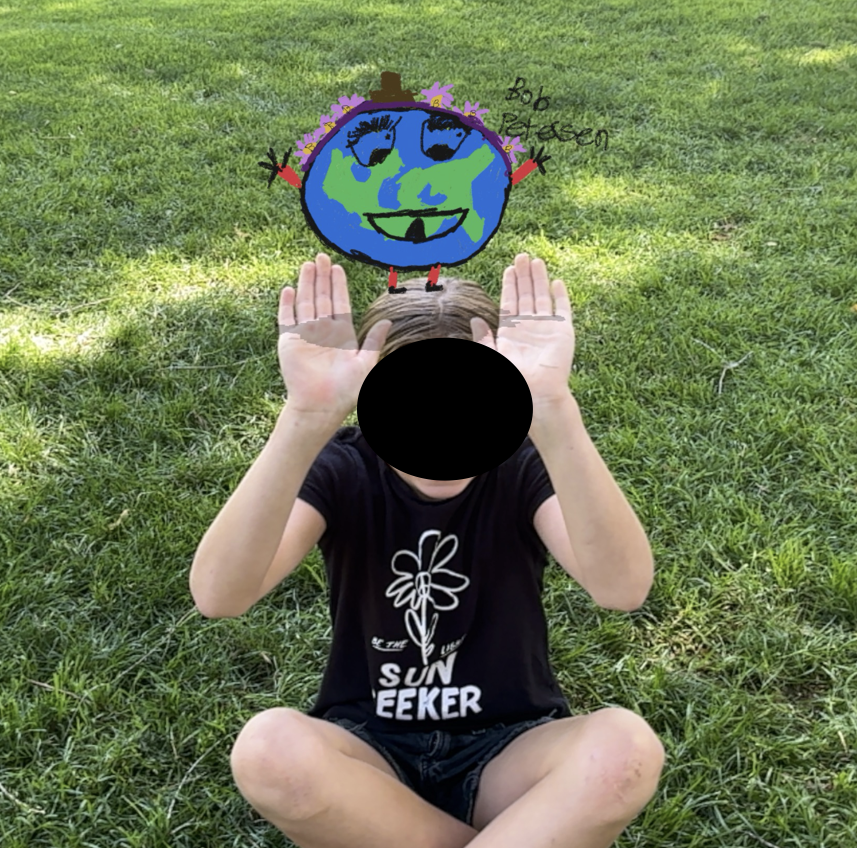
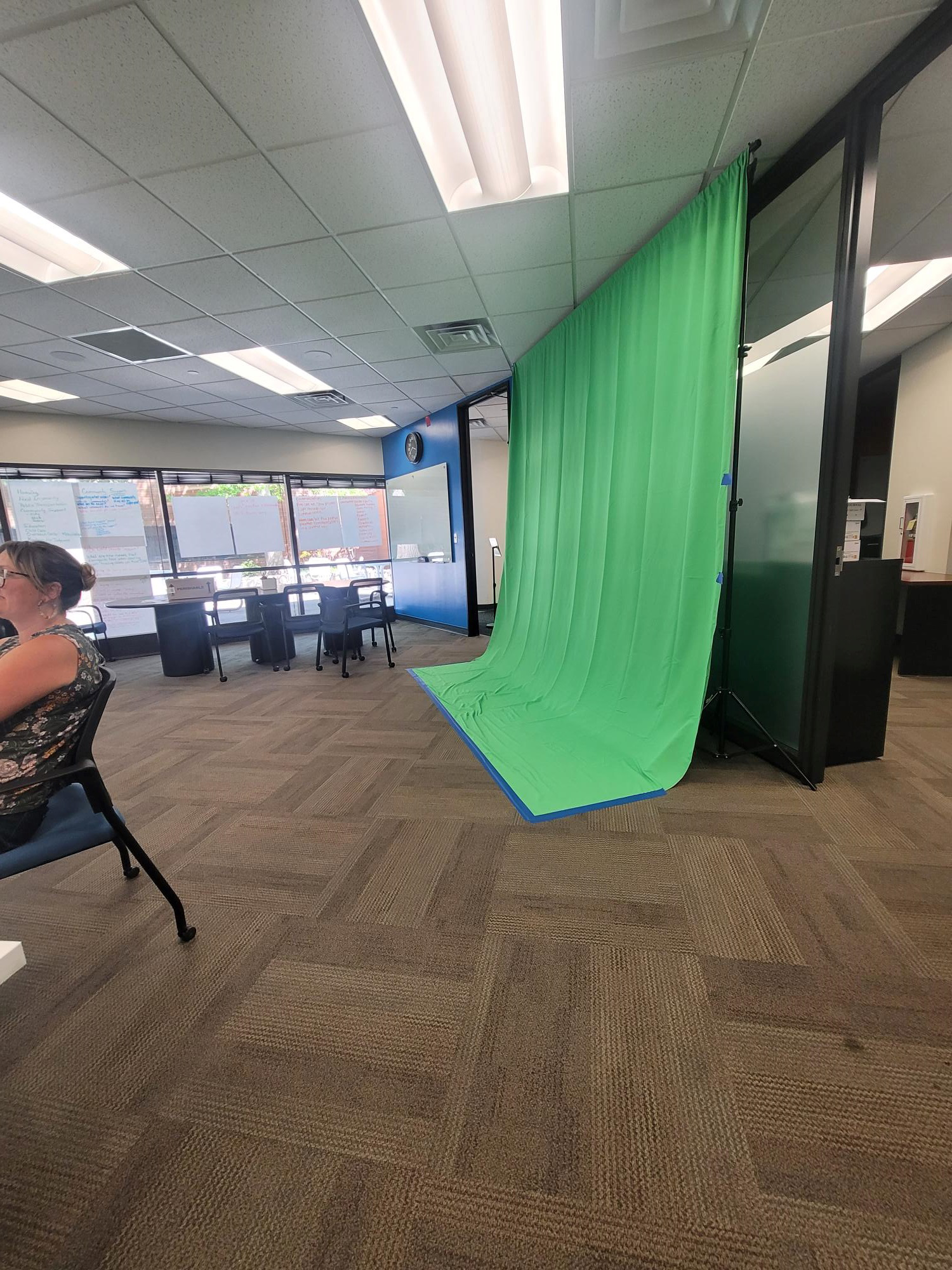
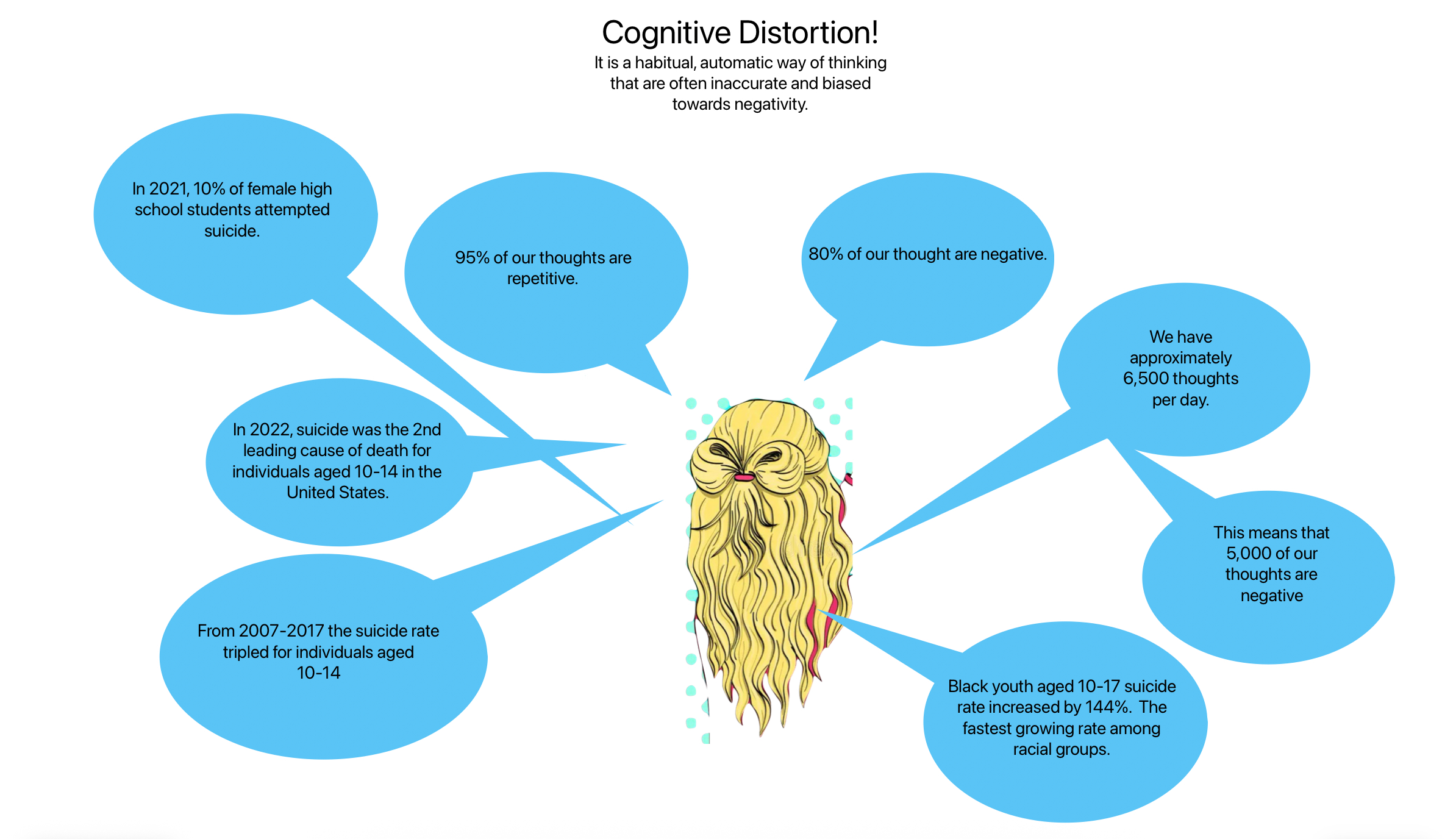
Kate Metz at NCCE
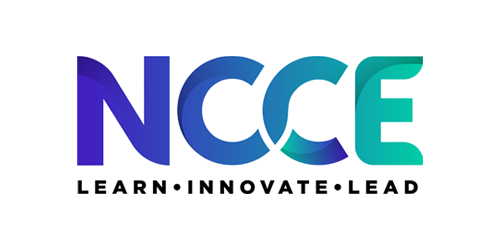 I was tasked with finding, testing, and writing about different education technologies. In the world of AI, there are so many new tools available for teachers that most of us just never have had the time to try out. I was able to do that and write up what I learned about them to help other teachers!
I was tasked with finding, testing, and writing about different education technologies. In the world of AI, there are so many new tools available for teachers that most of us just never have had the time to try out. I was able to do that and write up what I learned about them to help other teachers!
I learned a lot about AI and even found a few AI tools that will help with differentiation. I occasionally get students that read at an elementary level (I teach high school) and I really struggled how to change science concepts (like the complexity of cancer) into elementary reading level, so this will help me a lot!
Grade Level and Subject Taught: High School Science
Tatyana Struk at OnRamp
 During my time at OnRamp, I was tasked with working alongside the summer school program and Parks and Recreation to introduce technology skills to students in grades K–6 by encouraging them to use their creativity and imagination. The primary goals of the project were to make technology more accessible and engaging for young learners while fostering confidence and curiosity through hands-on activities. Throughout my work, I successfully helped students explore various tech-based projects, making learning both fun and educational. Personally, this experience had a profound impact on me—it helped me overcome my own fear of technology by showing me that with the right support, anyone can learn and thrive in this area. As a result, I plan to incorporate more technology into my teaching and continue collaborating with my host site during the school year to expand technology education at my school.
During my time at OnRamp, I was tasked with working alongside the summer school program and Parks and Recreation to introduce technology skills to students in grades K–6 by encouraging them to use their creativity and imagination. The primary goals of the project were to make technology more accessible and engaging for young learners while fostering confidence and curiosity through hands-on activities. Throughout my work, I successfully helped students explore various tech-based projects, making learning both fun and educational. Personally, this experience had a profound impact on me—it helped me overcome my own fear of technology by showing me that with the right support, anyone can learn and thrive in this area. As a result, I plan to incorporate more technology into my teaching and continue collaborating with my host site during the school year to expand technology education at my school.
Grade Level and Subject Taught: K-6 STEM
Sarah Jones at ION and TMC Labs
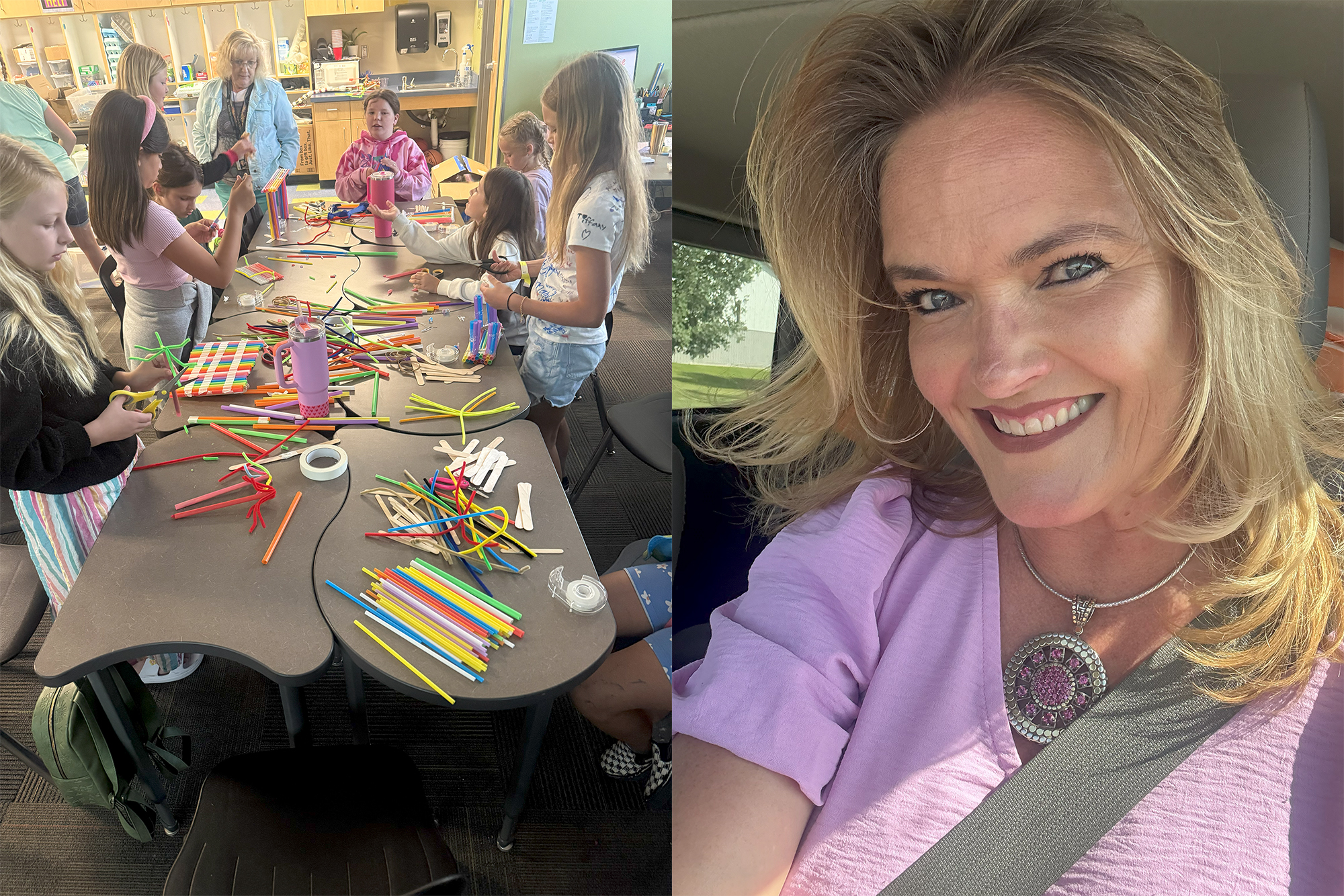 This summer, I had the incredible opportunity to participate in an externship through the Idaho STEM Action Center with the Idaho Out-of-School Network (ION) and TMC (Think, Make, Create) STEM Labs—and it was nothing short of inspiring.
This summer, I had the incredible opportunity to participate in an externship through the Idaho STEM Action Center with the Idaho Out-of-School Network (ION) and TMC (Think, Make, Create) STEM Labs—and it was nothing short of inspiring.
As a Special Education teacher at Declo Junior High in the Cassia County School District, I work with students in grades 6 through 8, many of whom have unique learning needs and challenges. I’m also EL certified, so accessibility, inclusivity, and language development are always at the forefront of my teaching practice. This externship gave me the chance to expand that mission beyond my own classroom and into the broader world of out-of-school STEM learning.
From the very beginning, I was welcomed into a team that shares a deep commitment to engaging all learners in hands-on, exploratory STEM education. One of the highlights of my experience was participating in a Community STEM Night, where I worked with families and students as they explored fun and engaging activities from the TMC Lab. Watching their excitement and curiosity reminded me of why inclusive, tactile, and visual learning matters—because when students see themselves as capable creators and problem-solvers, anything is possible.
I also had the opportunity to work directly with students and teachers through the Sparks Summer School Program, supporting learning in real time. Collaborating with educators during this program helped me see how TMC Lab activities can be adapted and enriched to meet a variety of student needs—especially for those with IEPs or English language learning goals.
A major focus of my externship was revising and updating TMC Lab activity guides to incorporate scaffolding, accommodations, and supports that make STEM learning more accessible to all students, from kindergarten through 8th grade. My goal was to ensure that whether a student has a disability, is learning English, or simply needs additional support, there would be tools in place to help them succeed and stay engaged. I focused on clear language, flexible options, and universal design strategies that can support learners across a wide spectrum.
In addition to creating accommodations, I also worked to align each Lab activity with Idaho State Science Standards, and provided recommendations for WIDA ELD standards and IEP-aligned supports. This makes it easier for facilitators—whether they’re teachers, paraprofessionals, or afterschool leaders—to deliver each activity with confidence, knowing it connects to core educational goals.
I also had the chance to add some of my favorite STEM lessons from my own classroom, expanding the Lab’s resources with fresh, inclusive ideas that I know work well with middle school learners. It felt great to contribute activities that have brought success and joy to my students—and to now share them with others across the state.
One of my biggest takeaways from this experience is a renewed drive to bring more hands-on learning and project-based instruction into my classroom. My students thrive when they are actively building, experimenting, and problem-solving—and this externship reinforced just how powerful those moments of discovery can be. I’m committed to using what I’ve learned this summer to create more purposeful STEM projects that connect academic content to real-world applications and engage all learners in meaningful ways.
This externship has truly empowered me as both an educator and an advocate. I now feel even more equipped to bring inclusive, high-quality STEM education to my students and to help others do the same. It reaffirmed my belief that STEM is not just for some students—it’s for every student.
I’m incredibly grateful to the Idaho STEM Action Center, ION, and the entire TMC Lab team for trusting and selecting me with this opportunity and supporting me throughout the experience. If you’re a fellow educator, especially one working with diverse learners, I strongly encourage you to apply for an externship like this. It will expand your perspective, renew your passion, and most importantly—help you reach more students in more meaningful ways.
Grade Level and Subject Taught: 6th-8th Grade Special Education
Rachael Clarke at Idaho Falls Zoo
 This summer I was able to work at the Idaho Falls Zoo in the Education Center. One of my responsibilities there was taking guest surveys about their experiences at animal exhibits, exploration carts, keeper chats, and zoo signage in order to understand guest experiences and enhance the zoo. I also was able to teach guests about different animal species from Exploration Station carts and develop the Exploration Station program further by creating curriculum for additional species to be taught about. I was able to assist with education programs at the zoo such as Zoo Camps- where children are able to experience a fun week of learning about animals with hands on lessons and activities, and Junior Zoo Crew- where youth from the community get to experience a chance to work with animals and learn about being a Keeper or Zoo Employee.
This summer I was able to work at the Idaho Falls Zoo in the Education Center. One of my responsibilities there was taking guest surveys about their experiences at animal exhibits, exploration carts, keeper chats, and zoo signage in order to understand guest experiences and enhance the zoo. I also was able to teach guests about different animal species from Exploration Station carts and develop the Exploration Station program further by creating curriculum for additional species to be taught about. I was able to assist with education programs at the zoo such as Zoo Camps- where children are able to experience a fun week of learning about animals with hands on lessons and activities, and Junior Zoo Crew- where youth from the community get to experience a chance to work with animals and learn about being a Keeper or Zoo Employee.
Everyone here is passionate about animals and conservation. I learned so many different things about animals, habitats, and their keeping and care. I learned about how researchers and scientists help struggling populations in the wild, and how accredited Zoos also assist in the repopulation of endangered and threatened species. Everything I have learned will be taken into account when I am teaching similar topics in the future, and I am so thankful for that!
During my time here I watched the zoo go through a rigorous accreditation inspection, where the Association of Zoos and Aquariums (AZA) observed and inspected the zoo. The AZA were impressed by our survey protocol and QR codes for guest feedback that allowed any comments, positive or negative. Being able to observe another business going through an accreditation process was insightful and beneficial to me, as I am on my school’s STEM Accreditation team and am working with them to have our school STEM Certified in the near future.
One of my favorite parts of working as an extern at the zoo was running the Snow Leopard Exploration Station. Snow leopards are silent, majestic creatures. In the mornings I would set up the cart across the path from their exhibit, and during the day I could watch them play as I taught guests about their special tails and spots, and how to find them when they hide. I showed guests the special motion sensor trail camera that researchers use in Mongolia and other countries with snow leopards and let them play the part of the researcher by finding the hiding snow leopard in several photos. I would also show guests some handmade woolen toys that were made by farmers and their families in snow leopard populated communities. The small toys are sold as a secondary source of income for those families, as some are affected by snow leopards hunting their animals. Some proceeds from the small toys also go towards snow leopard conservation efforts. I also explained to guests that by visiting the zoo and using the zoo’s coins for conservation program, they were actually helping snow leopards in the wild!
I have learned a lot about animal species and how the Zoo Education Center runs. I am excited to take my new knowledge into my classroom and teach my students about some of the things I experienced. Since I was young, I have loved animals, and I always wanted to work with them in some capacity. I am grateful for this experience and will always remember the summer I worked at the zoo!
Grade Level and Subject Taught: Kindergarten
Suzy Palmer at Boise Urban Garden School
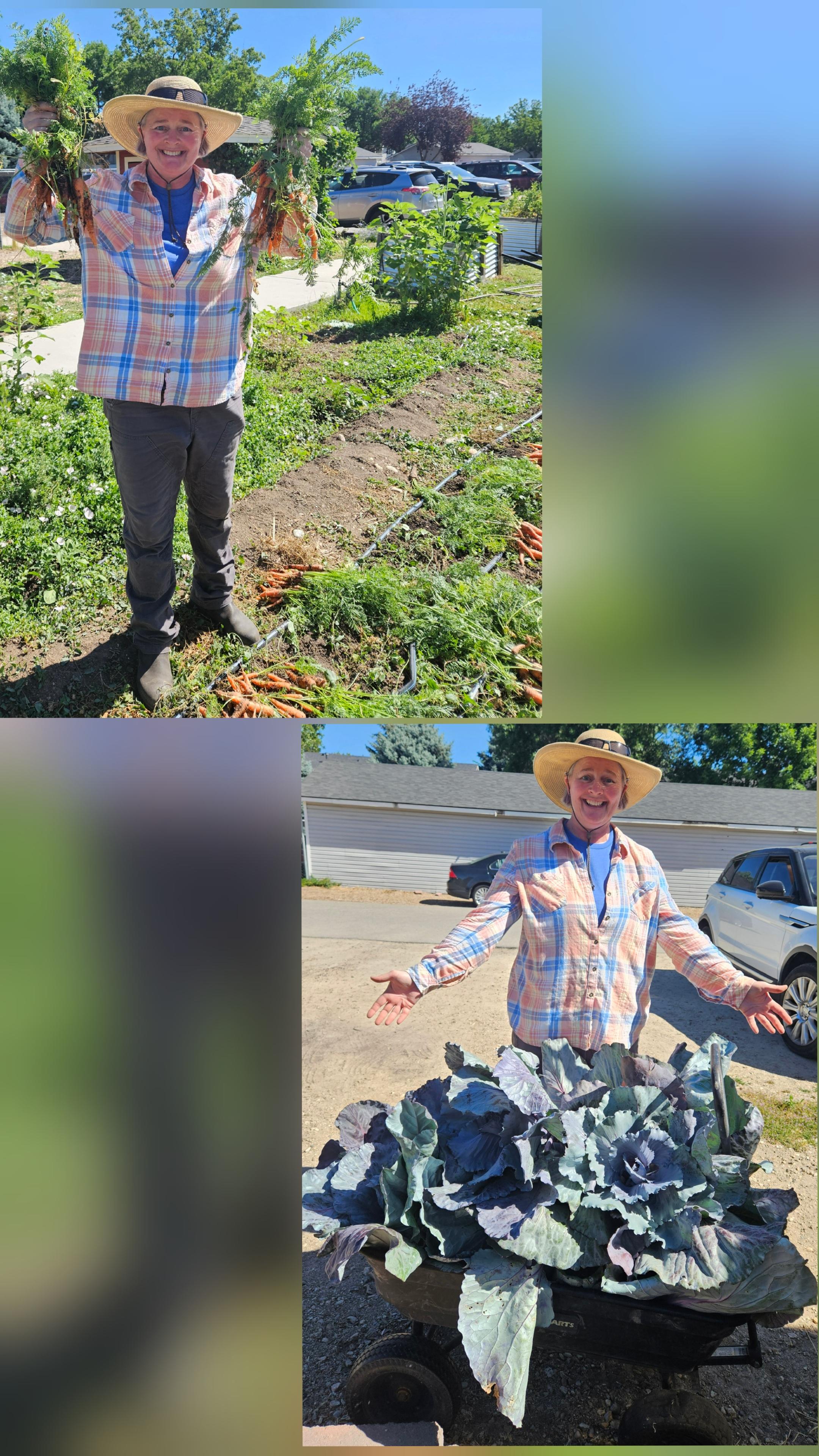 This is my second year working at BUGS, and I love it! I was assigned to assist in the garden by planting, harvesting, weeding, trellising, and fertilizing. I helped plant fennel, lettuce, kohlrabi, carrots, cover crop, tomatoes, peppers, eggplant, and other such vegetables. I harvested tomatoes, zucchini, fennel, elderberries, raspberries, onions, carrots, and potatoes. My goal working at BUGS was to learn more about the gardening processes and problems to take back information for my horticulture and botany classes. I learned about the benefits of cover crops to help improve soil conditions. I learned about different varieties of vegetables that are specific for growing in greenhouses. I also learned better ways to improve carrot and fennel yields as well as protecting leafy greens from insects and animals without using harmful chemicals. With the knowledge I have gained, I am hoping to incorporate a more “hands-on” approach in my classes. I want to allow my students more opportunities to work through real world problems to help them retain knowledge because they worked it out on their own with my guidance. BUGS is a great place to get your hands dirty, sweat a lot, and learn so many important factors about sustainable/regenerative gardening.
This is my second year working at BUGS, and I love it! I was assigned to assist in the garden by planting, harvesting, weeding, trellising, and fertilizing. I helped plant fennel, lettuce, kohlrabi, carrots, cover crop, tomatoes, peppers, eggplant, and other such vegetables. I harvested tomatoes, zucchini, fennel, elderberries, raspberries, onions, carrots, and potatoes. My goal working at BUGS was to learn more about the gardening processes and problems to take back information for my horticulture and botany classes. I learned about the benefits of cover crops to help improve soil conditions. I learned about different varieties of vegetables that are specific for growing in greenhouses. I also learned better ways to improve carrot and fennel yields as well as protecting leafy greens from insects and animals without using harmful chemicals. With the knowledge I have gained, I am hoping to incorporate a more “hands-on” approach in my classes. I want to allow my students more opportunities to work through real world problems to help them retain knowledge because they worked it out on their own with my guidance. BUGS is a great place to get your hands dirty, sweat a lot, and learn so many important factors about sustainable/regenerative gardening.
Grade Level and Subject Taught: Middle School Science, High School Botany/Horticulture
Addie Ashton at Lee Pesky Learning Center
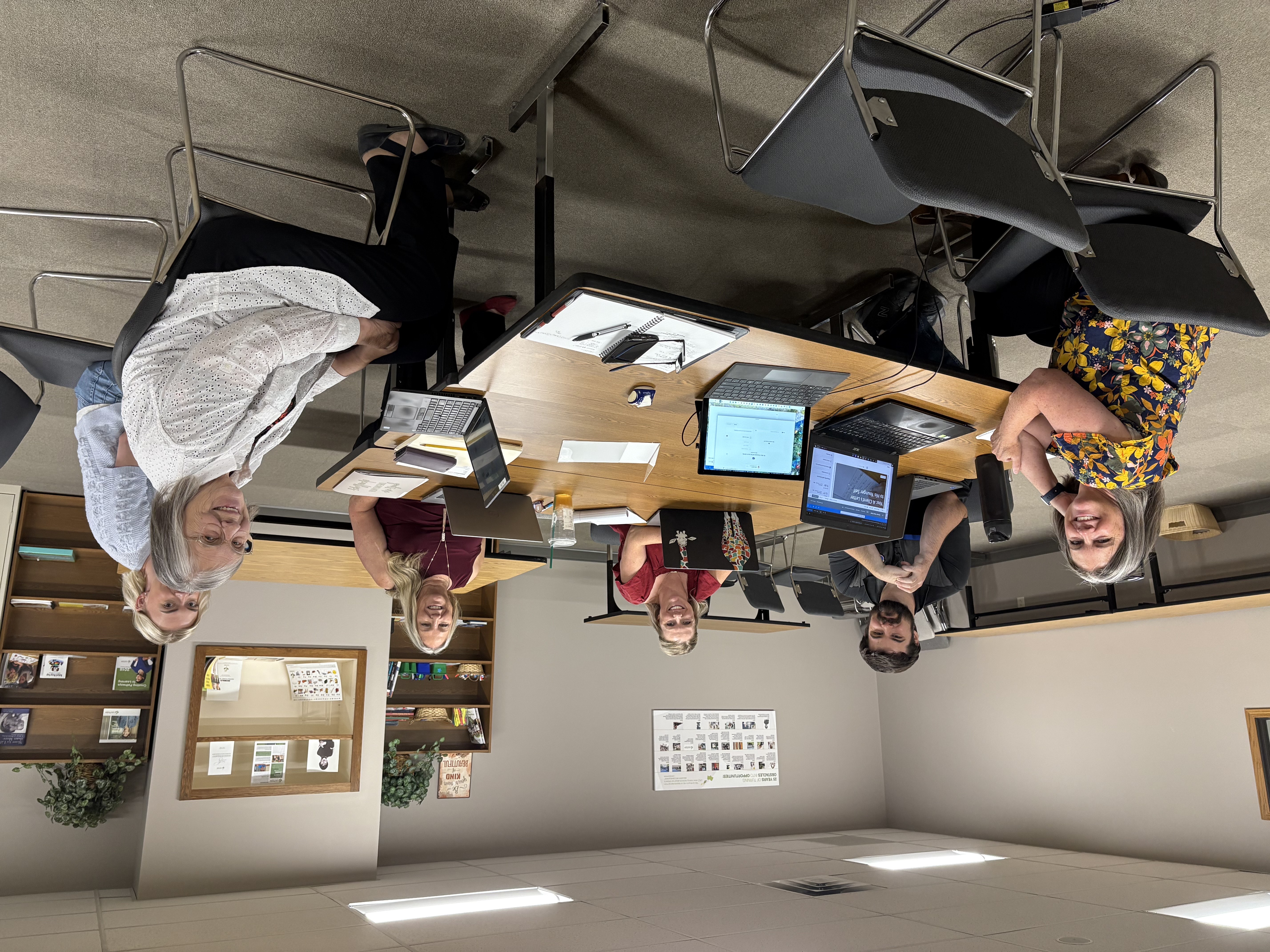 During my externship at the Lee Pesky Learning Center (LPLC), I had the opportunity to support two technical initiatives: transitioning all organizational files from an on-site server to cloud-based storage and developing Microsoft SharePoint sites for each department and team. Our primary objectives were to design updated file structures for LPLC’s document libraries and build customized SharePoint environments tailored to each department’s needs.
During my externship at the Lee Pesky Learning Center (LPLC), I had the opportunity to support two technical initiatives: transitioning all organizational files from an on-site server to cloud-based storage and developing Microsoft SharePoint sites for each department and team. Our primary objectives were to design updated file structures for LPLC’s document libraries and build customized SharePoint environments tailored to each department’s needs.
To accomplish this, we worked closely with department directors to understand their existing server structures and develop alternatives. We also worked with a technology committee to plan, design, and implement SharePoint sites. Additionally, we created training materials to help staff become familiar with the new tools and systems.
This externship was valuable to me in several ways. First, it significantly expanded my understanding of Microsoft products. While I had prior experience with Word, Excel, and PowerPoint, this project introduced me to tools like SharePoint, Teams, and Microsoft Lists, as well as broader concepts like file organization and flat file architecture. Second, I gained a deeper understanding of LPLC’s mission and services, which allows me to better communicate their offerings to students, families, and staff. Finally, I built meaningful connections with members of the LPLC technology team—relationships that may benefit students I work with who are interested in technology careers.
Overall, I thoroughly enjoyed my experience with LPLC. I gained valuable skills and insights throughout the summer.
Grade Level and Subject Taught: 9th-12th, College and Career Counselor
Elaine Goodwin at Idaho Falls Zoo at Tautphus Park
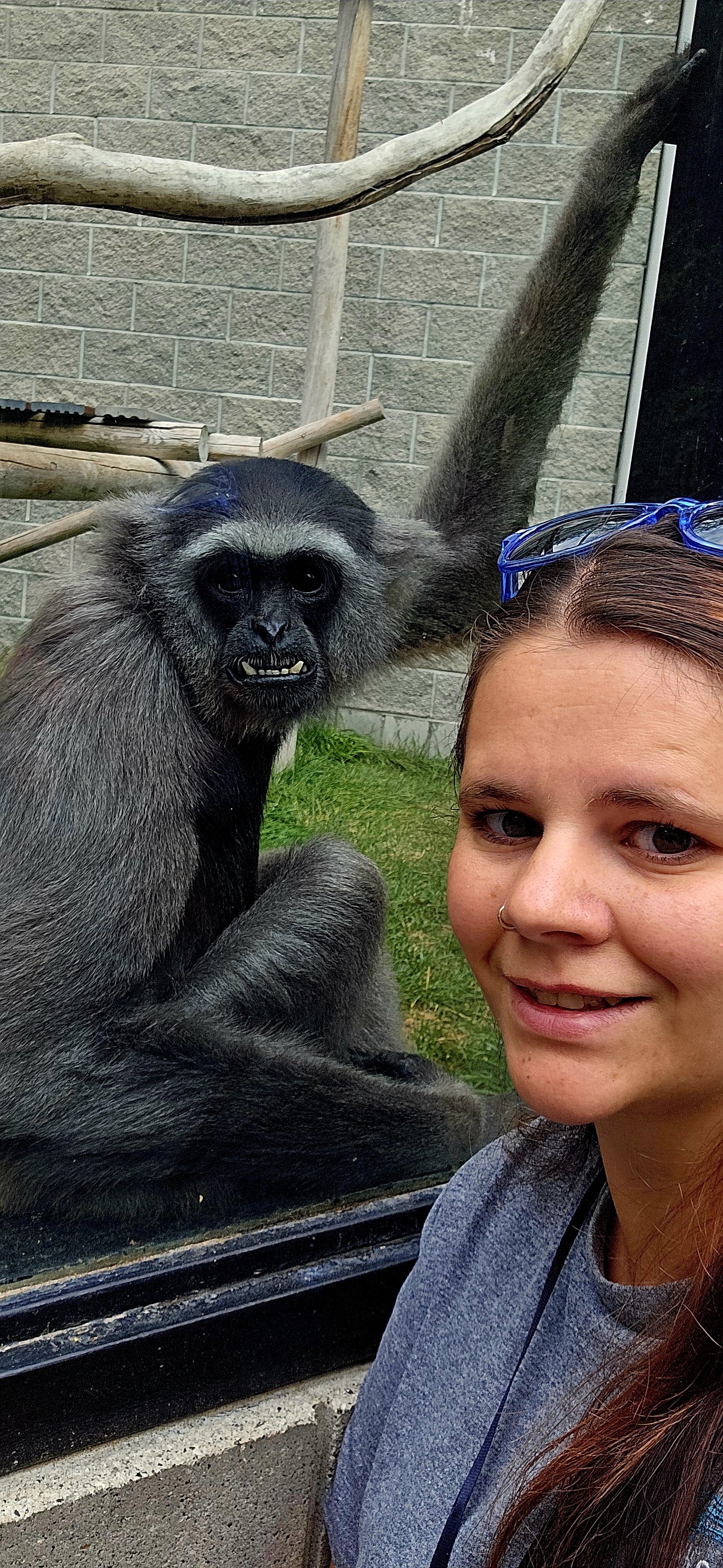 This summer, I completed an externship at the Idaho Falls Zoo. My primary project involved helping develop curriculum zoo’s education department, supporting their efforts to promote animal conservation and empathy through education. A key component of the project was collecting guest surveys to assess how effectively the zoo fosters empathy for animals and communicates conservation messages. I was also responsible for helping design and lead public outreach activities centered on animal habitats and behavior.
This summer, I completed an externship at the Idaho Falls Zoo. My primary project involved helping develop curriculum zoo’s education department, supporting their efforts to promote animal conservation and empathy through education. A key component of the project was collecting guest surveys to assess how effectively the zoo fosters empathy for animals and communicates conservation messages. I was also responsible for helping design and lead public outreach activities centered on animal habitats and behavior.
The goals of the externship were to support the zoo’s mission by improving conservation education and public engagement. We aimed to collect meaningful data from guests that would help the zoo understand the emotional and educational impact of their exhibits and programs. We also worked to enhance the zoo’s educational programming with engaging, hands-on curriculum materials that could be used both on-site and in classrooms. Another important objective was for us to gain firsthand experience in animal care, conservation efforts, and environmental education to better inform our teaching practices.
During my time at the zoo, at one point I had the opportunity to shadow zookeepers and learn about animal care, including nutrition, enrichment, and habitat maintenance. This behind-the-scenes experience gave me a deeper appreciation for the amount of thought and work that goes into creating meaningful and enriching habitats. I also helped facilitate exploratory stations focused on habitat essentials—food, water, shelter, and space—and led interactive lessons that encouraged guests to build empathy and respect for animals.
One of the highlights of my time at the zoo was assisting with “Bat Night,” an educational event where the public learned about local bat species and how echolocation works. We used special speakers set up by the university to allow guests to hear the sounds bats make, making the experience both educational and engaging.
I also helped with Dream Night, an event specifically for families with children who have special needs or terminal illnesses. It provided a calm, welcoming environment where children could explore the zoo at their own pace. I helped select and set up hands-on tactile artifacts for them to explore, making the experience more interactive and meaningful.
This externship had a significant impact on my professional growth and teaching style. I gained valuable insight into how conservation education can be both hands-on and emotionally engaging. I now have a stronger foundation for incorporating real-world animal care and environmental science into my curriculum. I’m especially excited to bring this new knowledge into my classroom, where my students complete annual projects related to animals and conservation. Everything I learned at the zoo will help me guide my students more effectively and inspire them to think critically about how humans and animals can coexist in harmony. This experience also deepened my commitment to fostering empathy—not just for animals, but as a teaching value that helps students connect more deeply with the world around them.
Grade Level and Subject Taught: 4th-5th
Travis Pizinger at Idaho Falls Zoo
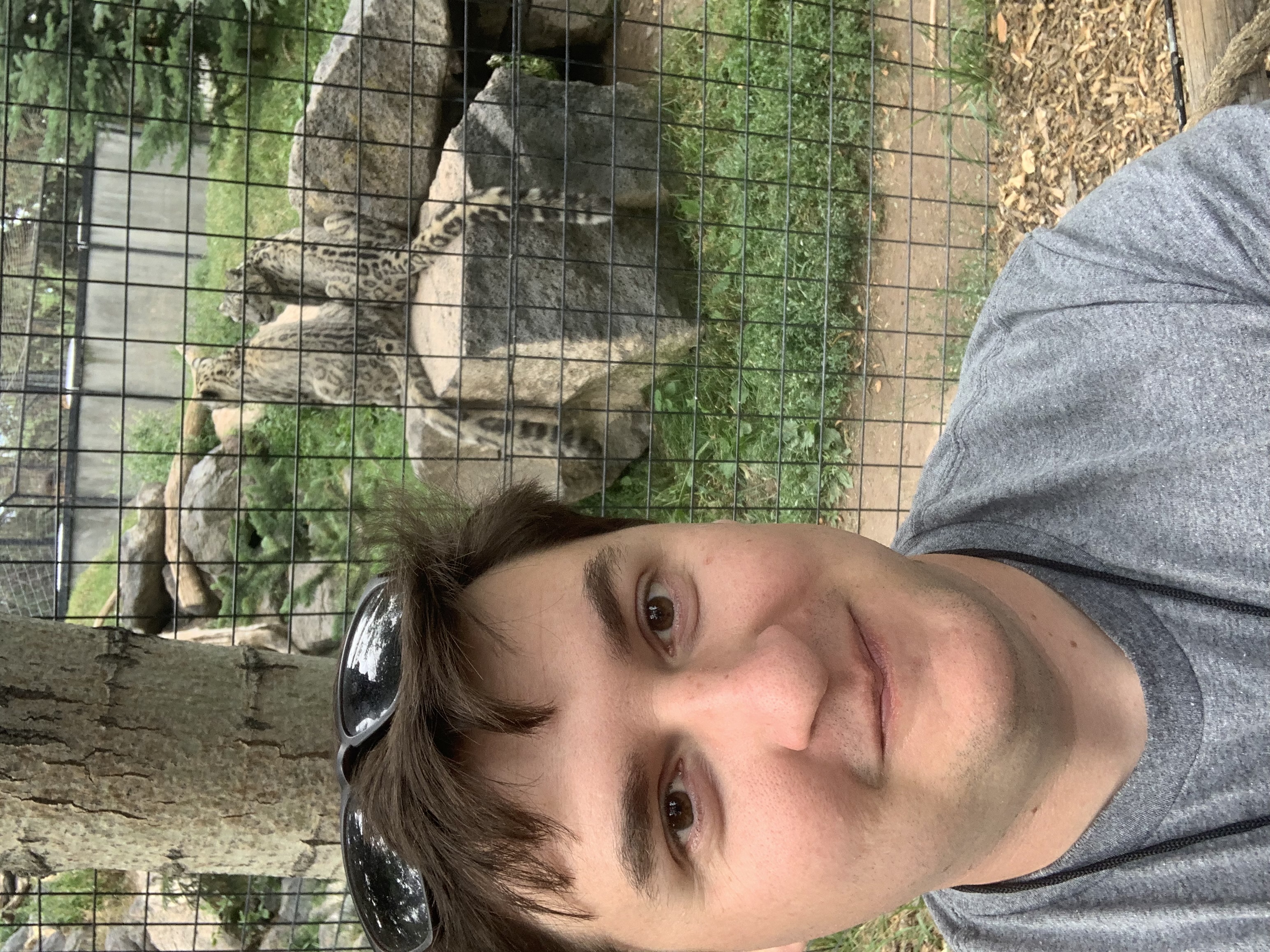 Our mission this year was to help the zoo education program create more expedition carts, which is an educational opportunity using specific animals in the zoo for a conservation message. We discussed messages involving animals such as the Snow Leopard and the Fenic Fox, which we used to build connections with guests to provide messages to protect these animals. We also took surveys for the zoo to build a better understanding of what the guests expect from the zoo, and how we can better the zoo in the future. In order to engage guests, I had to be selective with my words and match a fun energy to talk to guests and ensure the conservative message was reached, which lead to wonderful results. If you spark a guest’s curiosity, they would retain that knowledge. For students in my school, I know that sometimes history can be a rough subject to follow, and I want to make sure that a student’s curiosity is always satisfied when they leave my classroom. This is experience has been great, and I do wish that teachers around Idaho have the opportunity to work with the STEM Action Center to develop better relationships with the community.
Our mission this year was to help the zoo education program create more expedition carts, which is an educational opportunity using specific animals in the zoo for a conservation message. We discussed messages involving animals such as the Snow Leopard and the Fenic Fox, which we used to build connections with guests to provide messages to protect these animals. We also took surveys for the zoo to build a better understanding of what the guests expect from the zoo, and how we can better the zoo in the future. In order to engage guests, I had to be selective with my words and match a fun energy to talk to guests and ensure the conservative message was reached, which lead to wonderful results. If you spark a guest’s curiosity, they would retain that knowledge. For students in my school, I know that sometimes history can be a rough subject to follow, and I want to make sure that a student’s curiosity is always satisfied when they leave my classroom. This is experience has been great, and I do wish that teachers around Idaho have the opportunity to work with the STEM Action Center to develop better relationships with the community.
Grade Level and Subject Taught: High School History teacher
Brianna Stahly-Hale at Foothills Learning Center
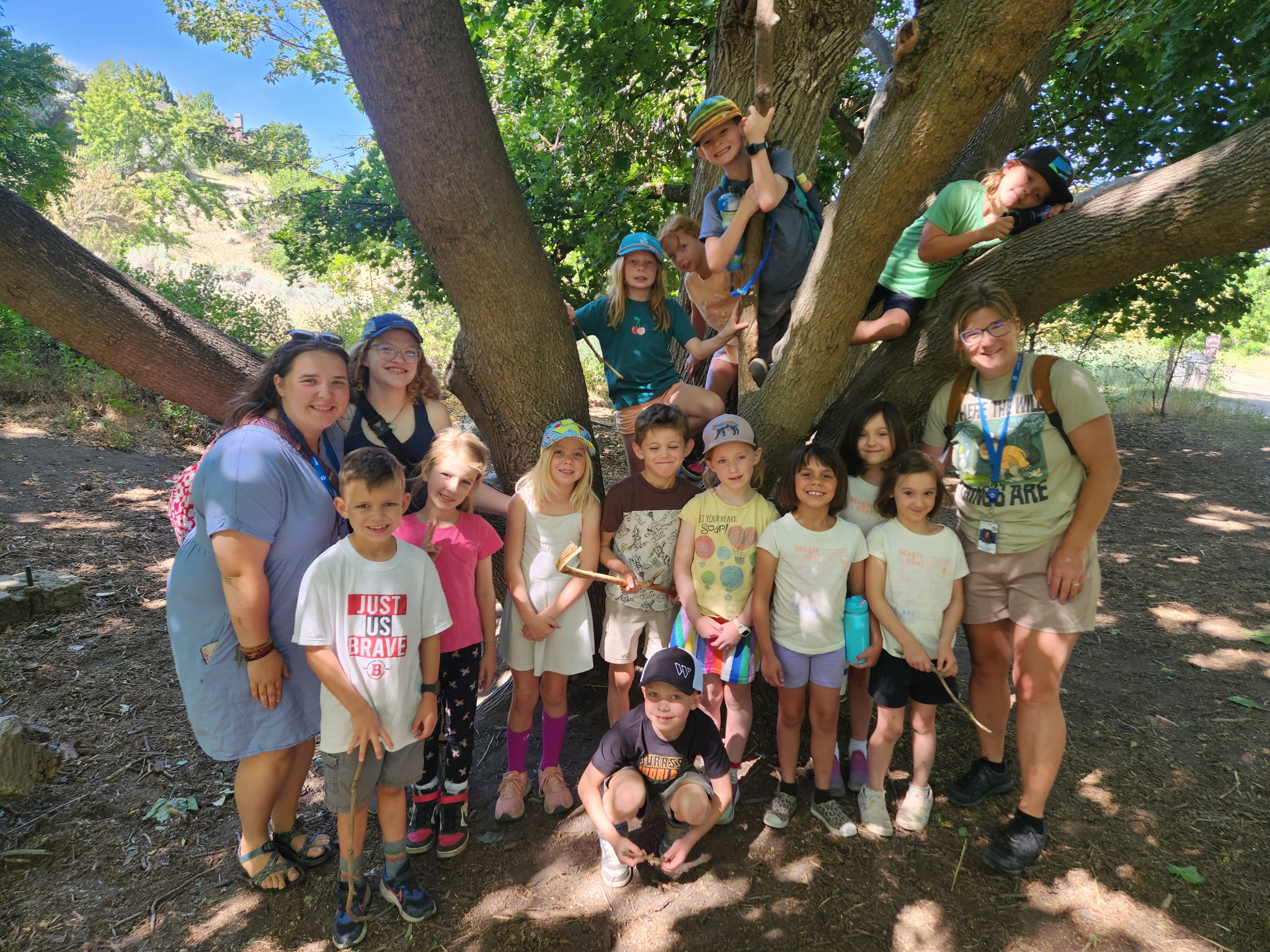 During my externship, the project focused on exposing kids to nature and helping them build a meaningful connection to the environment. The goal was to create engaging, outdoor learning experiences that encouraged curiosity, exploration, and environmental awareness, while also equipping educators with skills to bring this kind of hands-on science learning into the classroom. We spent much of our time in the Boise foothills, where students explored through hikes, free play, and guided science lessons that tied directly into natural phenomena.
During my externship, the project focused on exposing kids to nature and helping them build a meaningful connection to the environment. The goal was to create engaging, outdoor learning experiences that encouraged curiosity, exploration, and environmental awareness, while also equipping educators with skills to bring this kind of hands-on science learning into the classroom. We spent much of our time in the Boise foothills, where students explored through hikes, free play, and guided science lessons that tied directly into natural phenomena.
In addition to supporting student learning, I also had the opportunity to assist the facilities instructors in developing their skills around student management and conflict resolution. I was able to share strategies I use in my own classroom to help build relationships, create smooth routines, and handle challenging moments in positive, restorative ways. It was a great exchange of ideas and a valuable part of the experience.
This externship has made a strong impact on both my career knowledge and teaching style. I’ve come away with new tools, inspiration, and a deeper appreciation for the power of place-based learning. I’m excited to bring more outdoor, hands-on science opportunities to my classroom and to help my students connect more deeply with the environment around them.
Grade Level and Subject Taught: Kindergarten
Esther Emery at Foothills Learning Center
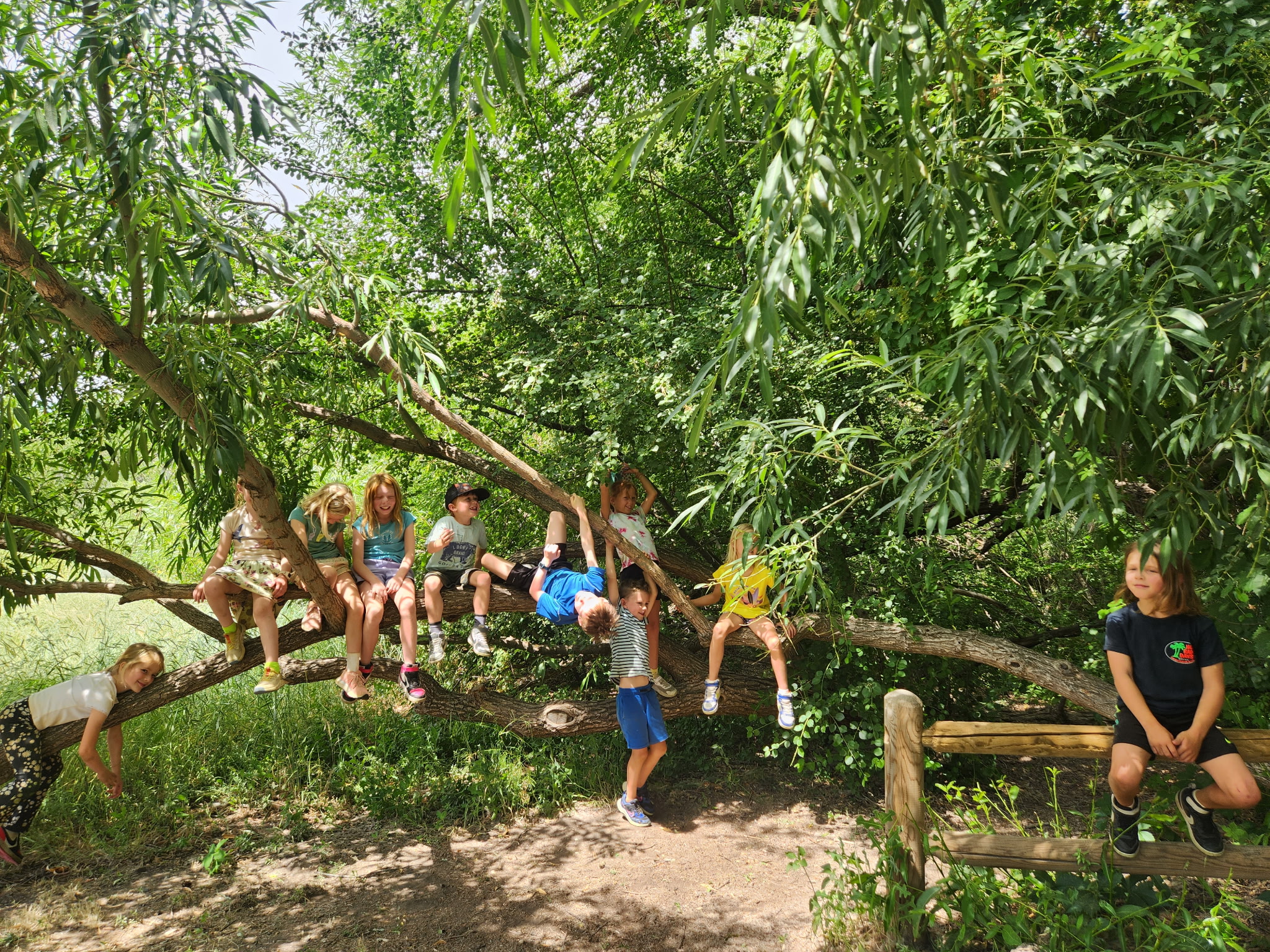 At the Foothills Learning Center, I collaborated with environmental educators to provide educational outdoor experiences in a summer camp format. I personally believe deeply in this work. Elementary school teachers are widely reporting that our students need skill development in self-regulation, resiliency, and collaboration. This summer I participated in helping young children to develop exactly those essential skills through unstructured outdoor play.
At the Foothills Learning Center, I collaborated with environmental educators to provide educational outdoor experiences in a summer camp format. I personally believe deeply in this work. Elementary school teachers are widely reporting that our students need skill development in self-regulation, resiliency, and collaboration. This summer I participated in helping young children to develop exactly those essential skills through unstructured outdoor play.
- Hiking in the foothills, children learn their own strength. They learn to manage their own discomfort by taking care of their bodies: drinking water, eating snacks, and taking appropriate rest breaks.
- Playing at the creek, children learn collaboration and spatial awareness. They work together to move sticks and rocks, learning to watch for the other end of someone else’s stick. They design and test their creations and redesign them when they fail.
- Visiting the enclosure of a pet Russian tortoise, young children practice making their bodies still and quiet. They do so not to please a teacher, but because they want to be able to touch the tortoise.
- Playing yard games, children learn to win and lose with grace. They learn to say yes to someone else’s idea and also courageously share their own. They learn to negotiate rules that feel fair and accept the consequences.
Many adults today have fond memories of unstructured outdoor play. Beyond the details of when and where, we may have intangible memories of light and sound: the texture of the grass, the sound of water falling over rocks, the dizzy feeling from dozens of cartwheels, the sheer pleasure of running with a friend. For better or for worse, today’s children have fewer of these experiences. Although a classroom environment does provide important opportunities to develop social-emotional learning, teachers must prioritize curriculum and classroom management. We have little time to devote to unstructured play, and it can be difficult or impossible to work outside.
As an extern with the Idaho STEM Action Center, I am an advocate for learning experiences that prepare our students to thrive in the 21st century. I believe that having elementary teachers incorporate experiences of outdoor play into our school year will do exactly that. We can model scientific concepts outdoors. We can celebrate successes and take mental breaks with games that develop collaboration and self-awareness. We can at least occasionally take trips that give our students a chance to learn through play.
My summer at Foothills has given me inspiration and resources with which to continue this work.
Grade Level and Subject Taught: 2nd Grade Teacher
Matthew Dyorich at IHCA
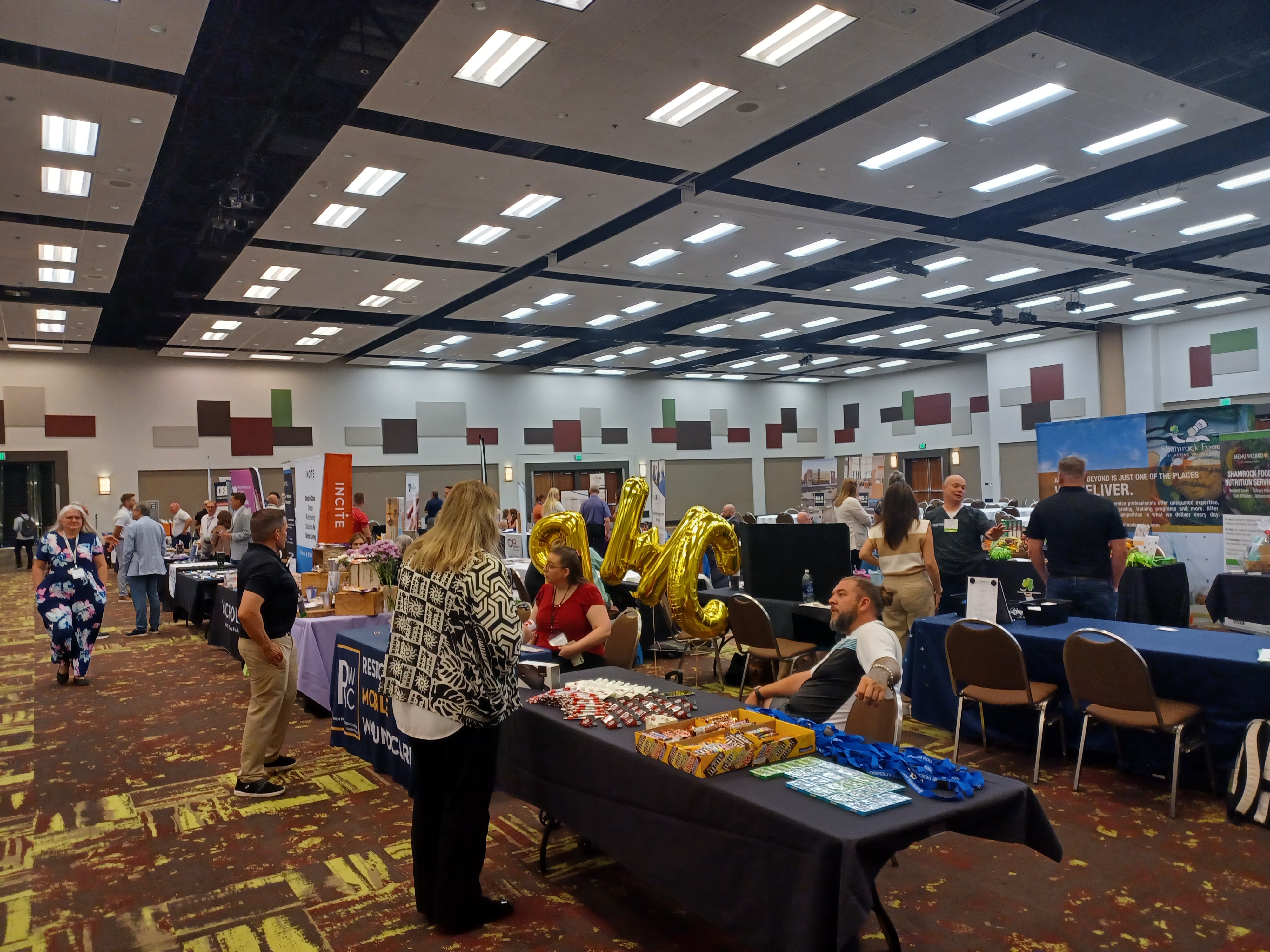 STEM Externship Experience: Exploring Healthcare Education with IHCA
STEM Externship Experience: Exploring Healthcare Education with IHCA
This summer, I had the unique opportunity to participate in an ISTEM externship with the Idaho Health Care Association (IHCA), an experience that broadened my understanding of healthcare careers and reshaped my perspective on curriculum development.
Project Overview
My primary task during the externship was to assist with the review and development of two key training programs: the Activity Director curriculum and the Assisted Living Administrator course and certification exam. These programs are essential for preparing professionals to support and lead in Idaho’s long-term care facilities.
Goals and Intended Outcomes
The goals of the project were multifaceted:
- Ensure alignment between curriculum content and current state regulations and industry standards.
- Improve clarity, accuracy, and accessibility of training materials.
- Explore effective ways to deliver curriculum in online formats.
- Gain insight into the healthcare career pipeline to better inform my teaching practice.
What I Accomplished
Over the course of the externship, I:
- Reviewed and provided feedback on curriculum content, quizzes, and the final certification exam.
- Suggested online learning activities and interactive options to enhance digital delivery.
- Assisted IHCA staff in preparing for their annual summer convention, where I was able to observe professional development sessions for healthcare workers.
- Collaborated with professionals across a range of fields, gaining firsthand insight into the soft skills and technical knowledge needed in healthcare environments.
Impact on My Career and Teaching Style
This externship deeply influenced both my understanding of the healthcare industry and how I approach teaching in the classroom. I now have a clearer vision of the skills students need if they pursue a healthcare path—whether in patient care, administration, or support services. It also reminded me of the importance of looking beyond my usual subject areas and seeking cross-curricular opportunities that reflect real-world applications.
Moreover, this experience inspired me to bring more online and hybrid elements into my classroom instruction, and to help students see how classroom content connects to authentic careers and community needs. I plan to integrate project-based learning tied to health science standards and expose students to tools used in healthcare education.
Grade Level and Subject Taught: High School History 9-12
Stephanie Aguilera at Wilder Academy of Virtual Education
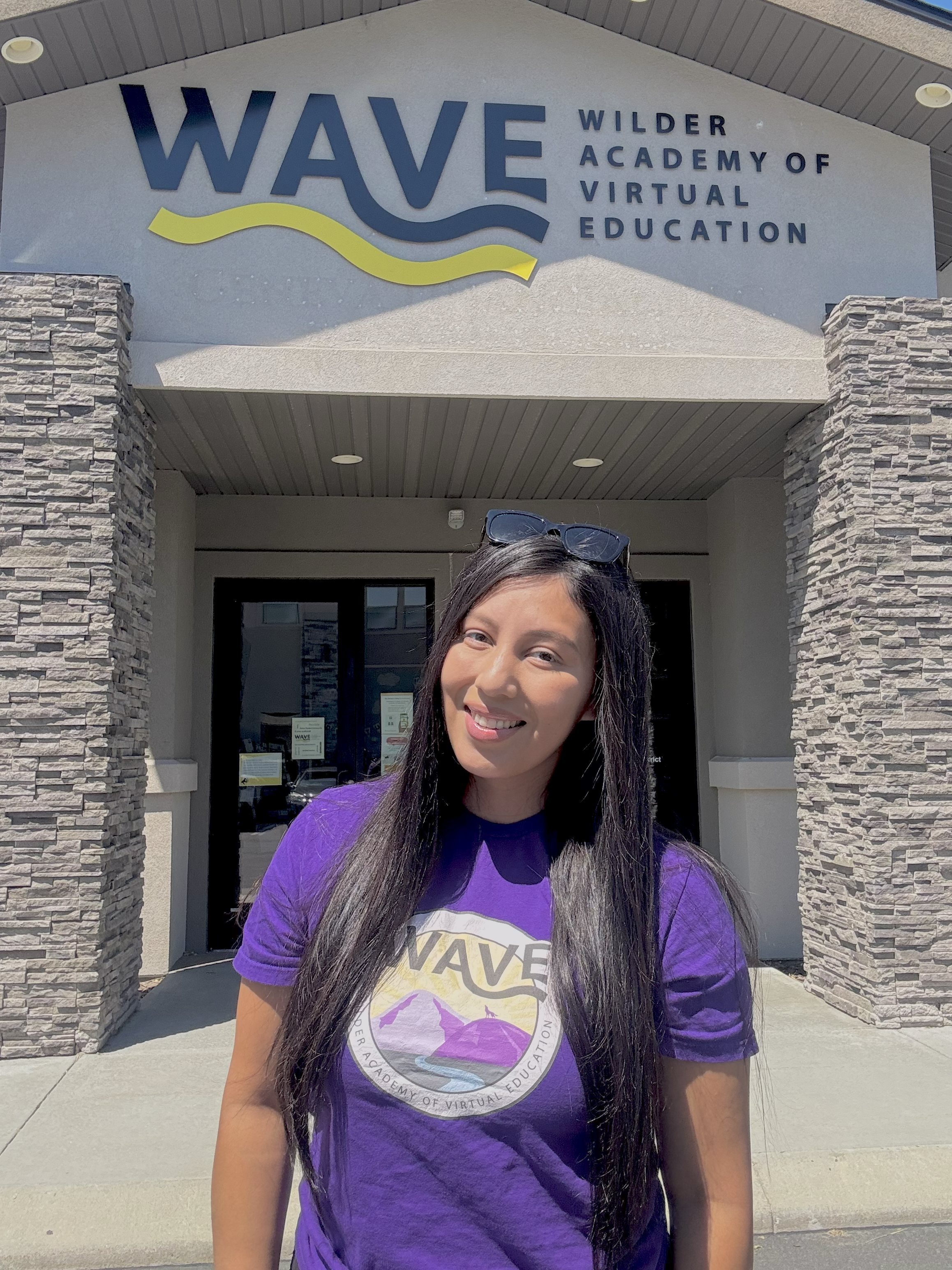 This summer, I had the wonderful opportunity to extern with Wilder Academy of Virtual Education (WAVE), where I created a digital bootcamp to help students build the skills they need to succeed as online learners. The course covers important topics like Google Suite apps, responsible use of AI, and other essential tools students need to feel confident navigating the digital world.
This summer, I had the wonderful opportunity to extern with Wilder Academy of Virtual Education (WAVE), where I created a digital bootcamp to help students build the skills they need to succeed as online learners. The course covers important topics like Google Suite apps, responsible use of AI, and other essential tools students need to feel confident navigating the digital world.
Working on this course gave me a deeper appreciation for how WAVE truly cares about preparing students not just academically, but for life beyond school.
This experience also helped me grow professionally—I became more comfortable using tools like Canva to create engaging and interactive content, and I learned to think more carefully about how to support students in using technology responsibly, especially as AI becomes a bigger part of learning.
WAVE is a standout example of what supportive and forward-thinking virtual education can be. Their focus on empowering students and developing real-world digital skills makes it a great place for learners who want to thrive online. I’m grateful for the chance to be part of such a caring community.
Thank you also to the Idaho STEM Action Center for making this experience possible.
Grade Level and Subject Taught: 8th and 9th
Molly Thornton at Lee Pesky Learning Center
 During my externship with Lee Pesky Learning Center, I was given the opportunity to help modernize their systems and procedures by building a SharePoint site designed to make file management more streamlined and collaboration across staff more efficient. The big goal was to create a hub where everything was easier to access, organize, and share—freeing up more time for staff to focus on their students and the community.
During my externship with Lee Pesky Learning Center, I was given the opportunity to help modernize their systems and procedures by building a SharePoint site designed to make file management more streamlined and collaboration across staff more efficient. The big goal was to create a hub where everything was easier to access, organize, and share—freeing up more time for staff to focus on their students and the community.
While working on the project, I had the chance to learn about the incredible work the Learning Center does for students and families. I collaborated with directors to understand their daily needs and worked to design a system that truly supported their workflow.
This experience gave me a whole new appreciation for what it means to support the whole child. It reminded me how important it is to know the resources available to students beyond the classroom. It also pushed me to think more critically about how strong systems and collaborative teamwork can help modernize day-to-day operations, ultimately giving educators and specialists more time to do what really matters—serve their students.
Grade Level and Subject Taught: NA – Technology Support
Andrew Hutchings at Micron
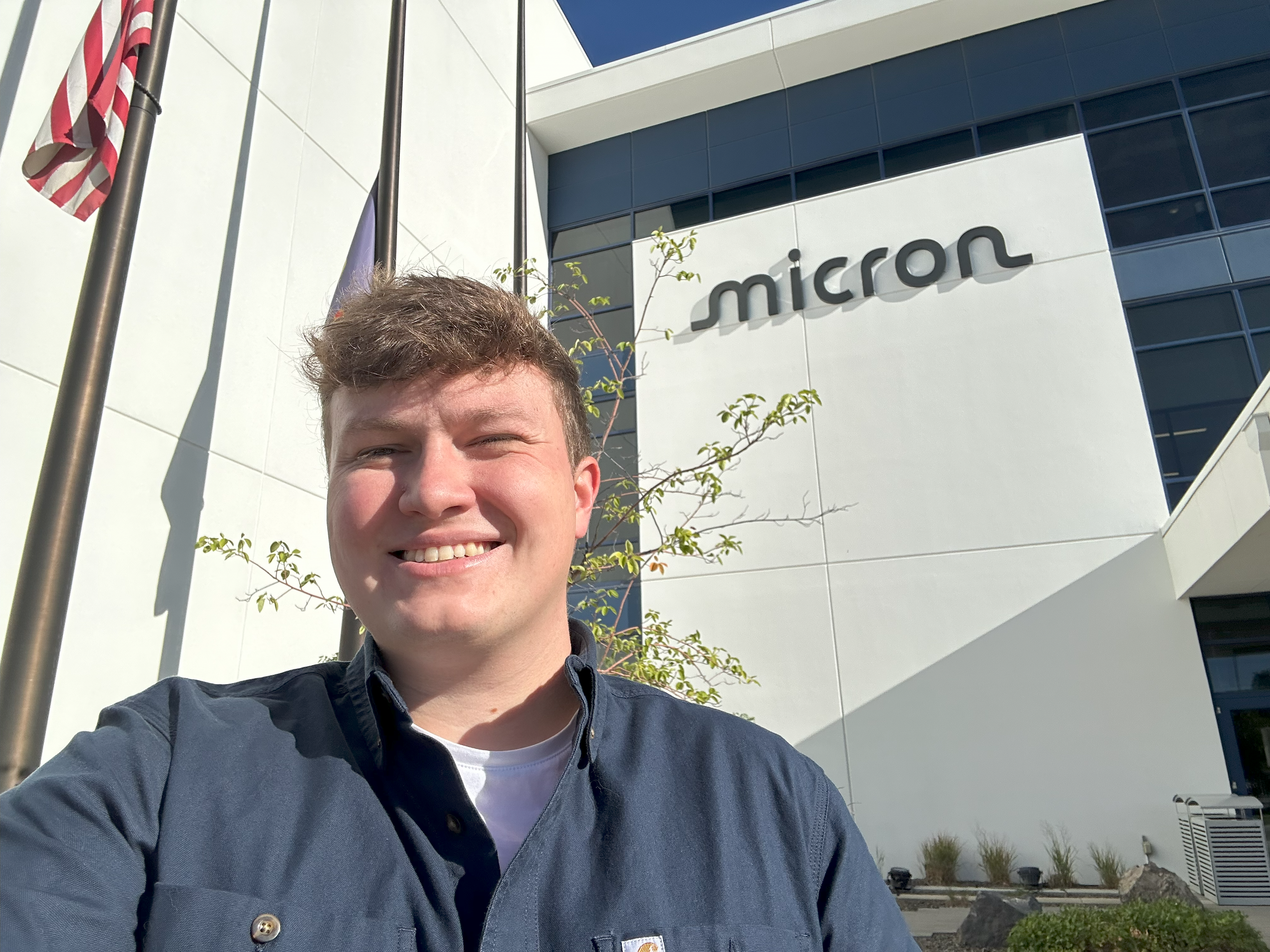 During my time working for Micron, I helped develop educational modules for their Educator Hub webpage. My main goal was to create 3–4 publishable modules that met updated company standards. Early on, my supervisor and I also agreed it would be valuable for me to deepen my understanding of semiconductor production and gain in-depth knowledge of Micron’s apprenticeship program so that I could eventually relay this information to students. During my externship, I successfully completed 4 modules that will eventually be published to the educator hub, gained far more knowledge about semiconductors than I ever thought I would, and became fairly well-versed in the apprenticeship program (one of the services I am most excited about). This experience not only strengthened my ability to plan lessons and create educational materials but also connected me with lasting friends/resources I can use to help students access life-changing career opportunities with one of the Treasure Valley’s largest employers. Ultimately, this externship was a huge success, and I hope to be accepted back in the future!
During my time working for Micron, I helped develop educational modules for their Educator Hub webpage. My main goal was to create 3–4 publishable modules that met updated company standards. Early on, my supervisor and I also agreed it would be valuable for me to deepen my understanding of semiconductor production and gain in-depth knowledge of Micron’s apprenticeship program so that I could eventually relay this information to students. During my externship, I successfully completed 4 modules that will eventually be published to the educator hub, gained far more knowledge about semiconductors than I ever thought I would, and became fairly well-versed in the apprenticeship program (one of the services I am most excited about). This experience not only strengthened my ability to plan lessons and create educational materials but also connected me with lasting friends/resources I can use to help students access life-changing career opportunities with one of the Treasure Valley’s largest employers. Ultimately, this externship was a huge success, and I hope to be accepted back in the future!
Grade Level and Subject Taught: 9-12 ELA
Josephine Fisher at Exyte
 The goal for the project was to learn more about the VDC process. I learned more about Building Information Modeling (BIM), including 3D models and their role in fabrication and the construction process. I had the opportunity to review, discuss and problem solve issues and concerns with the project Exyte is working on locally. It really gave me the opportunity to see the depth of the project. Without this opportunity I would not have seen firsthand the technology and software and work that goes into completing a large scale construction project.
The goal for the project was to learn more about the VDC process. I learned more about Building Information Modeling (BIM), including 3D models and their role in fabrication and the construction process. I had the opportunity to review, discuss and problem solve issues and concerns with the project Exyte is working on locally. It really gave me the opportunity to see the depth of the project. Without this opportunity I would not have seen firsthand the technology and software and work that goes into completing a large scale construction project.
While I was on the host site I was able to walk the site to see the construction progress. Gather 360 pictures of the progress weekly. I sat in for multiple group meetings, for many different topics surrounding the construction process. Learned about the design process and looked through examples of different design layouts. Also played around with an example model of the project and looked for areas where the different 3d models clashed. Found out how to determine where the clashes are, and what to do when a clash occurs.
Teaching Preschool and learning about construction and virtual design would probably seem a far fetch. However, it really solidified that we need to have these kids learning technology and being able to handle the ever growing and developing land of learning technology. At Exyte they talked a lot about the change of technology within the project and how you constantly have to adapt and go back to adjust to the new technology. This is certainly something that as a preschool teacher this foundational work such as being flexible can impact students’ growth and overall success. It also solidified my understanding that technology is really at the core of so many different careers. It is good to see that the technology we are spending time teaching students, will indeed impact them and give them opportunity for so many different jobs in the future.
Grade Level and Subject Taught: Developmental Preschool
Josh Duersch at Idaho National Lab
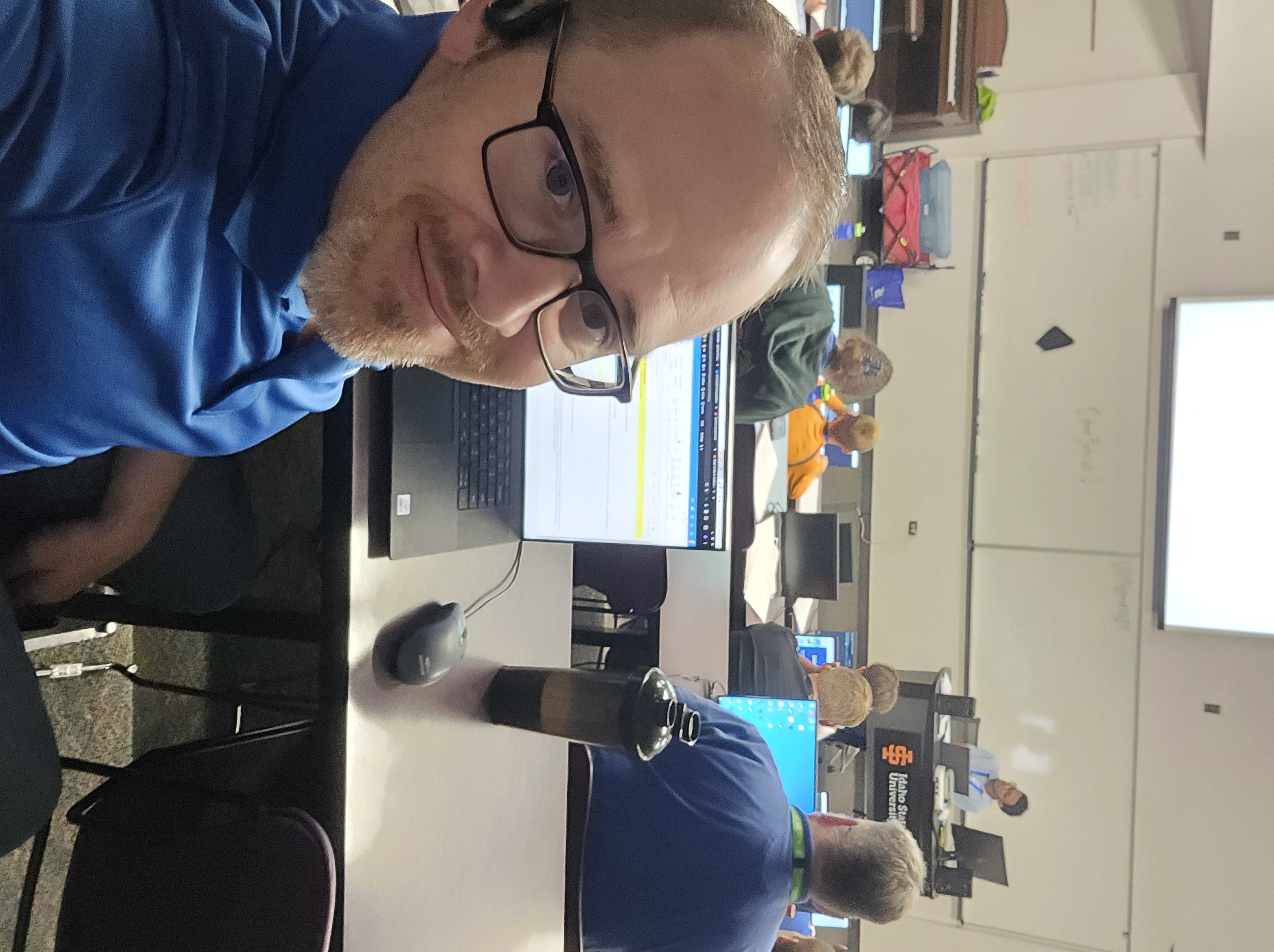 This summer, I had the incredible opportunity to participate in an externship with the STEM Action Center. As a post-secondary educator with nearly two decades of experience, this experience offered a unique and refreshing perspective, allowing me to engage with a younger audience and help ignite their passion for science, technology, engineering, and mathematics. It was a chance to step outside my usual teaching environment and contribute to shaping the future of STEM.
This summer, I had the incredible opportunity to participate in an externship with the STEM Action Center. As a post-secondary educator with nearly two decades of experience, this experience offered a unique and refreshing perspective, allowing me to engage with a younger audience and help ignite their passion for science, technology, engineering, and mathematics. It was a chance to step outside my usual teaching environment and contribute to shaping the future of STEM.
One of my primary responsibilities was contributing to the Cybercore Camp, where I had the privilege of lecturing and assisting secondary students with the intricate technical details of cybersecurity, Windows, and Linux. It was particularly rewarding to witness their interest pique as we delved into the fundamentals of computing, networking, and cybersecurity. A significant part of this camp involved preparing students for two weekly competitions that rigorously tested their newly acquired knowledge and skills, pushing them to apply what they learned in practical scenarios.
My externship also included the STEM Scholars Camp, where we guided students through basic engineering principles. Their main task was to design and construct model parks, incorporating various basic machines like levers, pulleys, and inclined planes. I was especially impressed by their creativity, with one team innovatively building a cardboard robot with LED eyes to represent their electric machine! In the Arduino Camp, high school students tackle programming challenges, using a clever setup involving a metallic sensor, a wet/dry sensor, and a stepping motor to program Arduinos to differentiate and sort various waste materials effectively.
While I’ve spent nearly twenty years teaching at the postsecondary level, this externship provided an invaluable opportunity to work with younger students and tailor my approach to their learning styles. Observing and collaborating with other educators with the STEM Action Center exposed me to different teaching styles and methods that I am excited to incorporate into my own classes. This experience has broadened my pedagogical toolkit, offering fresh ways to explain complex topics and foster engagement.
My externship with the STEM Action Center was not just an enriching personal and professional experience; it is a powerful reminder of the importance of early STEM exposure. Across all the camps, a primary accomplishment was seeing the significant growth in the students’ understanding and, more importantly, encouraging many of them to consider pursuing STEM careers. I wholeheartedly encourage my fellow educators to explore similar externship opportunities. It’s an incredible way to reach a broader audience and build crucial interest in STEM fields, making a tangible impact on the next generation of innovators and problem-solvers.
Grade Level and Subject Taught: 1st – 12th, STEM Scholars and Cyber Camps
Arielle Jensen at BSU Micron School for Materials Science & College of Engineering
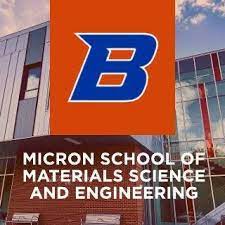 In this externship, I worked at the Micron School for Materials Science and College of Engineering, in the research labs and in the office. My goal- to learn what graduate students are working on in the research labs, and explain what they tell me through video content in a much more basic way (for an audience with limited knowledge of Material Science). The informational videos will be used for multiple purposes, including marketing on Youtube, for teachers to show their students across Idaho (college & career readiness), for the legislature and funding, before any lab tours, etc.
In this externship, I worked at the Micron School for Materials Science and College of Engineering, in the research labs and in the office. My goal- to learn what graduate students are working on in the research labs, and explain what they tell me through video content in a much more basic way (for an audience with limited knowledge of Material Science). The informational videos will be used for multiple purposes, including marketing on Youtube, for teachers to show their students across Idaho (college & career readiness), for the legislature and funding, before any lab tours, etc.
According to my host site mentor, they figured a teacher could take complex content and make it more understandable to a general audience, which is why they chose to apply for an extern.
During my 10 weeks, I was able to create a total of 4 different lab videos, about 7-10 minutes each. I also wrote biographies for many of the students and faculty that I talked to, and I saved all of my notes, video scripts, video footage, pictures, etc. for the department to use for any marketing purposes.
I feel very fortunate to have been given this opportunity to work in a college science department for the summer! Science is the area I feel least trained in as an elementary teacher, and the units we teach lack rigor; they are too simple, especially for students who are at an advanced level in their science understanding.
Starting from day 1 observing in the labs, I already was thinking of ways that I could enhance my chemistry unit. I noticed that the experiments graduate students were doing in the labs- materials characterization (observing properties of different materials)- was similar to what I teach in 5th grade; discussing things like what happens to a material if it corrodes, gets shocked, dissolves, etc., just at a more complex level. Seeing the “end result” of what is needed at the college level helps me as a teacher see how important those science units are, and that I do need to put in more effort to make those units more rigorous.
I also learned that there are many career opportunities in Materials Science, however they all require the same soft skills such as the ability to collaborate and communicate. I try to focus on college and career readiness in my 5th grade classroom, which is one reason why I wanted to participate in this externship. Seeing the different career opportunities, from research student to academic advisor, to grant writer, this will help me teach my students more about science fields when we talk about college and career opportunities. I also have the connection now that many of the research students said they would come and do outreach lessons in my classroom.
My mentors at the host site also connected me with a week-long workshop for educators to get hands-on ideas to teach materials science in the classroom. They created a spot for me, even though it was past the sign-up deadline and all spots had already been filled. The workshop is next week, Monday-Friday from 8:00-5:00, and will be led by master professors that have been flown in from universities across the country.
Grade Level and Subject Taught: College level chemistry, biology and engineering
Madisson Prater at Children’s Museum of Idaho
As program staff, my projects included prepping and facilitating STEM related planetarium showings, story time and project, daily stem classes, and multi-day STEM camps focused on both dinosaurs and ocean life. My intended goals and outcomes were to learn a little bit more about science and also get some ideas on how to incorporate science through a variety of art projects. I will go back to my classroom and use some of the great (and cute!) ideas I learned such as salt painting animals, floating boats, and digging for dinosaurs. I teach fifth grade, and the museum is targeted more to ages 0-9, but I will definitely be passing on some of the info to my younger grade coworkers. I will also highly encourage that they book a fieldtrip here!
Grade Level and Subject Taught: ages 0-9 (science and art)
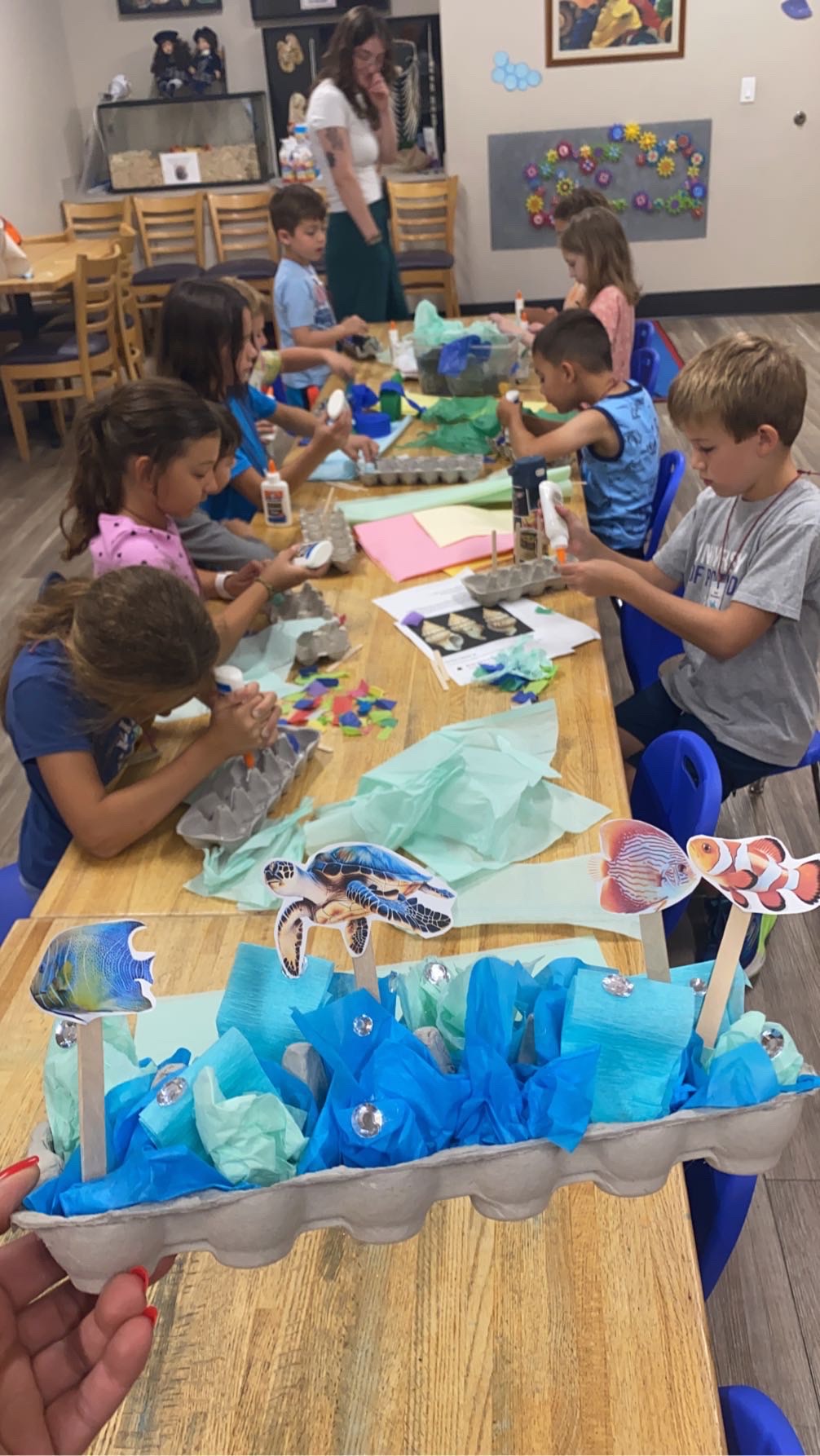
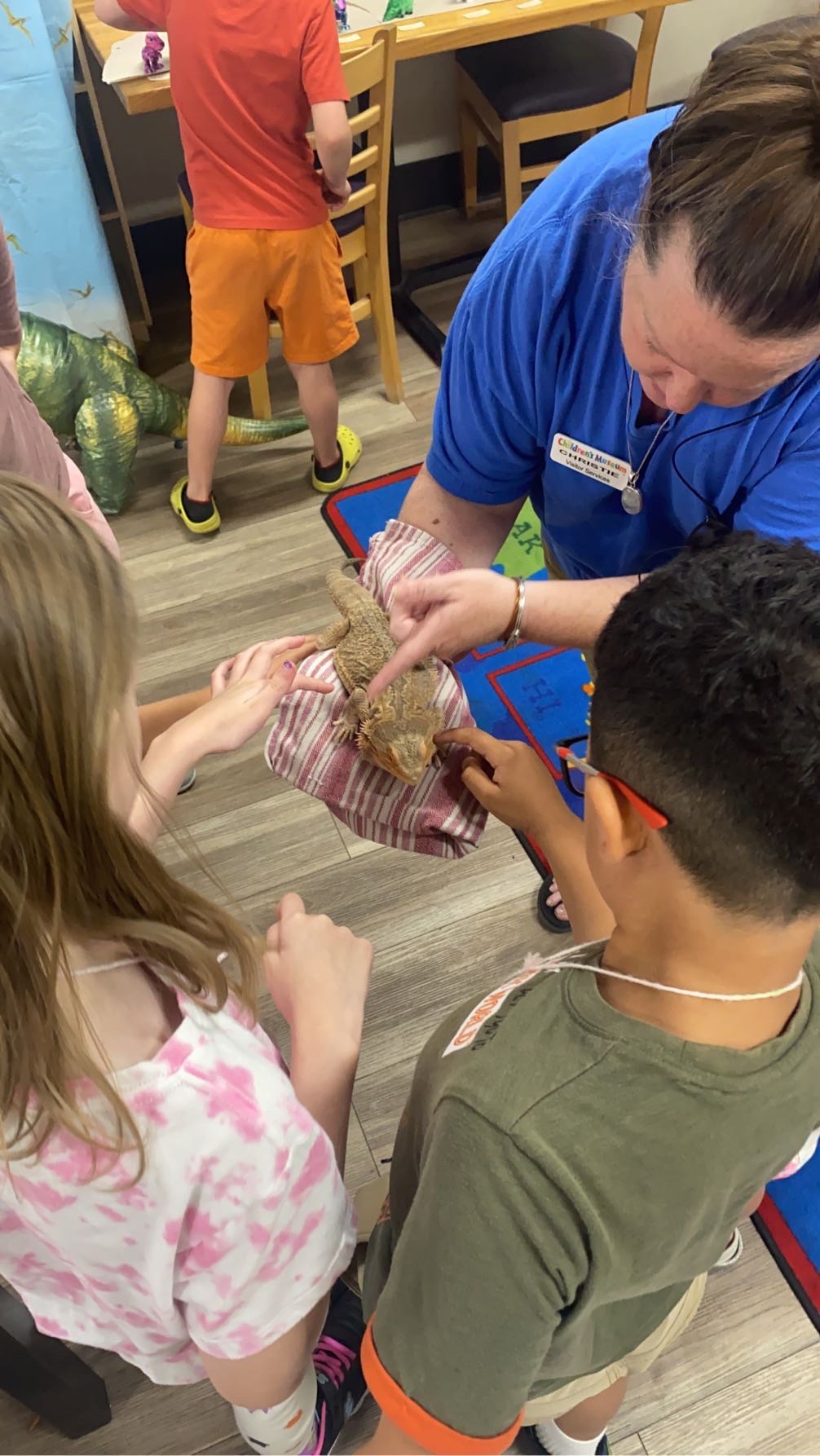
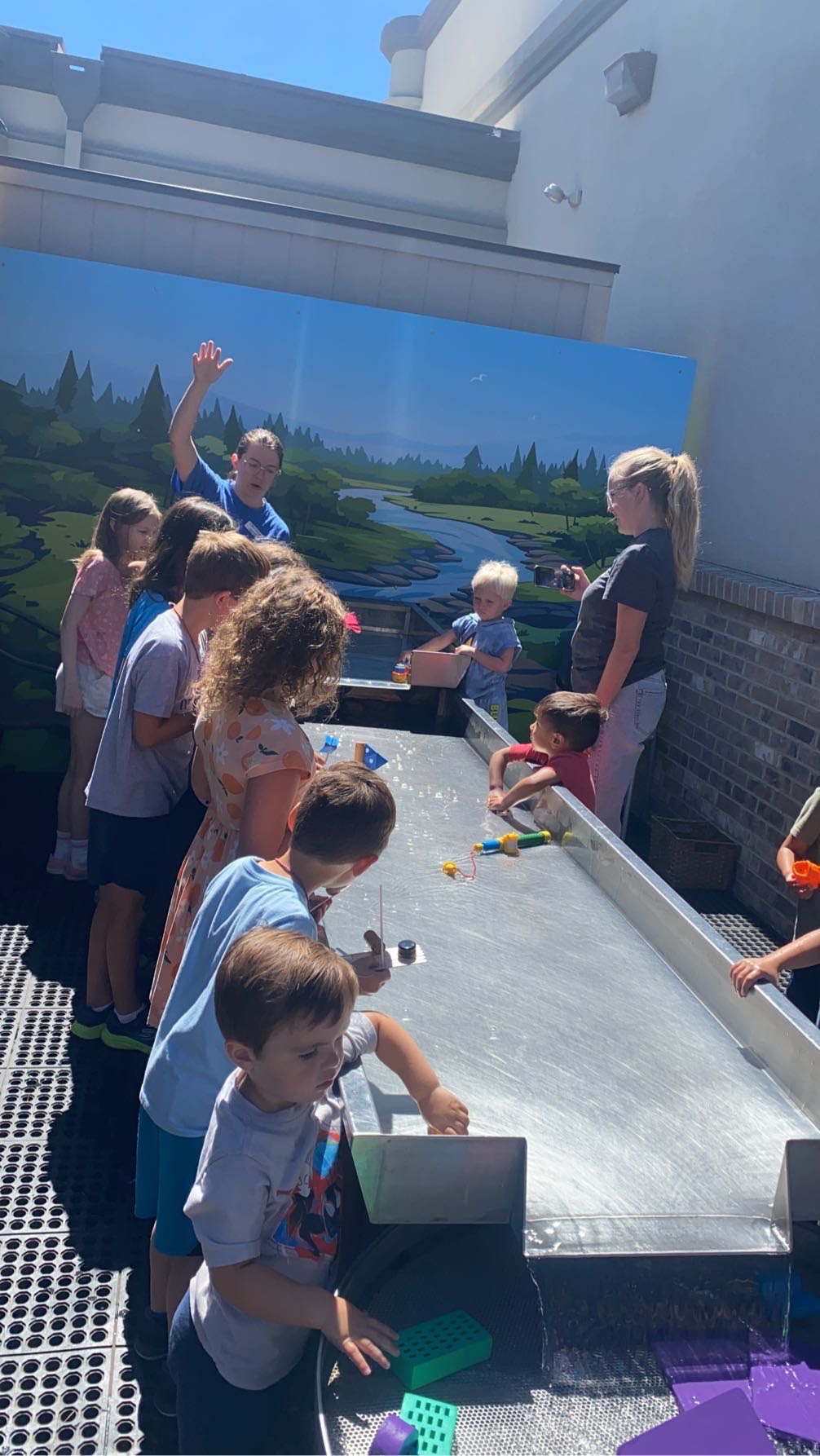
Marissa Honley at INL
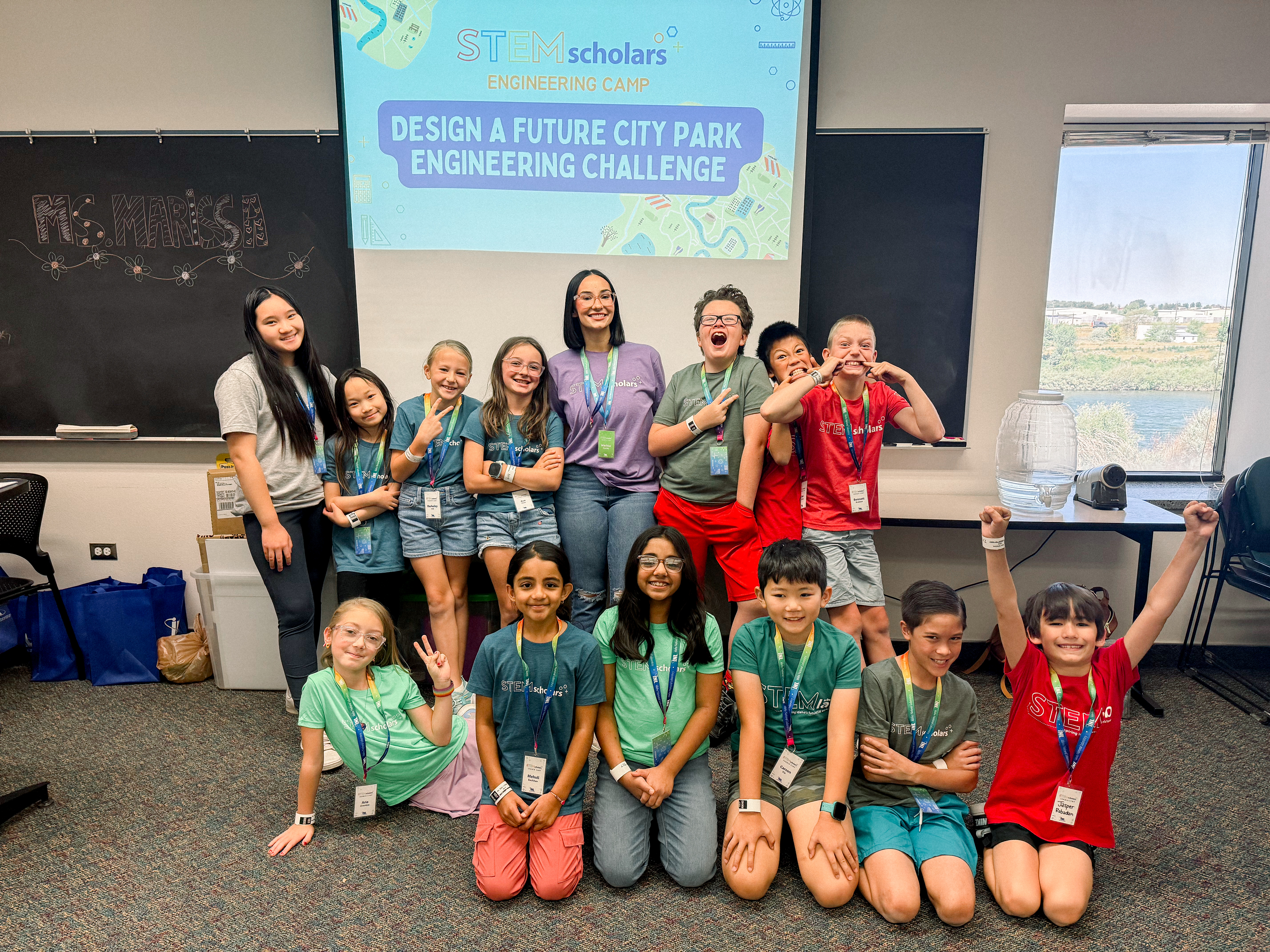 During my time at the Host Site, I was responsible for teaching first through eighth grade students how to engineer a park. The goal of the project was to help students understand the basics of engineering and design by guiding them through the process of creating a functional and creative park. We wanted students to learn how to solve problems, work as a team, and think critically, all while making learning fun and meaningful.
During my time at the Host Site, I was responsible for teaching first through eighth grade students how to engineer a park. The goal of the project was to help students understand the basics of engineering and design by guiding them through the process of creating a functional and creative park. We wanted students to learn how to solve problems, work as a team, and think critically, all while making learning fun and meaningful.
Throughout the project, I helped students brainstorm ideas, plan their layouts, think about the needs of a community, and build models of their park designs. We talked about things like safety, accessibility, and how to use space wisely. Students worked in groups, shared their ideas, and presented their final designs to others.
This experience had a big impact on how I teach. I learned how to make lessons hands-on and engaging for a wide range of ages. I also became better at connecting classroom learning to real-world situations. It showed me how powerful project-based learning can be, and it helped shape my teaching style to be more interactive and student-focused.
Grade Level and Subject Taught: 1st-8th
Daniel Babiracki at Western States Equipment Co. (Western CAT)

During my time at Western CAT, I had the opportunity to work with an amazing team in Business Intelligence. I was tasked with creating an application for internal use that would help keep track of the computer networking hardware at their various store locations. During the process I learned to work with SQL databases, Microsoft Power Apps, Copilot, APIs, project management methodologies, corporate structure, DevOps, and more. It felt great to make something that will actually be used within the company, and to have some great mentors to help along the way.
I’m excited to try some project management techniques in my pre-engineering classes so that students can know what to expect when they step into professional roles. I’m also happy to now have the skills to create applications to help automate classroom processes so I can focus more on my students.
Overall, this was an absolutely fantastic experience, with even more amazing people. I’m looking forward to participating in the CTE externship program again!
Grade Level and Subject Taught: High School Pre-Engineering
Rebecca Dyorich at IHCA – Idaho Health Care Association
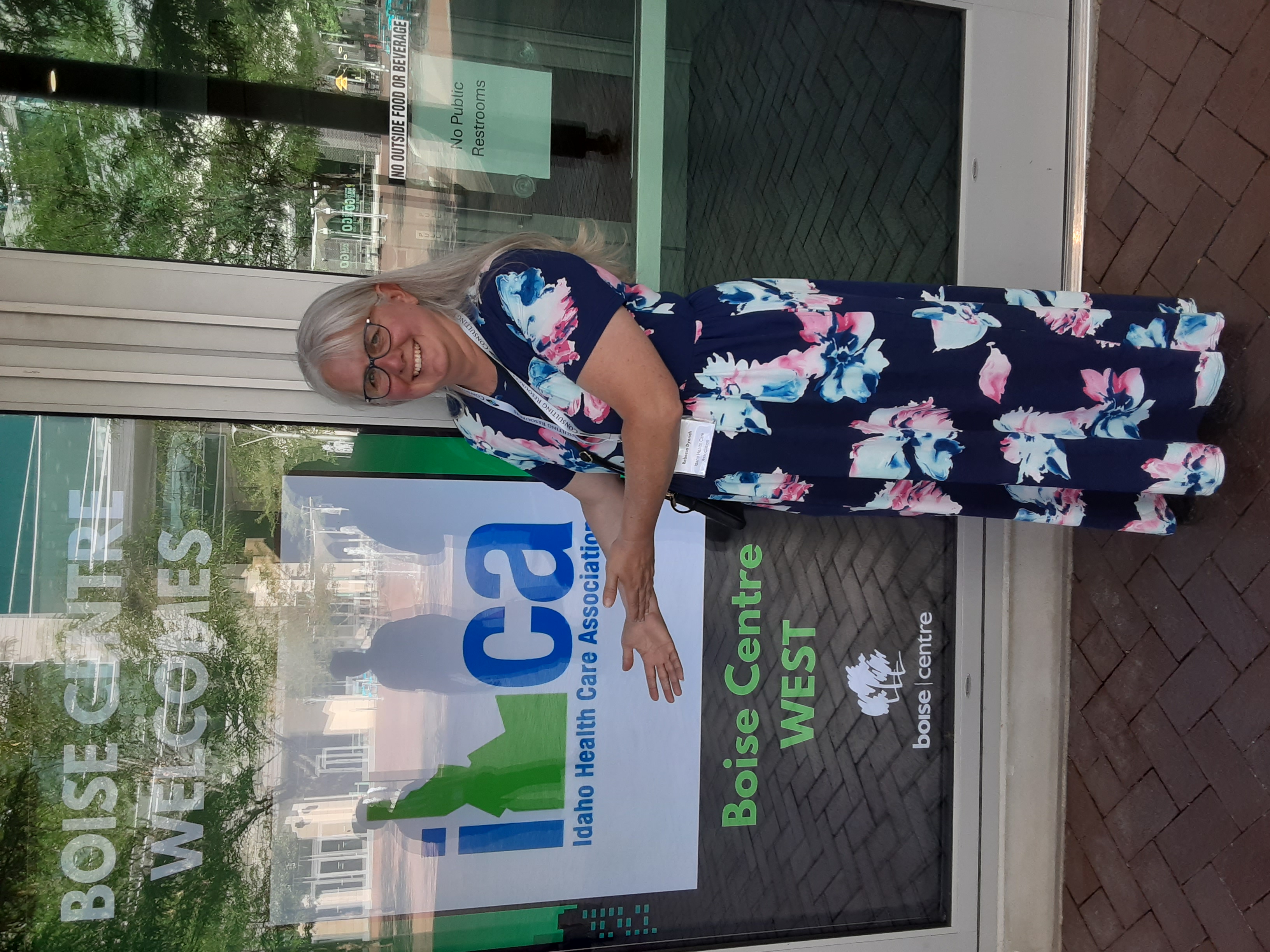 During my time with the Idaho Health Care Association (IHCA), I contributed to several projects aimed at improving educational resources and supporting professional development in the healthcare field. My responsibilities included helping to update the Assisted Living Administrator course, reviewing and proofreading test questions for the Headmaster certification exam, and assisting with the IHCA Summer Convention in Boise.
During my time with the Idaho Health Care Association (IHCA), I contributed to several projects aimed at improving educational resources and supporting professional development in the healthcare field. My responsibilities included helping to update the Assisted Living Administrator course, reviewing and proofreading test questions for the Headmaster certification exam, and assisting with the IHCA Summer Convention in Boise.
Goals & Intended Outcomes:
My primary goal was to gain a deeper understanding of the healthcare industry—its current needs, challenges, and workforce expectations—so I could better prepare my students for future careers in this field. I wanted to explore how healthcare-related content could be made more relevant and engaging in the classroom and learn what real-world opportunities exist for students interested in this pathway.
What I Accomplished:
- Collaborated on revising the Assisted Living Administrator course materials to ensure content accuracy and relevance
- Reviewed and edited test questions for clarity, fairness, and alignment with certification standards
- Supported the IHCA Summer Convention, gaining behind-the-scenes experience in professional event coordination
- Observed numerous presentations on current healthcare
- Observed and interacted with experts from multiple areas within the healthcare system
- Networked with healthcare practitioners spanning a wide array of disciplines
Grade Level and Subject Taught: 6th grade all subjects
Lisa Osler at Franz Witte
 Working in the garden center at Franz Witte was a valuable opportunity to connect real world industry practices with educational goals.
Working in the garden center at Franz Witte was a valuable opportunity to connect real world industry practices with educational goals.
In this role, I was able to learn the daily operational logistics and customer service aspects of the retail garden center including plant care, inventory, seasonal planting, and sales. The team lead and her crew were patient with my many questions as I learned to navigate helpful conversations with customers. The plant and hard good purchasing managers described their roles and thought processes as they made wholesale purchases yo keep inventory fresh, seasonally appropriate, and customer minded.
Upon completion of this externship, I have plans to find funding to bring the Franz Witte experts into the classroom to build terrariums with students as we navigate through our plant science standards giving them practical experience to connect their learning. In addition, I am connected with a partner of Franz Witte to explore having a classroom worm farm with education on decomposers and their benefit in an ecosystem.
I also will be planning a project based math lesson using the knowledge of our earth science standards which teach the rotation of the Earth and seasonal implications to landscape design.
The practical experience of hard work in the hot sun was worth it for me this summer. I gained new connections professionally and personally. In addition, I gained a sense of pride in helping customers design their spaces with beautiful flora.
Grade Level and Subject Taught: 5th grade all subjects
Nikki Bothman at Foothills Learning Center
 I had the privilege of working with the team and other externs at Foothills Learning Center. Throughout the summer campers came and participate in nature camp. The camps range from learning about pollinators, native and non-native plants in Idaho and how to be good stewards to the land around us.
I had the privilege of working with the team and other externs at Foothills Learning Center. Throughout the summer campers came and participate in nature camp. The camps range from learning about pollinators, native and non-native plants in Idaho and how to be good stewards to the land around us.
I was learning alongside the students. It was a time of learning and exploration of nature. My takeaway from this experience is that whether children are at camp or in school they need hands on experiences to fully immerse themselves in the learning process.
Grade Level and Subject Taught: K-3 science
Corey Friis at The Core Project
 Beyond the Classroom: My Summer Externship with The Core Project and the Power of SEL + STEM
Beyond the Classroom: My Summer Externship with The Core Project and the Power of SEL + STEM
This summer, I had the incredible opportunity to complete an externship with The Core Project, a company dedicated to developing high-quality social-emotional learning (SEL) curriculum for students and educators. What began as a short-term learning experience turned into a deep dive into the powerful intersection of emotional intelligence, education, and innovation.
My work during the externship centered around three main areas:
- Researching and writing white papers on SEL best practices and implementation strategies,
- Evaluating SEL assessment tools to better understand how progress in emotional and interpersonal growth can be measured, and
- Compiling a comprehensive list of funding opportunities for schools and organizations interested in expanding their SEL programs.
Through these projects, I quickly realized that SEL is far more than just a trendy buzzword in education—it’s a transformative framework that equips students with the tools they need not only to succeed academically, but also to thrive socially and emotionally.
Grade Level and Subject Taught: 7th-8th alternative middle school, all subjects
Linda Lopez at Boys and Girls Club of Magic Valley Rupert Facility
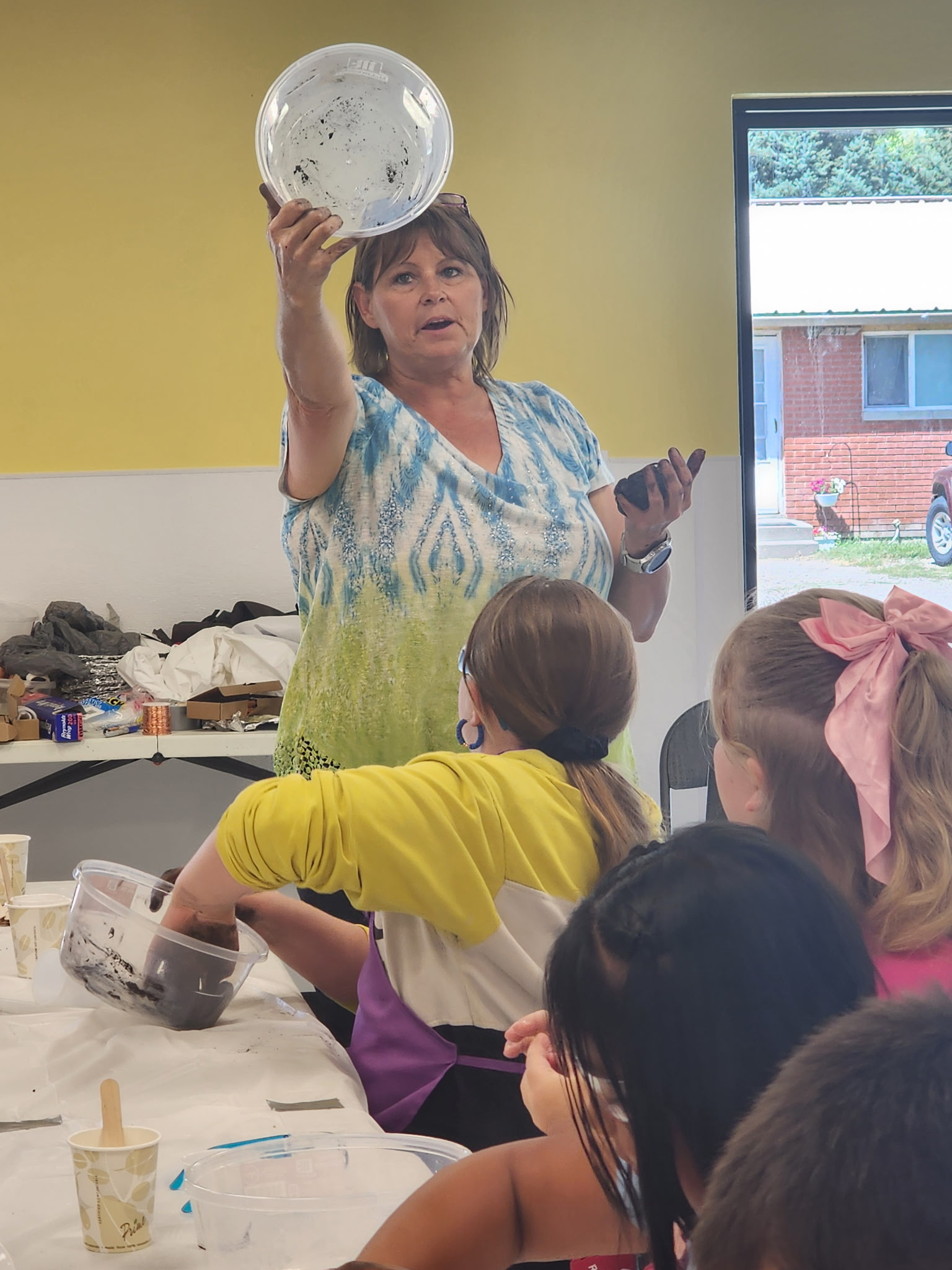 I was mainly working with 5th graders, and we did many different projects. We worked on building projects to see how they worked, what we could do to improve them, and stabilize them.
I was mainly working with 5th graders, and we did many different projects. We worked on building projects to see how they worked, what we could do to improve them, and stabilize them.
During the visit with Bryan, we learned about magnetism and its omnipresence. We discussed the Earth and its magnetic poles and how they affect the Earth. We discussed how magnets resist each other when they are like.
I hope that I taught kids that STEM, mainly science, isn’t boring, and when they dig down, there are very interesting things about it. It isn’t all just in a book; it is all around us. I hope that I sparked imagination and creativity.
This experience helped me to see a different side of STEM. I am used to teaching from a book, but students find it tedious. I need to help them get “their hands dirty” with it. Experimenting with hands-on experience will spark their curiosity of, “What if?”.
Grade Level and Subject Taught: 5th grade mainly, I did have other kids at various times. Science
Tober Dyorich at Idaho Health Care Association (IHCA)
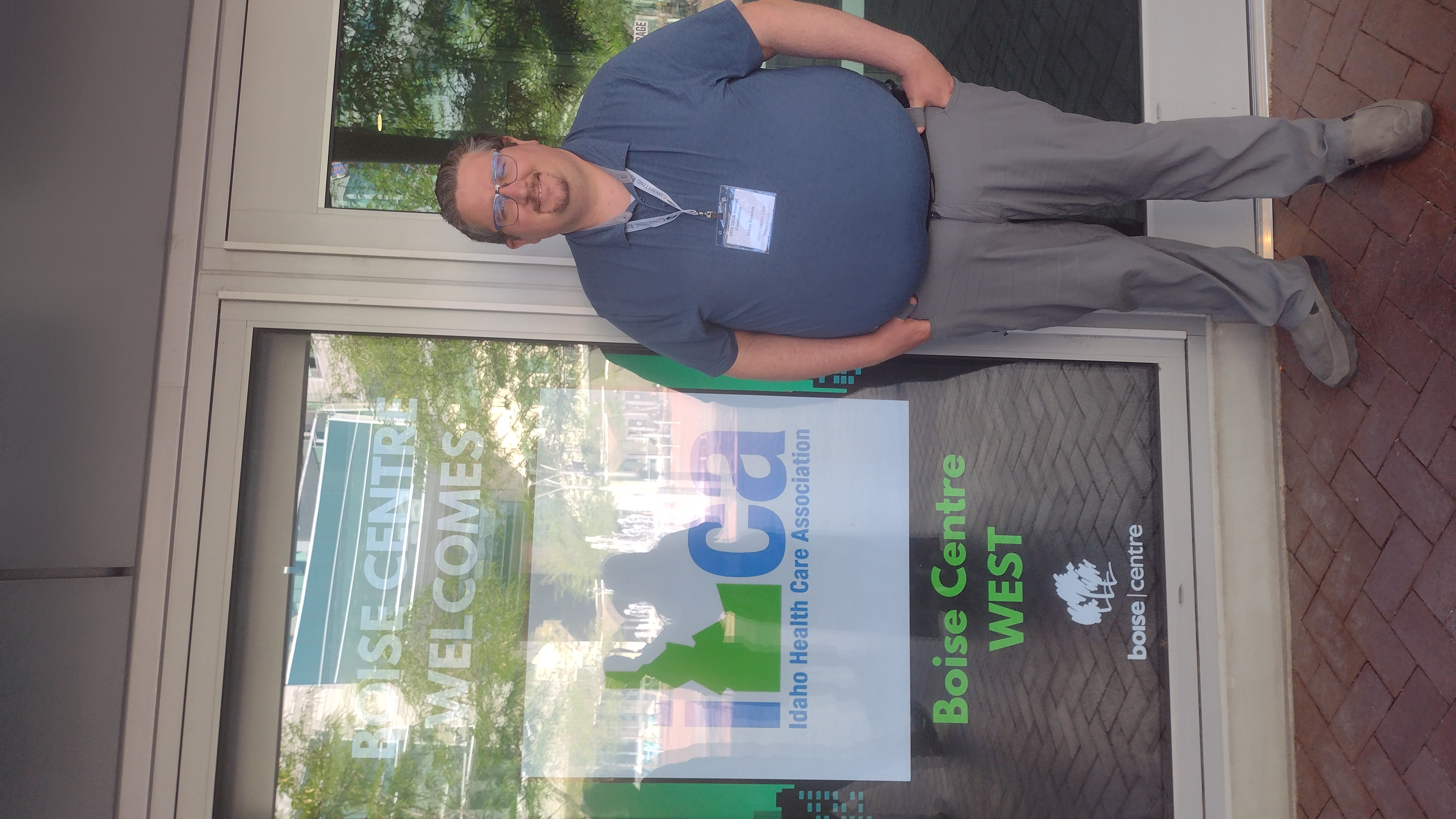 The first project I was tasked with was helping to update courses and quizzes to changes in a law. A bill was passed that would change certain parts of how assisted living facilities were to be run, and Idaho Health Care Association (IHCA) needed their course to be updated by when the changes went into place on July 1st. Like how I do for my quizzes and tests, I had to read through the questions and flag the ones that needed to be changed. By the time the project was finished, I reviewed and checked over a 1,000 questions against the law. This project reminded me of how important (and how much work!) it is to stay up to date on information, something I do as a science teacher.
The first project I was tasked with was helping to update courses and quizzes to changes in a law. A bill was passed that would change certain parts of how assisted living facilities were to be run, and Idaho Health Care Association (IHCA) needed their course to be updated by when the changes went into place on July 1st. Like how I do for my quizzes and tests, I had to read through the questions and flag the ones that needed to be changed. By the time the project was finished, I reviewed and checked over a 1,000 questions against the law. This project reminded me of how important (and how much work!) it is to stay up to date on information, something I do as a science teacher.
The second big project was to help out at their big annual summer convention (picture is by a sign at the Boise Centre). There are many goals with the convention. Administrators and nurses attend to stay current with regulations, earn continuing education units/hours (something similar to what we as teachers need), and to network with other assisted living facilities and companies. Vendors from companies show off their services and products that would help with caring for the residents in the hopes of getting business from facilities. IHCA works to raise money for scholarships for those working to become nurses and such and to raise money to allow them to travel and help out at different facilities or to lobby for facilities. I was given several different tasks, from directing people to helping out at the fundraising activities. I really enjoyed getting to know the people who have devoted their careers to helping their residents or facilities become better. I was struck by how many principles that were taught or shown at the convention can be applied to teaching middle schoolers in the classroom.
My last project consisted of helping update documents used by IHCA. This involved training how to use Canva to make graphics and brochures and updating documents to be more user friendly. A skill I am growing as a middle school teacher is how to create documents to efficiently relay information or how to make assignments less obtuse. So I was able to both use and grow that skill when working on unfamiliar documents and topics.
I am really grateful for the chance I had to work with IHCA. I learned more about health care and all the work that goes on in the background and in the law to run facilities. And I got to know some amazing people who are dedicated to helping others!
Grade Level and Subject Taught: 8th Grade Earth Science
Jonas Plew at TRIO Upward Bound
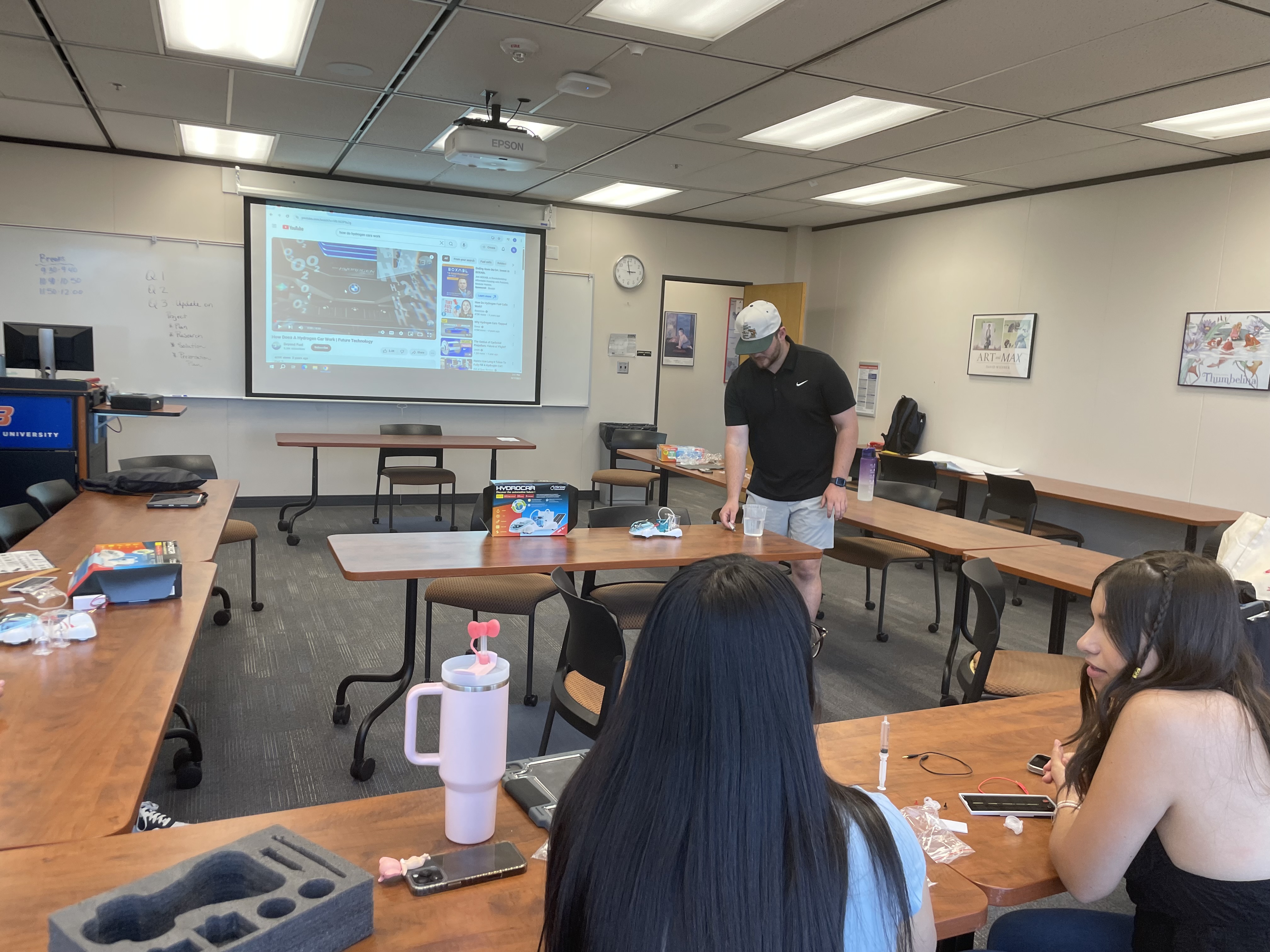 As the Technology Coordinator for the TRIO Upward Bound program, I had the privilege of working directly with high school students, educators, and administration at Boise State’s campus over a 5-week span. My role combined my passion for technology, teaching, and mentorship. I was able to increase my technical skills and provide instructional support by configuring classroom tech, mentoring students, and ensuring that teachers had the tools they needed to facilitate engaging, interactive lessons.
As the Technology Coordinator for the TRIO Upward Bound program, I had the privilege of working directly with high school students, educators, and administration at Boise State’s campus over a 5-week span. My role combined my passion for technology, teaching, and mentorship. I was able to increase my technical skills and provide instructional support by configuring classroom tech, mentoring students, and ensuring that teachers had the tools they needed to facilitate engaging, interactive lessons.
Goals & Intended Outcomes
- Serve as a mentor and academic support for students in STEM and multimedia classes.
- Configure, troubleshoot, and maintain student iPads for daily classroom use.
- Support teachers by setting up Google Classroom environments and organizing Google Drive resources.
- Ensure technology was fully functional and accessible for both students and staff.
- Enhance student engagement through hands-on digital learning experiences.
Accomplishments During My Time with TRIO Upward Bound
One of my core responsibilities was ensuring that all iPads were configured, updated, and ready for student use each day. Whether it was fixing connectivity issues, managing apps, or troubleshooting classroom tech problems, I worked behind the scenes to keep learning smooth and uninterrupted.
In addition to technical support, I played an active role in the classroom. I worked directly with students in STEM and multimedia courses, helping them with assignments, guiding them through complex topics, and encouraging their exploration of future careers in technology and science.
I also collaborated with instructors to streamline their use of Google Classroom and Google Drive. By organizing materials, setting up digital classrooms, and training staff on tools, I helped create an efficient and tech-friendly environment for both teaching and learning.
I am extremely grateful for the opportunity to be a part of such an amazing program that helps so many students from Idaho high schools. The technical experience that I have gained as the information technology coordinator has given me many ideas for how to improve my own curriculum and better prepare students for careers in IT, cybersecurity, and software development.
Grade Level and Subject Taught: 9th-12th
Carmen Buttcane at Stemfinity.com
 After being hired at Stemfinity.com, I was tasked with learning about the products that this company sells. And gave a presentation on those products. I also helped make storyboards for several projects. Emailed past clients. And double checked standards for 30 states in the United States and made sure that a technology tool called Ozobots could be used in lessons to help make the time students were learning standards more interactive and interesting.
After being hired at Stemfinity.com, I was tasked with learning about the products that this company sells. And gave a presentation on those products. I also helped make storyboards for several projects. Emailed past clients. And double checked standards for 30 states in the United States and made sure that a technology tool called Ozobots could be used in lessons to help make the time students were learning standards more interactive and interesting.
Just having a remote job. Was a huge accomplishment for me. I have never experienced working from home before and the time spent learning the products and meeting the staff through zoom and Google meets was a very unique experience.
I will definitely take home with me the knowledge that Stemfinity.com offers so much more than just STEM products. Some of those things include grant writing, several lesson plans with most of the products and a standards link for many of the products.
Grade Level and Subject Taught: 7th-12th
Brian Coffey at TRIO Upward Bound Summer Program 2025, Boise State University
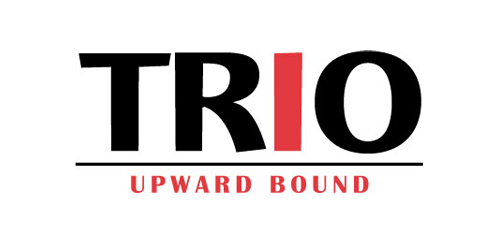 I was tasked with being the Internship Assistant for the TRIO Upward Bound Summer Program 2025 at Boise State University, which is a 5-week educational experience for TRIO students from Meridian H.S., Nampa H.S., Caldwell H.S. and Owyhee H.S. (the one at the Duck Valley Indian Reservation, not the one in Meridian). My initial goals were to find community partners that would host TRIO summer interns, which I started working on in May. I communicated with businesses, nonprofits, and individuals – many of whom I had first connected with last summer through my previous i-STEM Action Center externship last year. I coordinated efforts to formally engage host sites with the BSU TRIO Upward Bound office to make the internships official.
I was tasked with being the Internship Assistant for the TRIO Upward Bound Summer Program 2025 at Boise State University, which is a 5-week educational experience for TRIO students from Meridian H.S., Nampa H.S., Caldwell H.S. and Owyhee H.S. (the one at the Duck Valley Indian Reservation, not the one in Meridian). My initial goals were to find community partners that would host TRIO summer interns, which I started working on in May. I communicated with businesses, nonprofits, and individuals – many of whom I had first connected with last summer through my previous i-STEM Action Center externship last year. I coordinated efforts to formally engage host sites with the BSU TRIO Upward Bound office to make the internships official.
My next – and primary – task was to facilitate and support the TRIO internships. This included physically transporting students between BSU and their internship sites, periodically conducting internship site visits, and acting as a liaison between the interns and their host site supervisors throughout the 5-week program. I also met with site supervisors to obtain formal feedback about their experience with the TRIO interns and the internship program. I compiled that feedback with information about the interns’ experiences into reports for the TRIO Upward Bound program’s use.
The interns were placed at all kinds of locations ranging from The Idaho Foodbank, Agency for New Americans, TAIT Engineering, LEAP Housing, and several BSU Departments, including the Center for Orthopaedic and Biomechanics Research (COBR). The interns had incredible opportunities to engage in STEM work, including helping conduct live human experiments in a partnership between COBR and the BSU Kinesiology lab, creating 3D renderings of office buildings using the Revit CAD program at TAIT, and conducting STEM lessons and activities for the public at the Discovery Center of Idaho. The TRIO interns were all incredible! They worked hard and made the most of the great opportunities they were given.
I helped the TRIO interns navigate some of the challenges and difficulties they faced working in the adult business world in Boise. I also helped obtain feedback from the interns and the internship host sites to help the program improve some of its processes for next year, including better communication about scheduling and timing of the internships.
I learned a lot about what kinds of opportunities are available for students to engage during high school, while they’re in college, and also career opportunities that I was not fully aware of before. My externship experience this summer has reinforced my belief that my primary job as an educator is to inform and empower students to explore their world, find opportunities that interest them and stretch themselves to achieve more than what they might have thought was possible. I learned a lot from the students about resilience, the power of a positive attitude and keeping a sense of humor through it all.
Grade Level and Subject Taught: Grades 11th-12th, Exploratory Internships
Erik Kendall at Owyhee Produce
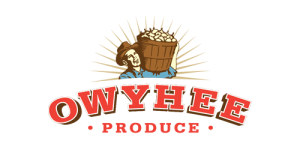 From Database Design to Employee Lifecycle: A Summer Externship Journey with Owyhee Produce
From Database Design to Employee Lifecycle: A Summer Externship Journey with Owyhee Produce
This summer, I had the incredible opportunity to participate in a STEM educator externship through the Idaho STEM Action Center. My host site was Owyhee Produce, a well-respected name in agricultural production. The experience not only expanded my understanding of workforce management systems but also directly informed how I teach concepts like systems design, data structures, and career development in the classroom.
Initial Assignment: Designing an Employee Data Management System
My initial task was to develop a Human Data (HD) database aimed at centralizing employee information, enhancing training tracking, and improving HR decision-making processes. The goal was to create a scalable system that could evolve with the company’s growth.
Pivoting the Project: Embracing the Employee Lifecycle
During my interviews with various team members, I discovered that a similar system was already in place. This realization prompted a strategic pivot in my project. Recognizing an opportunity to add value, I shifted focus to defining and formalizing Owyhee Produce’s Employee Lifecycle.
Defining the Seven Stages of the Employee Lifecycle
- Workforce Planning & Requisition- Objective- Align talent needs with business strategy
- Talent Attraction & Sourcing- Objective- Generate a qualified, diverse candidate pool
- Assessment & Selection- Objective- Identify the best candidate for the role and culture.
- Hiring & Onboarding- Objective- Convert candidate to productive employee
- Development, Performance & Mobility- Objective- Maximize engagement, productivity, and career growth
- Retention & Employee Relations (ER)- Objective- Sustain a healthy, compliant workplace
- Separation & Off‑Boarding- Objective- Conclude employment smoothly and compliantly
Impact on My Career and Classroom
This externship was informative. It reinforced the importance of adaptive project-based work and reminded me that listening and iteration are just as important as technical execution. I’m bringing that mindset back into my classroom this fall, especially as I guide students through software development and cybersecurity projects.
Most importantly, this experience emphasized how technical skills like database design and systems thinking apply beyond tech. They’re tools for solving real human problems in every industry. I will now embed more real-world scenarios and career-contextualized activities in my CTE lessons, ensuring my students understand both the “how” and the “why” of what they’re learning.
Grade Level and Subject Taught: 9th-12th
Sarah Atwell at Idaho Innovation Center
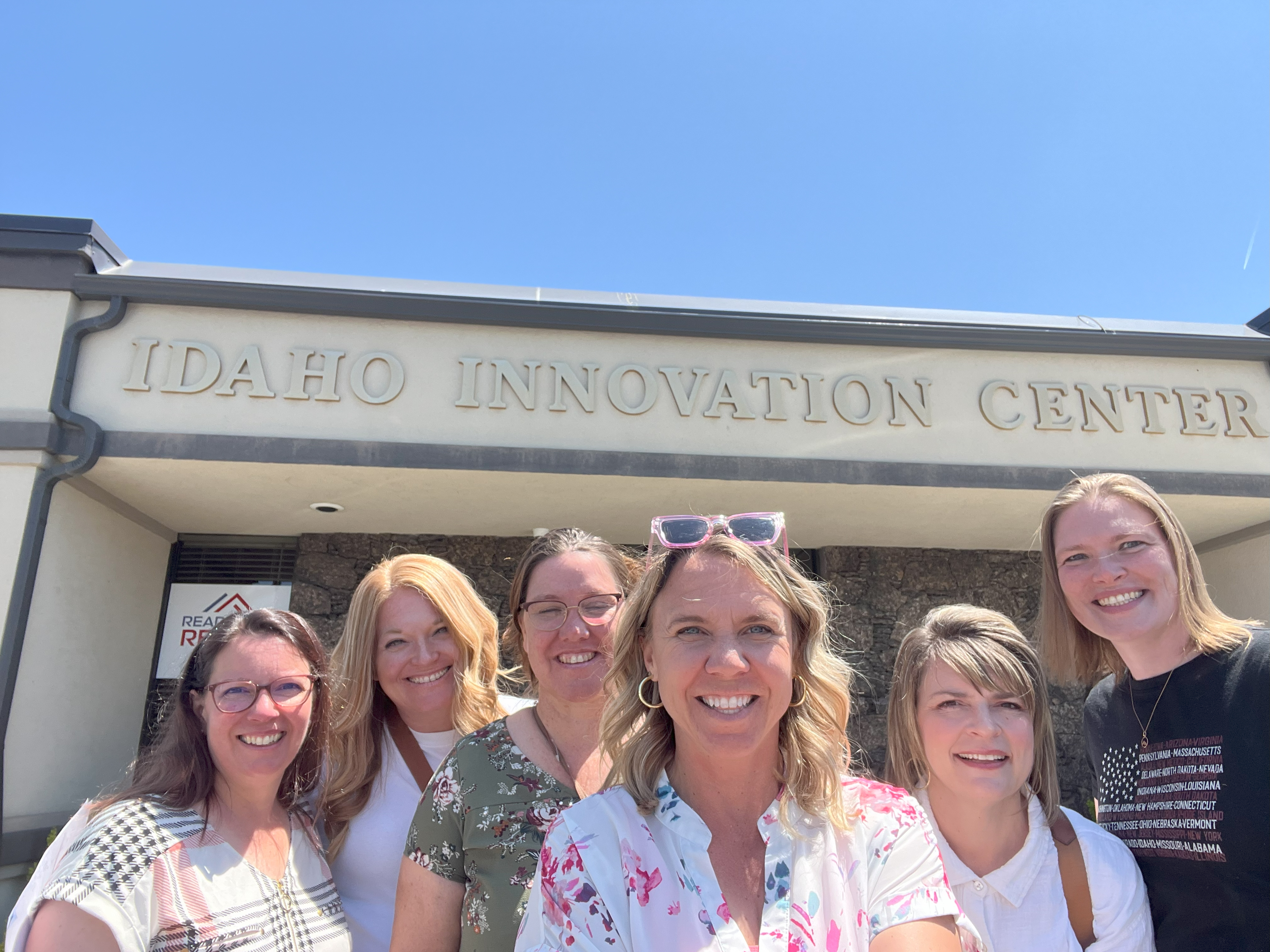 I spent the summer completing an externship at the Idaho Innovation Center in Idaho Falls, and I couldn’t have asked for a better introductory project. My task? To develop a full marketing campaign for the new certified commercial kitchen. Working alongside teammate Shannon Olsen of White Pine and guided by mentor Marshae Campbell, my mission was to build awareness, engage the local food‑entrepreneur community, and generate interest and leads for kitchen usage.
I spent the summer completing an externship at the Idaho Innovation Center in Idaho Falls, and I couldn’t have asked for a better introductory project. My task? To develop a full marketing campaign for the new certified commercial kitchen. Working alongside teammate Shannon Olsen of White Pine and guided by mentor Marshae Campbell, my mission was to build awareness, engage the local food‑entrepreneur community, and generate interest and leads for kitchen usage.
Over the summer, I dove into crafting a multi-faceted marketing strategy-researching commercial kitchens, cooking classes, and planning social media content. I attended business classes through The Innovation Center. To gather inspiration and real-world insights, I visited commercial kitchens in Boise, including Osage Kitchen in Boise. Working with Verna at Osage, I learned valuable lessons in kitchen logistics, marketing, and networking, all of which informed improvements I suggested for IIC’s kitchen marketing focus.
This experience gave me hands‑on practice in strategic marketing and enhanced my understanding of operational needs within a commercial kitchen. Learning to use AI as a tool to generate ideas, refine copy, and streamline social media planning was a game-changer. It sparked my creativity for classroom applications: this fall, I’ll be using AI to design customized STEM activities—step-by-step experiments, creative engineering challenges, and support for students’ scientific writing and lab reports.
Ultimately, this externship didn’t just enrich my professional toolkit-it reshaped my teaching approach. I’m excited to bring storytelling-inspired by all of the business start up companies that I learned about this summer, and AI-fueled creativity back to the classroom. A huge thanks to Shannon for collaborating on the marketing campaign, Marshae for her mentorship, and Verna for sharing her expertise. This summer has truly shown me how innovation, community, and STEM intersect—and I can’t wait to incorporate these lessons into my classroom and future work.
Grade Level and Subject Taught: 4th and 5th Grades Combined
Lola Johnson at Exyte
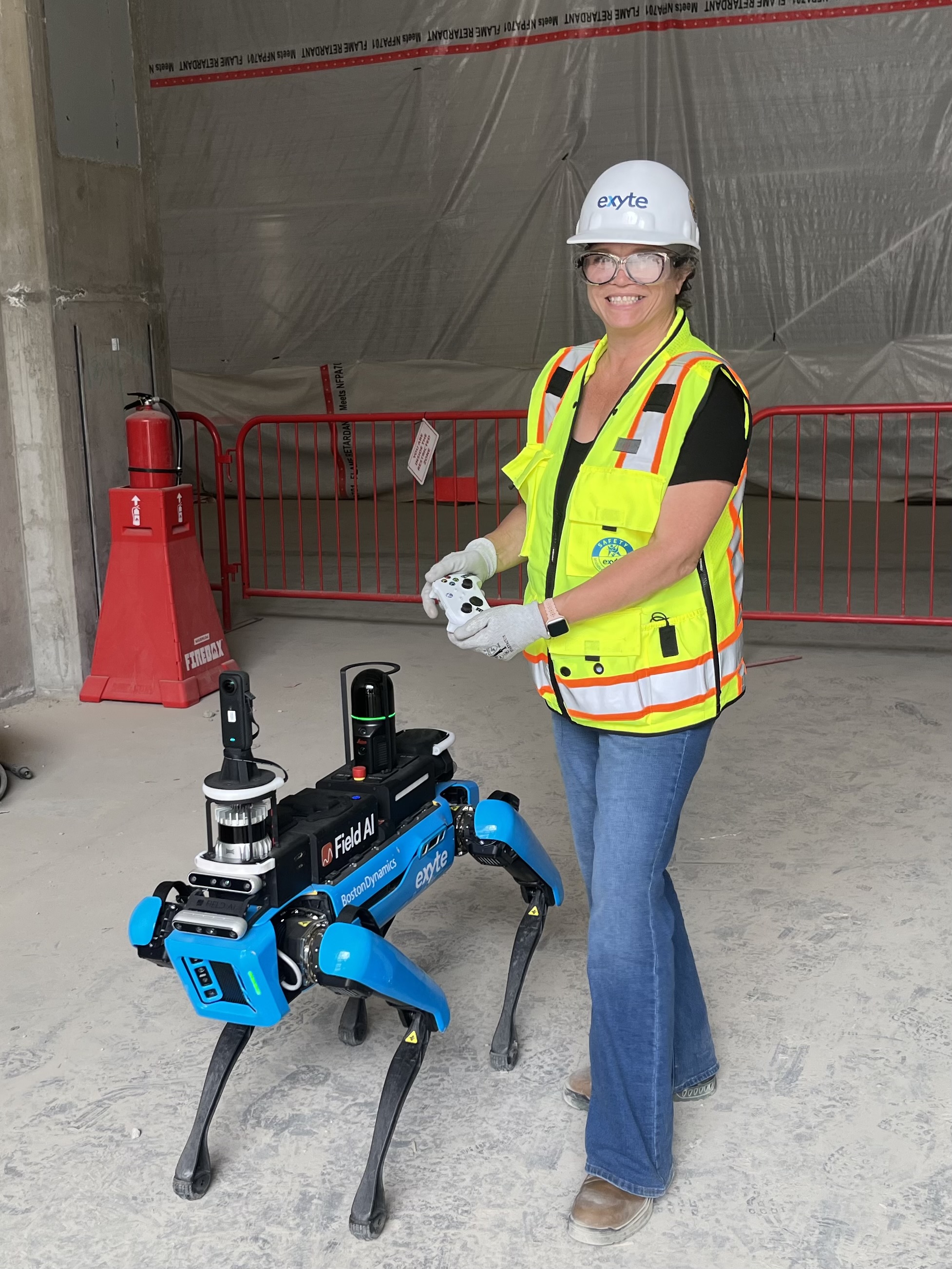 From the Art Room to the Construction Site: My Eye-Opening Externship in Virtual Design and Construction
From the Art Room to the Construction Site: My Eye-Opening Externship in Virtual Design and Construction
I never imagined I’d find myself 160 feet above the ground, navigating open construction framing in steel-toe boots and a hard hat—all in the name of exploring technology. But that’s exactly where my recent externship took me, and the experience was as inspiring as it was enlightening.
As an educator, I’m always looking for ways to connect classroom learning with real-world applications. This externship with Exyte’s Virtual Design and Construction (VDC) team gave me a front-row seat to the cutting-edge technology shaping the future of construction—and a wealth of insights to bring back to my students.
What Is Virtual Design and Construction?
At the heart of my experience was Building Information Modeling (BIM)—a collaborative process that manages information throughout a construction project’s lifecycle. From initial design and engineering to clash detection and final construction, BIM ensures that every element of a project is aligned, efficient, and cost-effective.
The VDC team at Exyte uses BIM to coordinate everything: electrical systems, plumbing, fire suppression, ventilation, and more. By identifying potential issues virtually before they happen in the field, they save time, money, and materials—while improving the quality of the final build.
High-Tech Tools on the Job Site
One of the most exciting parts of the externship was working alongside technicians who operate some truly futuristic tools:
- Robot dogs equipped with LiDAR (Light Detection and Ranging) for detailed spatial mapping.
- Drones that capture high-resolution images and video from 400 feet in the air.
- 360-degree AI cameras that document every angle of the construction site.
These tools feed data into sophisticated software that aligns GPS coordinates, radar mapping, and design plans to track progress and ensure accuracy. The level of precision is astounding—LiDAR can even distinguish between steel beams, concrete, ductwork, and piping.
Real-Time Problem Solving and Collaboration
Technology in this field is evolving at lightning speed. Hardware and software are constantly being updated, sometimes even mid-project. I witnessed firsthand how field techs troubleshoot issues in real time, often with remote support from their teams.
I also participated in collaborative meetings where virtual models were analyzed by project managers, engineers, architects, and contractors. These sessions were like watching a live problem-solving lab—teams working together to resolve clashes and adjust plans before materials are even manufactured.
Bridging the Gap Between Art and Industry
While my background is in Art education, this experience reinforced how deeply connected the arts are to fields like construction and technology. The skills we cultivate in the art room—creativity, visual literacy, problem-solving—are the same ones that drive innovation in VDC.
Here are some of the essential soft skills I’ll be emphasizing with my students moving forward:
- Continuous curiosity
- Adaptability and resilience
- Collaborative teamwork
- Patience and perseverance
- Ownership of mistakes and learning from them
- Visual literacy and spatial awareness
- A willingness to step outside their comfort zones
Final Reflections
This externship was more than just a professional development opportunity—it was a powerful reminder of how education and industry can intersect in meaningful ways. I’m excited to bring these experiences back to my classroom, to inspire students with real-world applications of their creativity and to show them the diverse, dynamic careers that await them.
Whether they pursue art, engineering, or something in between, I want my students to know that their skills are valuable—and that the world needs their unique perspectives.
Grade Level and Subject Taught: 6-8 Art
Cherise Hensley-Jenkins at Cusack Linscott Merck Law Firm
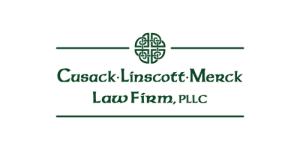 CASE #1: A BIG FIRE
CASE #1: A BIG FIRE
QUESTION: What happens when a corporation logs hundreds of acres of timber, burns the debris left behind, but never confirms the fire is out?
ANSWER: Litigation regarding a damaging wildfire and potential negligence, that’s what! Here is what I got to do while preparing for trial that could potentially involve millions awarded in damages.
- Organizing and reading depositions, highlighting useful spots for cross-examination or argument.
- Testing out the case with a focus group to determine where the strengths and weaknesses of our arguments are.
- Writing Jury Instructions that will be used to instruct the jury on legal terms and aspects of the law that will be addressed by both sides.
- Submitting Motions in Limine- otherwise known as topics or ideas that are off-limits for discussion in front of a jury because they could be influenced by the terminology or arguments incorrectly.
- Framing the Case: What is the main theme or idea you’ll push throughout the entire trial? It connects each and every plaintiff to the main idea.
- Submitting motions to the court.
Connection to Teaching?
- Anticipating what the other side will say is great for debates and argumentative writing.
- Theme is something we try to get students to care about.
- It’s neat that it applies to more situations than just the literature world.
- Giving explanation of definitions or problems before diving into an argument gives great context for later points.
- Staying organized and proofreading EVERYTHING- show students it’s not just for school assignments.
- Word choice and the impact of diction in sending a message/making an argument.
CASE #2: FAILURE TO LAUNCH
QUESTION: What happens when a father dies and leaves a multi-million dollar estate to his four adult children, one of whom never left the nest and claims more rights to the property than the other siblings?
ANSWER: A long-going legal battle happens! Here’s what I got to help with on this case:
- Organizing hearing notebook- including all the pleadings that had taken place prior to the current hearing. This is so the attorney can rely on past evidence.
- Organizing and labeling exhibits for the hearing.
- Combed through defendant’s pleadings for inconsistencies in story.
- Attended a court hearing for a reconsideration and a motion to recoup attorney fees, where evidence was admitted into the record. There were plenty of objections and rebuttals throughout, which was interesting to witness. Hearing-assistance technology was incorporated, and Zoom was also used for attorneys or witnesses who could not attend in person. I found it interesting that Zoom was a viable option and trusted for such important hearings.
Connection to Teaching?
- Recognizing key details also applies to analysis of literature. (Example: Foreshadowing)
- Close reading real-world application
- Could instruct students on appropriate behavior for professional settings
- Conflict resolution
NetDocuments Database for document saving and security. When completing estate planning, we are given very sensitive information about clients. To take care that this information is safe, it is scanned into a secure server and is organized into password protected areas. Original copies are given back to the client and paper copies are shredded by a security company that works with the firm.
Zoom meetings with co-attorneys to plan trial preparation duties, discuss strategy, and delegate important tasks in the weeks leading up to the trial.
I’m very thankful for the opportunity the STEM program provided me this summer, because I’ve truly enjoyed the experience working here at Cusack Linscott Merck and hope to continue to do so in the future!
Disclaimer: Due to the sensitive nature of some of the documents and trials I was working on, I cannot give too many details or photos regarding particular cases. I signed a confidentiality agreement to protect clients and the law firm.
Grade Level and Subject Taught: English – 11th Grade
Monica McDonald at Idaho Launch/Idaho Workforce Development
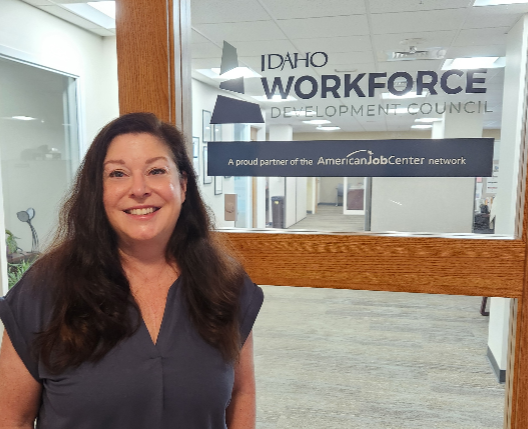 This is my third summer Externing in the STEM program and it never fails to amaze me how much I learn that I can bring back to my students. This summer, I have had the privilege to work for Idaho’s Workforce Development’s Launch Program, which provides grants to graduating seniors to pursue in-demand careers. It also offers grants to adults making a career switch.
This is my third summer Externing in the STEM program and it never fails to amaze me how much I learn that I can bring back to my students. This summer, I have had the privilege to work for Idaho’s Workforce Development’s Launch Program, which provides grants to graduating seniors to pursue in-demand careers. It also offers grants to adults making a career switch.
Throughout my Externship, I have learned about all the Idaho programs for career exploration and planning, as well as the resources available to educators, students, and parents. My first project this summer included looking at online resources, as well as counselor and parent Launch handbooks, to see how they can be utilized for middle school students, educators, and parents. The other major project was creating a career pathways resource to show students potential job opportunities from entry level positions to training and degree programs in Idaho. It will provide students with the ability to find programs in desired careers that they can use Launch money to pursue.
I also participated in the Idaho Workforce Development Council Meeting and the Idaho Indian Education Summit in June. These experiences allowed me to gain further insight into the needs of Idaho employers and to make valuable connections within the community, from vocational school directors to business leaders and legislators.
During the school year, I teach 8th grade Science and Aquatic Ecology. I plan to use the knowledge I’ve gained this summer to promote career opportunities to my students, which is especially important as they will be creating their own 4-year high school planners, which often include college preparatory and CTE courses. One big driver of fewer students entering STEM related fields is a lack of understanding of all the options. My plan is to show a career video every day during attendance, focusing on STEM professions as well as other occupations to allow for exposure and discussion. Another focus for all my students this coming year will be to align classroom expectations to work ready skills needed in future careers.
Grade Level and Subject Taught: 8th Grade Physical Science and Aquatic Ecology
Elaine Gross at STEMfinity
 This summer, I had the incredible opportunity to complete an externship with STEMfinity, a leading organization dedicated to advancing STEM education. As someone deeply passionate about science, technology, engineering, and math, working with STEMfinity was the perfect fit. The owner and employees are all amazing people who care deeply about sharing STEM and educating others.
This summer, I had the incredible opportunity to complete an externship with STEMfinity, a leading organization dedicated to advancing STEM education. As someone deeply passionate about science, technology, engineering, and math, working with STEMfinity was the perfect fit. The owner and employees are all amazing people who care deeply about sharing STEM and educating others.
Throughout the experience, I gained valuable technical skills—from assembling computers and managing inventory in the warehouse, to providing customer support and assisting with product integration. But the externship offered more than just hands-on learning. I developed essential soft skills like time management, multitasking across multiple projects, and communicating ideas effectively to diverse audiences.
One of the most exciting parts of my role was helping to create storyboards aligned with educational standards, showing how STEMfinity products can be used in real classroom settings. It was rewarding to know that our work could directly support teachers in making STEM concepts more accessible, and engaging for their students.
Another highlight was learning about STEMfinity’s deep commitment to finding tailored solutions for educators and organizations. It reminded me that STEM isn’t just about solving technical problems—it’s about empowering people to shape their futures through education and innovation.
This experience reinforced my belief in the transformative power of STEM, and I’m excited to carry these lessons forward as I continue my journey in the field.
As I worked Hybrid I had multiple projects from updating inventory online, to working with customers who did not complete their carts, adding standards to products, creating storyboards, putting kits together, and creating presentations on a few products to teach others.
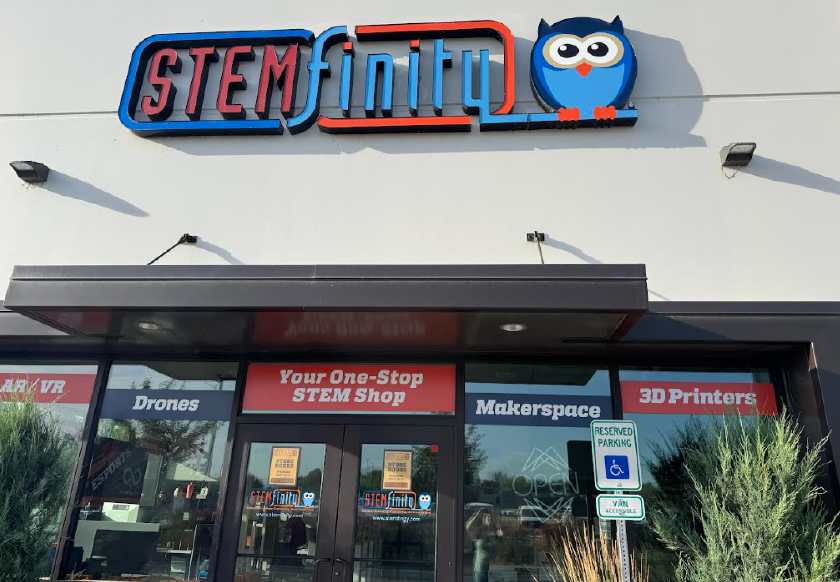 I accomplished so much this summer and found a company that I hope that I can continue to consult with even after my externship is over. Everyone was amazing and very supportive.
I accomplished so much this summer and found a company that I hope that I can continue to consult with even after my externship is over. Everyone was amazing and very supportive.
This experience gave me the opportunity to work on multitasking and working closer with employees, and the public. As I finished my administration degree last summer and looking forward to in the future being an administrator and a teacher these skills will help me when it comes to working with others.
Grade Level and Subject Taught: K-8 Special Education
Neva Noe at TRIO Upward Bound
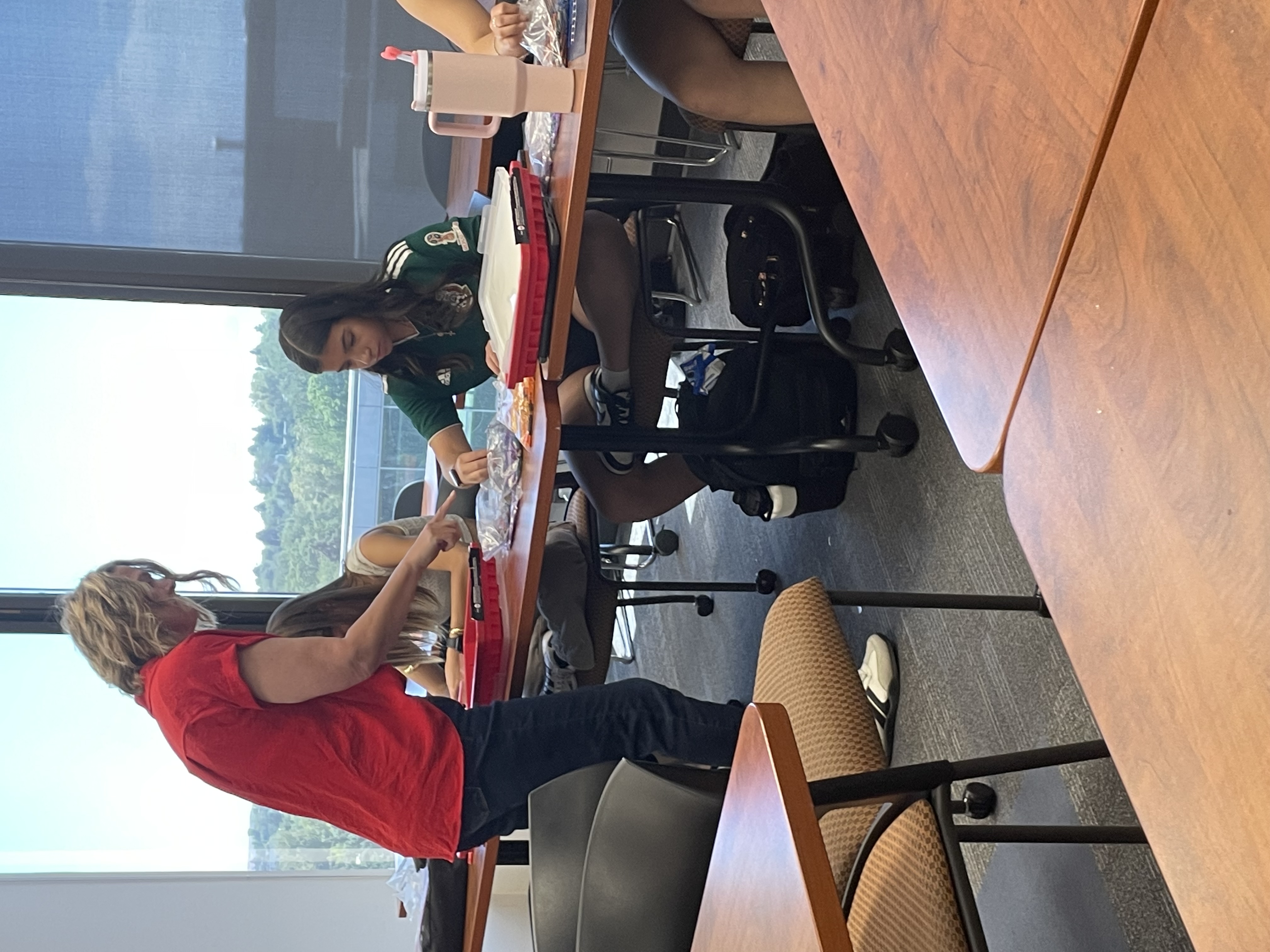 My assigned externship gave me the opportunity to teach TRIO Upward Bound high school students, many of whom are first-generation college bound. I was assigned to teach two classes: Multimedia and STEM Career Exploration. The expectations set for me included guiding students in the Multimedia class to complete a digital yearbook that could also be used for promotion and advertisement of the program, and providing students with multiple opportunities to experience STEM occupations in Boise and the surrounding areas.
My assigned externship gave me the opportunity to teach TRIO Upward Bound high school students, many of whom are first-generation college bound. I was assigned to teach two classes: Multimedia and STEM Career Exploration. The expectations set for me included guiding students in the Multimedia class to complete a digital yearbook that could also be used for promotion and advertisement of the program, and providing students with multiple opportunities to experience STEM occupations in Boise and the surrounding areas.
During the program, I organized and facilitated field experiences that brought students directly into STEM environments, including visits to the animal and plant science laboratories at the Idaho Department of Agriculture, where they learned about biosecurity and agricultural technology. We explored habitat design and conservation at Zoo Boise, visited the BSU College of Nursing and the Department of Kinesiology to explore health sciences, and toured the GIMM (Games, Interactive Media & Mobile Technology) program at Boise State University to learn about digital innovation.
In the Multimedia class, I guided students through the process of capturing photos and video content, collaborating on the layout, and producing a digital yearbook that documented the five-week summer experience. Students also worked in teams to produce promotional videos that highlighted the impact and opportunities provided by the TRIO Upward Bound program. Students were able to experience professional media production during our visit to PBS Idaho Public Television, where they observed behind-the-scenes broadcasting and storytelling techniques.
As an educator with 25 years of teaching experience, this externship has deepened my understanding of how immersive, career-connected learning can transform student engagement. It has broadened my perspective on integrating real-world applications and media production into my teaching style. I now see more clearly how exposure to authentic career pathways—combined with opportunities for student voice and creative expression—can inspire and empower learners. This experience has reinvigorated my practice and reaffirmed my commitment to preparing students not just academically, but for their futures.
Grade Level and Subject Taught: 9th-12th
Logan Shipley at Micron (Boise)
 My time at Micron was exceptional! I had the opportunity to spend time in so many different areas of Micron’s semi-conductor manufacturing and R&D environment. My main focus was to gain an understanding of industry engineering standards and practices, and that is exactly what I received. To serve as a brief synopsis of my experience, I worked with manufacturing technicians, process engineers, manufacturing engineers, equipment technicians, machine and tool manufactures, shift leads, area managers, process owners (R&D engineers). I spent time in places like the Remote Operations Center (ROC), clean room fabrication (FAB4), machine shop, “sub fab”. chemical storage, transport and abatement, and many conference rooms for daily confirmation meetings. I learned about the Semi-conductor manufacturing process, and R&D specifically. I participated in preventative maintenance (PM) in which we changed a “Kit” for a Physical Vapor Deposition (PVD) tool. I assisted in the replacement of a vacuum pump for a Diffusion tool. I observed the scheduling and tool management system as well as several proprietary and 3rd party communication systems. I connected and learned from so many incredible Micron Team Members that not only showed passion for their work but a complete understanding as to what Micron’s goal is and how they directly contribute to that immense mission.
My time at Micron was exceptional! I had the opportunity to spend time in so many different areas of Micron’s semi-conductor manufacturing and R&D environment. My main focus was to gain an understanding of industry engineering standards and practices, and that is exactly what I received. To serve as a brief synopsis of my experience, I worked with manufacturing technicians, process engineers, manufacturing engineers, equipment technicians, machine and tool manufactures, shift leads, area managers, process owners (R&D engineers). I spent time in places like the Remote Operations Center (ROC), clean room fabrication (FAB4), machine shop, “sub fab”. chemical storage, transport and abatement, and many conference rooms for daily confirmation meetings. I learned about the Semi-conductor manufacturing process, and R&D specifically. I participated in preventative maintenance (PM) in which we changed a “Kit” for a Physical Vapor Deposition (PVD) tool. I assisted in the replacement of a vacuum pump for a Diffusion tool. I observed the scheduling and tool management system as well as several proprietary and 3rd party communication systems. I connected and learned from so many incredible Micron Team Members that not only showed passion for their work but a complete understanding as to what Micron’s goal is and how they directly contribute to that immense mission.
Take aways from this experience extend past the curriculum changing realization. It was a shaping experience that forced me into the realization of what industrial engineering is like and how my curriculum already helps ready students for careers in such an environment; directly correlating my classroom. I plan on implementing several ideas taken from my experience: 1. Creating a Preventative Maintenance (PM) schedule in which I will personally train students on how to run maintenance on the tools and machines that we use often (ex: CO2 lasers, 3D printers, engineering laptops, power tools). The purpose of this is not only to help reduce the amount of work that I, as the teacher, must complete but also increases student autonomy, independence, and responsibility. 2. Problem Statement slips are something that one specific area in Micron complete every time their manufacturing engineers are solving a problem for their team. They simply write out what is the problem they are trying to solve, and what observations they are having about said problem. For students, this will help them assemble their thoughts and hopefully help them work their way through their problem alone. Then I am able to step in and read clear and concise problem they are having and their own observations. Absent of this, the interacting between student and teacher looks significantly less structured and looks more like an answer seeking scenario rather than a problem-solving scenario. 3. Finally, having Micron team members from various areas come and speak to my classes to explain to them what Micron is all about and the direct ways in which the material that they (my students) are learning about could create a career at Micron in the future. The intention of this relationship is that we help students discover what they may want to do as a career early on, as well as assist Micron in their necessity for people of various skills.
Grade Level and Subject Taught: 8th & 9th grade Pre-engineering
Jennifer Gorczyca at Stemfinity
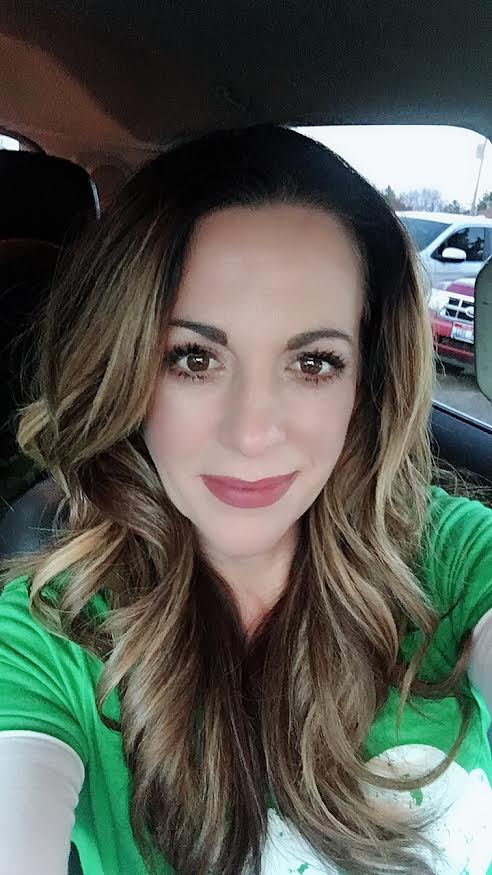 Discovering the Possibilities: My Externship with Stemfinity and the Idaho STEM Action Center
Discovering the Possibilities: My Externship with Stemfinity and the Idaho STEM Action Center
This summer, I had the incredible opportunity to participate in an externship with Stemfinity through the Idaho STEM Action Center, and I can confidently say—it has been a game-changer for me as an educator.
When I began this journey, I honestly had no idea just how many amazing STEM tools, programs, and resources existed. As a teacher, it’s easy to get caught up in the routine of daily instruction, but this experience opened my eyes to a whole new world of possibilities. From artificial intelligence tools to engaging hands-on curriculum, I learned about a wide variety of programs that can ignite curiosity and creativity in students.
One of the most valuable parts of my externship was working directly with customer service programs and learning how to cross-reference state standards with STEM curricula. This process not only deepened my understanding of educational resources, but also helped me think more critically about how to align classroom instruction with real-world applications. It gave me practical strategies that I plan to implement right away with my students.
What stood out most, though, was the team. Jeni Kay and the Stemfinity team were absolutely amazing—so helpful, kind, energetic, and passionate about what they do. Their enthusiasm for STEM education was contagious, and they made every part of the experience enjoyable and meaningful.
This externship didn’t just enhance my STEM knowledge—it boosted my confidence. I now feel more prepared and excited to bring new STEM activities into my classroom. I’m leaving this experience with a fresh perspective, renewed inspiration, and a strong desire to continue growing in this field.
I’m truly grateful for the opportunity and already looking for ways to stay involved and explore even more STEM programs in the future. If you’re an educator and have the chance to participate in an externship like this—take it. It will change the way you teach and how you see the future of learning.
Grade Level and Subject Taught: 2nd grade general education teacher, all subjects
Christine Ivie at South Central Idaho Small Business Development Center
 This summer I have the pleasure of working with the amazing team at the South Central Idaho Small Business Development Center! Under the excellent leadership of Director Bryan Matsuoka, I am analyzing business performance data, return on investment from consulting services, employee churn rate, and employee pipeline for specific industries. I am working on several projects that are designed to assist the SBDC in showing the impact their services have on businesses in the region. I am also working on a project designed to identify better pathways to connect K-12 graduates with specific industry needs and employment opportunities in STEM-related small businesses. I am enjoying learning from a team that has helped create small business success in this region of Idaho. It has been very interesting to learn about the needs of Idaho small businesses. I think the biggest impact on my career knowledge, and on my students, is in understanding the opportunities available to students. This externship will help me better prepare graduates to finish technical certificates, post-secondary degrees, and apprenticeship programs in areas of high need. It will also help me build relationships with industry partners that might be great connections for students.
This summer I have the pleasure of working with the amazing team at the South Central Idaho Small Business Development Center! Under the excellent leadership of Director Bryan Matsuoka, I am analyzing business performance data, return on investment from consulting services, employee churn rate, and employee pipeline for specific industries. I am working on several projects that are designed to assist the SBDC in showing the impact their services have on businesses in the region. I am also working on a project designed to identify better pathways to connect K-12 graduates with specific industry needs and employment opportunities in STEM-related small businesses. I am enjoying learning from a team that has helped create small business success in this region of Idaho. It has been very interesting to learn about the needs of Idaho small businesses. I think the biggest impact on my career knowledge, and on my students, is in understanding the opportunities available to students. This externship will help me better prepare graduates to finish technical certificates, post-secondary degrees, and apprenticeship programs in areas of high need. It will also help me build relationships with industry partners that might be great connections for students.
Grade Level and Subject Taught: K-12 Superintendent and School Counselor
Greg Gissel at Project Learning Tree Sustainable Forestry Tour
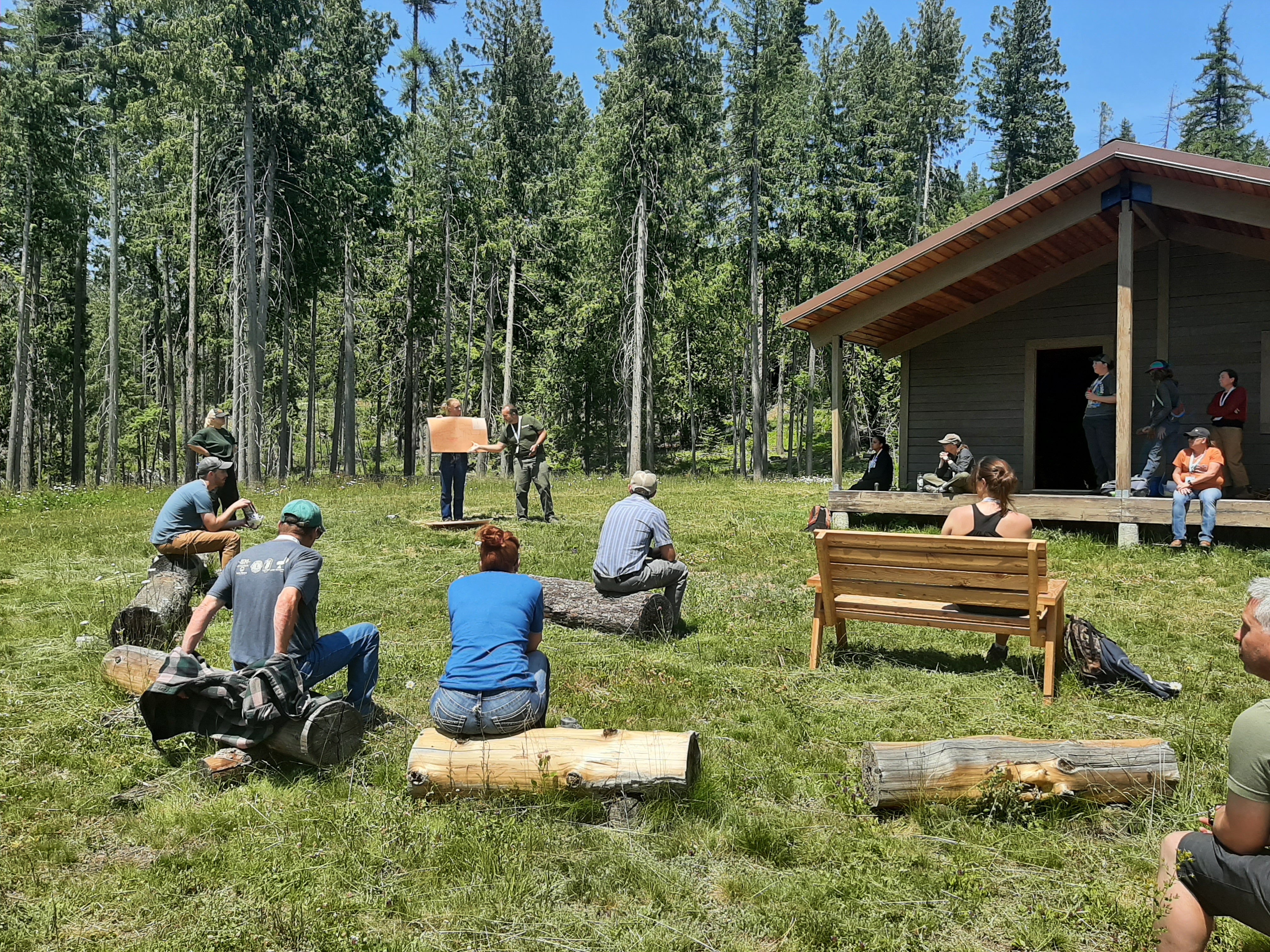 I was selected to be an extern for the Project Learning Tree’s Sustainable Forestry Tour. The goal was to assist in interviewing presenters and capturing moments to be used on their website and social media posts. I am also tasked with reviewing recorded dialogue and transcribing that dialogue into text. I will be assisting in the creation of media posts regarding the tour.
I was selected to be an extern for the Project Learning Tree’s Sustainable Forestry Tour. The goal was to assist in interviewing presenters and capturing moments to be used on their website and social media posts. I am also tasked with reviewing recorded dialogue and transcribing that dialogue into text. I will be assisting in the creation of media posts regarding the tour.
I learned a lot about Sustainable Forestry and the occupations that are available in Forestry. The industry has suffered from a negative image in the past but after attending this tour I understand that Sustainable Forestry is important for healthy forests, products we use everyday, and it is also a great way to make a living.
I will use the knowledge gained from this experience to teach my students about Forest Ecology, Sustainable Forestry techniques, as well as potential employment opportunities in the industry. My goal is to bring to light the positives of Sustainable Forestry to my students so they understand how important it is to use our forests wisely so our future generations can enjoy them as well.
Grade Level and Subject Taught: High School Science
Parker Stucki at The Bassic Trainer (Lawrence Stone)
 Helping Leaders Lead: My Summer Externship with The Bassic Trainer
Helping Leaders Lead: My Summer Externship with The Bassic Trainer
This summer, I’ve had the opportunity to complete an externship with The Bassic Trainer, a company focused on leadership mentoring and training. Their mission is to help people become stronger, more intentional leaders in every area of life—whether that’s in business, education, or personal growth.
My main task has been assisting with the redesign and rebuild of their website. The goal is to create a user-friendly, modern platform that clearly communicates their services, supports their growing community, and highlights the launch of their upcoming book: Boss Level Adulting.
In addition to working on the website, I’ve also been reviewing the Boss Level Adulting manuscript and providing feedback. This book is a key part of their brand and message, and it’s been exciting to help shape the way that message will reach people.
I’ve completed over 200 hours of work, which has included:
- Planning the layout and functionality of the new website
- Reorganizing and updating content to reflect their evolving brand
- Offering detailed editorial feedback on chapters of Boss Level Adulting
- Collaborating with the founder to align the website and book messaging
This externship has definitely impacted my career knowledge and teaching style. As a teacher, I’m always looking for ways to help students think like leaders and take responsibility for their own growth. Working with The Bassic Trainer has given me new tools, language, and ideas I can bring into my classroom—especially when it comes to setting goals, building confidence, and helping students “level up” in their own development.
It’s been a rewarding experience to contribute to a real-world project that aligns so closely with the values I try to bring into education. I’m looking forward to finishing the project strong and taking these lessons with me into the school year.
Grade Level and Subject Taught: 9th Grade Physics
Megan Weaver at Coeur d’Alene Regional Chamber of Commerce
 This summer I had the privilege of being partnered with Linda Coppess with the Coeur d’Alene Regional Chamber of Commerce for my externship. The Chamber is connected to over a thousand businesses in this area. Not only is the view from the office window incredible, but Linda and her team have been amazing. They have shared with me how STEM is used every day in not only their jobs, but in all of the businesses in their association. I have been connected to business leaders and had conversations about making the bridge between education and the future workforce.
This summer I had the privilege of being partnered with Linda Coppess with the Coeur d’Alene Regional Chamber of Commerce for my externship. The Chamber is connected to over a thousand businesses in this area. Not only is the view from the office window incredible, but Linda and her team have been amazing. They have shared with me how STEM is used every day in not only their jobs, but in all of the businesses in their association. I have been connected to business leaders and had conversations about making the bridge between education and the future workforce.
One of the projects that I have worked on related directly to technology. The Chamber has a business member kiosk and a web mobile app that will soon be launched. One of the behind-the-scenes pieces that I was a part of, was working within the database to ensure accuracy so that the data that is pulled from there reflected the business profiles correctly. The other project was research based. The Chamber is exploring the possibility of creating an extension in establishing a nonprofit foundation. I investigated the steps in this huge undertaking and presented my findings to the Chamber Board. This has been an incredible experience, and I am thankful for my time to learn and work with Linda and the team at the Coeur d’Alene Regional Chamber of Commerce!
Grade Level and Subject Taught: 5th Grade
Miranda Risinger at Discovery Center
At my host site, I was tasked with a variety of activities including developing and assisting with hands-on STEM education experiences for the patrons of the museum as well as students participating in STEM camps. When I wasn’t actively involved with students and patrons, I worked on developing science projects patrons could either purchase or check out to supplement their learning at home. These kits can be used for home school students, teachers in a school setting, libraries, as well as any other general public interested. The project focused on creating engaging, inquiry-based activities aligned with core science and engineering standards, using low-cost and accessible materials. Many of these materials are recycling parts from bottles, CDs, cardboard or other recyclables.
The primary goals were to increase interest and confidence in STEM among students, support teachers with creative lesson materials, and foster community engagement through interactive learning. Intended outcomes included improved student understanding of scientific concepts, greater participation from local families. I noticed that there was a gap in some of the “kits” available for patrons in the areas of engineering and life science, so I focused quite a bit of time developing kits for this area.
During my time at the host site, I created and implemented over a dozen unique STEM kits and lesson plans, including activities on water filtration, rubber band-powered vehicles, and light diffraction. I trained volunteers, led workshops, and collected student feedback to refine lessons. I also translated multiple kits into Spanish to increase accessibility for bilingual families.
This experience has helped shape my understanding of the importance of hands-on, student-centered learning. It expanded my curriculum design skills and showed me how to teach scientific ideas in ways that are tangible and meaningful for all learners. I now approach teaching with a stronger emphasis on exploration, real-world connections, and inclusivity.
Grade Level and Subject Taught: First Grade all subjects
Cara Mia Dorrian at Wilder School District/Wilder Academy of Virtual Education
 For the Wilder School District’s online program, Stephanie Aguilera and I (Cara Mia Dorrian) were tasked with designing and building a comprehensive Digital Boot Camp course that introduces students to the essential tools and skills needed to be successful in a virtual learning environment. As an online school, WAVE (Wilder Academy of Virtual Education) students rely heavily on technology, not only for learning, but for communication and organization. The school serves students from Kindergarten through 12th grade from all across Idaho. The goal of this project is to provide a structured, student-friendly course that teaches essential digital skills through a series of video-based lessons. We wanted to create a resource that would be both accessible and engaging for students in the middle and high school grade levels.
For the Wilder School District’s online program, Stephanie Aguilera and I (Cara Mia Dorrian) were tasked with designing and building a comprehensive Digital Boot Camp course that introduces students to the essential tools and skills needed to be successful in a virtual learning environment. As an online school, WAVE (Wilder Academy of Virtual Education) students rely heavily on technology, not only for learning, but for communication and organization. The school serves students from Kindergarten through 12th grade from all across Idaho. The goal of this project is to provide a structured, student-friendly course that teaches essential digital skills through a series of video-based lessons. We wanted to create a resource that would be both accessible and engaging for students in the middle and high school grade levels.
The intended outcomes of this project are:
- To equip students with practical digital skills that they can apply immediately, such as how to navigate Google Drive and its apps, send a clear and respectful email, and organize their digital workspace.
- Promote safe, respectful, and responsible technology use, including understanding the basics of digital citizenship, academic integrity, and how to communicate effectively online.
- Build students’ confidence and independence in the virtual environment, empowering them to take ownership of their learning with the tools at their fingertips.
We recognized that while students today are often immersed in technology, they are not necessarily taught how to use it efficiently, ethically, or with purpose. That is the gap this Digital Boot Camp Class seeks to fill.
During our work at the host site, Stephanie and I collaborated to map out the full course structure, identify key digital literacy standards and themes, and align each topic with practical, real-world skills students need in an online school setting. I created a variety of instructional videos covering foundational topics such as:
- How to set up a focused and distraction-free workspace at home.
- How to use Google Suite tools like Docs, Slides, Drive, and Forms effectively.
- How to compose, reply to, and attach documents in emails.
- How to communicate with teachers and classmates online using appropriate tone and etiquette.
- An introduction to Artificial Intelligence: what it is, how it can be used responsibly, and how to ask good questions.
- Understanding plagiarism, academic honesty, and how to be a responsible digital citizen.
Each video includes clear visuals, demonstrations, and step-by-step explanations to support student understanding. I also made sure that the pacing and presentation were interesting for the learners. The videos are designed to be interactive and engaging.
Along with the videos and resources, we also put together quizzes and assignments so students can practice and apply what they’ve learned as they move through the course. Each module has a short quiz to check understanding and highlight the most important takeaways. We also created simple, hands-on assignments, like writing and sending a proper email, and making a short Google Slides presentation. These tasks give students the chance to try things out for themselves and build confidence using the tools they have just learned about. The goal is to make the course interactive and help students not just watch the lessons, but actually use the skills in real, practical ways.
This project has been a powerful learning experience for me professionally and has meaningfully shaped my approach to teaching. As an elementary teacher in a virtual setting, I’ve always emphasized routines, clear communication, and student independence. But working on the Digital Boot Camp course gave me the opportunity to take a step back and look at the “why” and “how” behind the tech-related skills we use each day.
I’ve come to see that teaching students how to use digital tools isn’t just helpful, it’s a critical part of their learning. Not every student comes to us with the same level of digital exposure or support at home. By explicitly teaching these skills, we’re helping to ensure that all students have what they need to participate fully and confidently in their learning.
It has also pushed me to be more intentional in how I model technology use in my own teaching. I will now make a stronger effort to talk through my thinking when I use tools like Google Docs or when I respond to a student’s email.
Most importantly, it’s reaffirmed my belief that these lessons matter. We live in a world where technology drives nearly everything we do. Preparing students for that world means giving them the tools to navigate it well, not just academically, but ethically and confidently. I’m proud of what we’re building and excited to see how it will continue to grow and serve students in Wilder’s online community and beyond!
Grade Level and Subject Taught: Elementary Teacher – All Subjects
Lawrance Nai at NuCube Energy
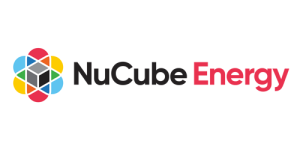
During my externship with NuCube Energy, I was tasked with supporting a renewable energy company for a small-scale solar energy installation in a local community. The project involved developing my knowledge of Python and coding so that I could help create test programming for computers to communicate with energy source, using the site’s solar potential, analyzing energy demand, and evaluating the economic and environmental viability of the proposed system. Although due to unforeseen medical incidents and treatment, I was unable to finish my externship, I learned a lot about programming and its applications for the nuclear energy industry.
Goals & Intended Outcomes:
Goals: The primary goal was to determine whether a solar installation could meet the community’s energy needs while reducing reliance on fossil fuels. Secondary goals included building community support for renewable energy and providing NuCube Energy with actionable insights to refine their project deployment strategy.
Intended Outcomes:
The project aimed to produce a comprehensive feasibility report outlining technical specifications, cost estimates, potential energy savings, and carbon emission reductions. Additionally, it sought to enhance NuCube Energy’s reputation as a leader in community-driven energy solutions and provide a replicable model for similar projects.
Impact on Career Knowledge & Teaching Style:
Career Knowledge: The externship deepened my understanding of renewable energy systems, particularly the interplay between technical design, economic constraints, and community needs. I gained hands-on experience with tools used in the energy sector, which enhanced my technical credibility. Exposure to project management and policy considerations (e.g., local incentives for renewables) broadened my perspective on career paths, from engineering to energy consulting. This experience also highlighted the importance of interdisciplinary skills like communication and collaboration, which I now see as vital for advancing in the sustainable energy field.
Teaching Style:
Reflecting on the project’s collaborative and iterative process, I now emphasize active learning and real-world applications when mentoring others. For example, I incorporate computer programming languages and PBL based on my externship project into discussions, encouraging students or peers to analyze data and propose solutions as I did. I also value self-assessment and goal-setting, inspired by the externship’s emphasis on these practices, to help learners take ownership of their development. My teaching style has become more interactive, using presentations and group exercises to mirror the dynamic workplace discussions I experienced.
Grade Level and Subject Taught: HS Math (Algebra I-Pre Calculus)
Kilee Willis Novus Auto Glass
 As a first-year iSTEM Externship program participant, I had the opportunity to complete my externship at Novus Auto Glass. I was tasked with learning about the auto glass repair and replacement process. The goal was to better understand how science, math, and technology are used in the field and to bring that knowledge back to my students. During my time at the host site, I observed and assisted with glass repairs, learned about the tools and materials used, and interviewed staff about their career paths. I am excited to use what I have learned and integrate it into lessons that highlight real-world applications of STEM. This experience has helped me see the value of hands-on learning and made me more intentional about showing students how classroom content connects to real jobs.
As a first-year iSTEM Externship program participant, I had the opportunity to complete my externship at Novus Auto Glass. I was tasked with learning about the auto glass repair and replacement process. The goal was to better understand how science, math, and technology are used in the field and to bring that knowledge back to my students. During my time at the host site, I observed and assisted with glass repairs, learned about the tools and materials used, and interviewed staff about their career paths. I am excited to use what I have learned and integrate it into lessons that highlight real-world applications of STEM. This experience has helped me see the value of hands-on learning and made me more intentional about showing students how classroom content connects to real jobs.
Grade Level and Subject Taught: 1st, All Subjects
Kristopher Wallaert at Exyte
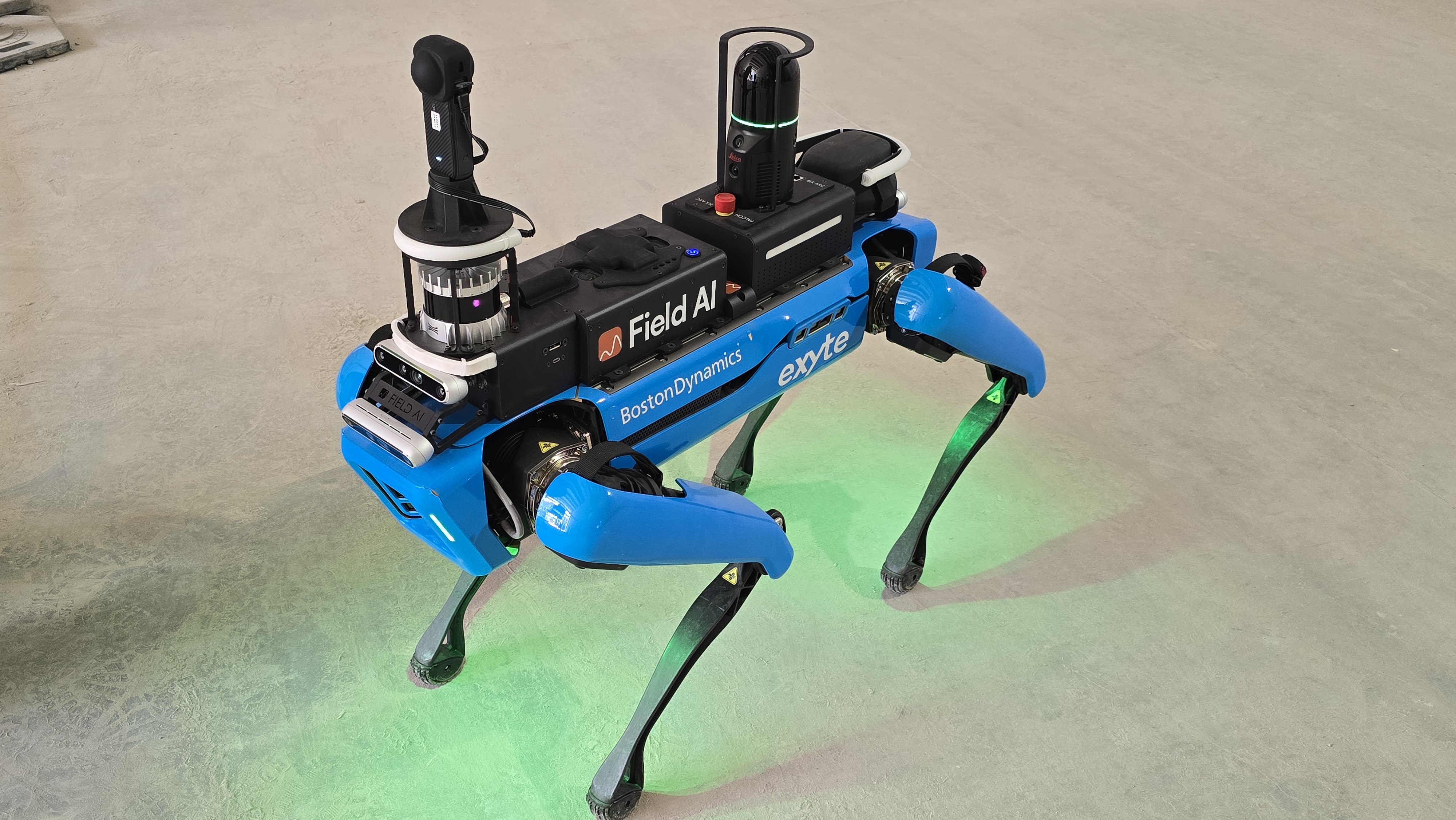 An Inside Look: My Transformative Externship with Exyte
An Inside Look: My Transformative Externship with Exyte
I recently had the incredible opportunity to participate in an externship with Exyte, a leading firm in design, construction, and engineering. They’re currently working on a massive project: building Micron’s new chip manufacturing facility. Stepping into this externship, I wasn’t entirely sure what to expect. But after going through the necessary security clearance training, my days were packed with fascinating activities.
Diving Deep into Construction Tech
My time at Exyte offered an immersive dive into the cutting-edge technologies that are revolutionizing the construction industry. I got hands-on experience with the sophisticated software Exyte uses to create 3D models of the build site. A significant part of my role involved walking the site with different team members, capturing 3D videos to document the progress of various completed sections. One of the highlights was definitely getting to fly the company’s drone, taking aerial videos and photos to keep everyone updated on construction progress.
I was also introduced to a suite of software programs essential for uploading, converting, and importing all the different videos and images. This allowed users to visually track construction progress through date-compared images and videos. And get this – I even had the chance to work with Exyte’s robotic dogs on-site! These amazing machines walk the work areas, capturing LiDAR (Light Detection and Ranging) images of the construction zones.
Real-World Skills and the Future of STEM
This externship truly opened my eyes to the multitude of real-world technologies used on a modern construction site. I gained firsthand experience understanding the value of specific qualities essential for success in this field. These include:
- Strategic Planning: The critical importance of creating detailed plans and models before finalizing any product.
- Effective Collaboration: How vital it is for multiple teams to work together seamlessly, ensuring everyone understands the mission and what needs to be accomplished.
- Safety First: A profound appreciation for the absolute importance of safety on a construction site.
- Tech Savvy: Understanding and effectively utilizing the technology that ensures clear and relevant information for both design and construction.
Working with drones and robots alone showed me just how crucial it is for students to develop strong math and science skills in school. The use of AI and LiDAR technology specifically highlighted the value of teaching the precise mathematical and scientific skills that students will need to thrive in STEM-related jobs.
Bringing the Future Back to the Classroom
Overall, this externship was an incredible experience. It provided me with practical, real-world knowledge and skills that I’m excited to bring back to my students. I can now show them firsthand how learning specific math and scientific skills is absolutely vital for success in real-world careers. I’m also thrilled to share my experiences and demonstrate that working with robots and drones isn’t just science fiction—it’s a genuine and growing career field!
Grade Level and Subject Taught: 5th and 6th grade Gifted and Talented
Christopher Bowman at Micron Technology
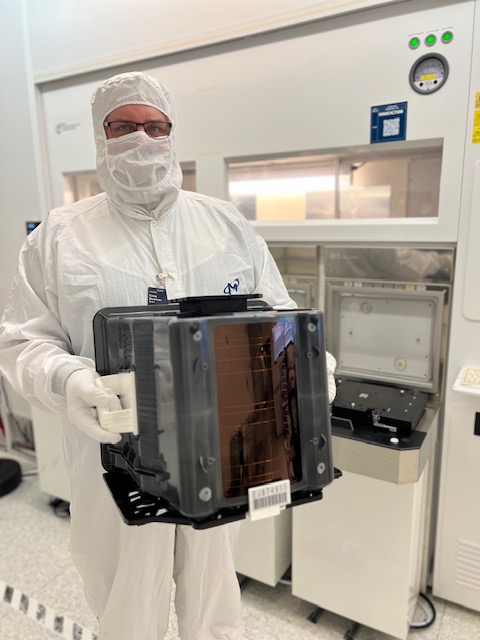 Exploring New Career Pathways: My Externship with Micron Technology
Exploring New Career Pathways: My Externship with Micron Technology
This summer, I had the incredible opportunity to work with Micron Technology on a project focused on increasing awareness and exposure for high school students—especially those in automotive programs—to careers in advanced manufacturing. With Micron’s new ID1 facility currently under construction, the company is preparing to hire around 2,000 on-site employees. This high-volume manufacturing site will produce American-made, high-quality semiconductor chips and will require a skilled workforce to operate and maintain its state-of-the-art equipment.
My goal during the externship was to help identify ways to connect students with these emerging opportunities—specifically those who may not have previously considered careers in semiconductor manufacturing.
During my time with Micron, I was immersed in the entire chip-making process, gaining firsthand experience with techniques like physical and chemical vapor deposition, chemical mechanical planarization, photolithography, ion implantation, and diffusion. One of the highlights was stepping into the clean room to work directly on the cutting-edge machines used in production. It quickly became clear that the mechanical, diagnostic, and troubleshooting skills I’ve developed through years in automotive repair are a perfect match for the work involved in maintaining semiconductor manufacturing equipment.
Before starting this externship, I had little understanding of how microchips were made—or how relevant my students’ training in automotive systems could be to careers in this field. Now, I see a clear connection between the skills we teach and the technical demands of this high-tech industry. This realization has opened up new career pathways that I can introduce to my students.
Going forward, I plan to organize student tours of Micron’s facilities, as well as the College of Western Idaho’s Mechatronics program, which Micron is actively supporting. These experiences will give students a clearer picture of the exciting, high-paying careers available in advanced manufacturing—and how their existing skills can help get them there.
Grade Level and Subject Taught:10/11/12 Automotive

